principal–agent problem
description: conflict of interest when one agent makes decisions on another's behalf
85 results
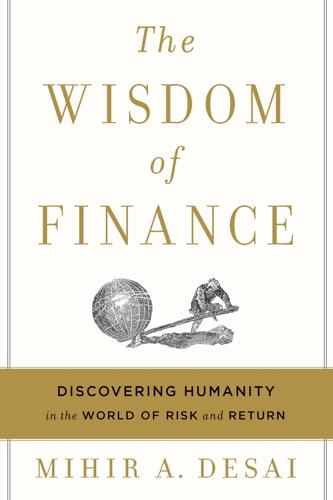
The Wisdom of Finance: Discovering Humanity in the World of Risk and Return
by
Mihir Desai
Published 22 May 2017
Positive reactions to unexpected CEO deaths, in addition to being vaguely ghoulish, are a manifestation of the basic problem that arises when owners delegate authority to managers—those managers don’t always do what they’re supposed to, and shareholders struggle to control these managers. This is the problem of corporate governance and a manifestation of the principal-agent problem. It’s also the fundamental problem of modern capitalism. You’ve undoubtedly come across a version of this problem in your own life. We all grapple with the principal-agent problem when we interact with contractors, lawyers, doctors, and just about anyone who does something for us. In these settings, we (the principals) appoint someone (an agent) to do something on our behalf (build a house, argue a case, take care of our health).
…
The fourth chapter considers what happens when the relationship between investors and the underlying productive assets they own is mediated by human beings with their own motivations. The resulting emphasis on the relationship between principals (shareholders) and agents (managers) is the problem of corporate governance—and arguably the central problem of modern capitalism. The principal-agent problem, as demonstrated by Mel Brooks’s The Producers and E. M. Forster’s A Room with a View, is also a powerful frame for situations in our life when we are, consciously or unconsciously, behaving on behalf of others. Now that companies have been introduced, we can consider when and how they should combine with each other—an activity known as merging.
…
Why don’t all entrepreneurs do what Bialystock and Bloom tried to do, and why does anyone invest in anything, given the risks that their money might end up in the hands of opportunistic managers or outright frauds? The answers to these questions illustrate the central problem of modern capitalism—the principal-agent problem—and understanding that problem provides a powerful frame for thinking about our lives. Once upon a time, capitalism was simple. Think back a few hundred years. Merchants, farmers, and storekeepers owned their businesses and managed their businesses on an everyday basis. Yes, there were departures from that—including slavery and the role of sovereigns in commerce—but I already indicated that this was a fairy tale.

Transaction Man: The Rise of the Deal and the Decline of the American Dream
by
Nicholas Lemann
Published 9 Sep 2019
As he saw it, during the quarter century after the Second World War, the self-satisfied chief executives of the largest American corporations had destroyed as much as a third of their companies’ collective value—overexpanding for reasons of vanity, signing too-generous labor agreements in order to be regarded as statesmen, and otherwise ignoring the interests of their shareholders in the ways the system permitted them to do. Now, at last, the corporation’s principal-agent problem could be solved. What was emerging from the great dismantling and rearranging of the corporation in the 1980s, Jensen felt, was a transition from the mass mispricing of corporations (because of the principal-agent problem, plus too much government regulation) to correct pricing by the market, via mergers, takeovers, and buyouts. At the end of the 1980s Jensen calculated that between 1977 and 1988, American corporations had increased in value by $500 billion as a result of the activation of the market for corporate control, and as a result, the United States had staved off what would have been an existential economic threat from Japan.
…
But then, in 1999, Goldman Sachs turned itself from a private partnership into a public company, which brought a big payday for its partners but made it subject to Jensen’s bête noire, the principal-agent problem, because now the owners of the firm—the new public shareholders—were not the people running it. Eventually even some of the private equity firms that Jensen thought of as the perfect solution to the principal-agent problem, such as KKR and Blackstone, went public too, so they were no longer owner-managers either; they also started to make more and more of their money by charging fees to investors instead of increasing the value of their holdings.
…
In 2002 Jensen and a coauthor published an article with the wildly uncharacteristic title “Just Say No to Wall Street,” which treated the financial markets’ preoccupation with quarterly earnings as a major impediment to good management. In 2004 he published an article arguing that, in effect, the principal-agent problem he had identified back in 1976 had now been turned on its head: rather than the great power shift from big corporations to the financial markets having solved the problem, the markets themselves had now become the main source of the principal-agent problem. By pressuring companies to keep raising their stock price, they were creating malign incentives for executives to misstate the condition of their companies and to make bad acquisitions that would look brilliant at first glance.
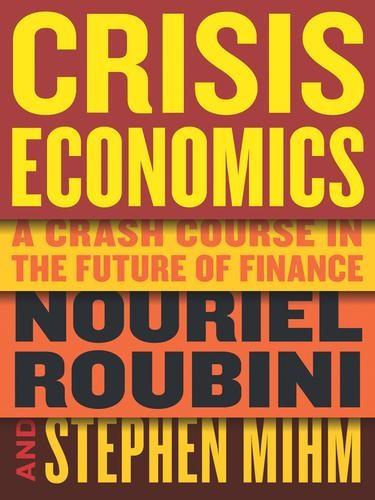
Crisis Economics: A Crash Course in the Future of Finance
by
Nouriel Roubini
and
Stephen Mihm
Published 10 May 2010
The answer lies with what economists call the principal-agent problem. In large-scale capitalist enterprises, the principals (the shareholders and board of directors) must hire other people such as managers (the “agents”) to carry out their wishes and mind the store. Unfortunately, the agents invariably know more about what’s going on than the principals and can pursue their own self-interest to destructive effect. Think, for example, of the problem of a store owner who has employees minding the cash registers. This is a very basic example of the principal-agent problem. It’s obviously in the interest of the store owner to have employees behave honestly and not line their own pockets.
…
Worse, the problem here is no longer that employees will steal, but that they will use the firm’s resources to place outsize, risky bets in order to collect the maximum bonus, even if that means putting the firm in jeopardy. This, more or less, is the structure of a typical financial firm, and the dangers of this arrangement became increasingly evident over the course of the recent financial crisis. The collapse of AIG may be the most extreme example of the dangers of moral hazard, principal-agent problems, and asymmetric information. There, the actions of a small group of employees based in London brought the entire company to its knees, along with the global financial system. In theory, shareholders should be able to prevent such disasters: they are the last link in the chain, the ultimate owners of the financial firm.
…
Put differently, while torches and pitchforks may seem appropriate under the circumstances, it’s wiser to step back and dispassionately evaluate the options. First, contrary to conventional wisdom, the biggest problem with compensation is not the amount of money involved; it’s the way this compensation is structured and delivered. Much research on corporate governance suggests that any corporate environment is apt to suffer from the principal-agent problem, which we discussed in chapter 3. That is, modern corporations are run not by the shareholders (the principals) but by managers (the agents). These two groups don’t see eye to eye: the shareholders want to maximize their long-run returns from ownership of the company, but the managers want to maximize their short-term income, bonuses, and other forms of compensation.
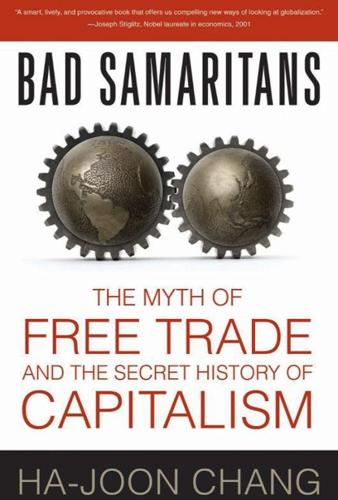
Bad Samaritans: The Myth of Free Trade and the Secret History of Capitalism
by
Ha-Joon Chang
Published 26 Dec 2007
For example, when the hired manager says that she has done her best and that the poor performance is due to factors beyond her control, the principal will find it very difficult to prove that she is lying. The difficulty of the principal controlling the agent’s behaviour is known as the ‘principal-agent problem’ and the resulting costs (that is, the reduction in profits due to poor management) the ‘agency cost’. The principal-agent problem is at the centre of the neo-liberal argument against SOEs. But this is not the only cause of inefficiency of state ownership of enterprises. Individual citizens, even if they theoretically own the public enterprises, do not have any incentives to take care of their properties (the enterprises in question) by adequately monitoring the hired managers.
…
Not only can they do (and, in many cases, have done) well, under certain circumstances they may be superior to private-sector firms. The pitfalls of privatization As I have pointed out, all the alleged key causes of SOE inefficiency – the principal-agent problem, the free-rider problem and the soft budget constraint – are, while real, not unique to state-owned enterprises. Large private-sector firms with dispersed ownership also suffer from the principal-agent problem and the free-rider problem. So, in these two areas, forms of ownership do matter, but the critical divide is not between state and private ownership – it is between concentrated and dispersed ownerships.
…
The agents (managers) do not maximize enterprise profits, while it is impossible for the principtals (citizens) to make them do so, because of the inherent deficiency in information they possess about the agents’ behaviour and the free-rider problem amongst the principals themselves. On top of this, state ownership makes it possible for enterprises to survive through political lobbying rather than through raising productivity. But all three arguments against state ownership of enterprises actually apply to large private-sector firms as well. The principal-agent problem and the free-rider problem affect many large private-sector firms. Some large companies are still managed by their (majority) owners (e.g., BMW, Peugeot), but most of them are managed by hired managers because they have dispersed share ownership. If a private enterprise is run by hired managers and there are numerous shareholders owning only small fractions of the company, it will suffer from the same problems as state-owned enterprises.

Bad Samaritans: The Guilty Secrets of Rich Nations and the Threat to Global Prosperity
by
Ha-Joon Chang
Published 4 Jul 2007
For example, when the hired manager says that she has done her best and that the poor performance is due to factors beyond her control, the principal will find it very difficult to prove that she is lying. The difficulty of the principal controlling the agent’s behaviour is known as the ‘principal-agent problem’ and the resulting costs (that is, the reduction in profits due to poor management) the ‘agency cost’. The principal-agent problem is at the centre of the neo-liberal argument against SOEs. But this is not the only cause of inefficiency of state ownership of enterprises. Individual citizens, even if they theoretically own the public enterprises, do not have any incentives to take care of their properties (the enterprises in question) by adequately monitoring the hired managers.
…
Not only can they do (and, in many cases, have done) well, under certain circumstances they may be superior to private-sector firms. The pitfalls of privatization As I have pointed out, all the alleged key causes of SOE inefficiency – the principal-agent problem, the free-rider problem and the soft budget constraint – are, while real, not unique to state-owned enterprises. Large private-sector firms with dispersed ownership also suffer from the principal-agent problem and the free-rider problem. So, in these two areas, forms of ownership do matter, but the critical divide is not between state and private ownership – it is between concentrated and dispersed ownerships.
…
The agents (managers) do not maximize enterprise profits, while it is impossible for the principtals (citizens) to make them do so, because of the inherent deficiency in information they possess about the agents’ behaviour and the free-rider problem amongst the principals themselves. On top of this, state ownership makes it possible for enterprises to survive through political lobbying rather than through raising productivity. But all three arguments against state ownership of enterprises actually apply to large private-sector firms as well. The principal-agent problem and the free-rider problem affect many large private-sector firms. Some large companies are still managed by their (majority) owners (e.g., BMW, Peugeot), but most of them are managed by hired managers because they have dispersed share ownership. If a private enterprise is run by hired managers and there are numerous shareholders owning only small fractions of the company, it will suffer from the same problems as state-owned enterprises.

Circus Maximus: The Economic Gamble Behind Hosting the Olympics and the World Cup
by
Andrew Zimbalist
Published 13 Jan 2015
Consider the following stylized model of the bidding process. In each of the three cases, there is a monopoly seller of hosting rights (either FIFA or the IOC). Case One —Perfect information and no principal-agent problem —Outcome: Expected net gains are bid away In this case, it is assumed that the IOC or FIFA each has complete information about the bidders and each of the bidders has complete information about its own bid and those of its competitors. It is further assumed that there is no principal-agent problem. This means that the body representing the city or country (the local organizing committee) fairly represents the interests of the entire resident population.
…
The result is a net financial loss and a net overall loss, even though the organizing committee (agent) in this case is still assumed to fairly represent the interests of the local population (the principal). Case Three —Imperfect information and a principal-agent problem —Outcome: outlandish overbid This case moves yet closer to reality by acknowledging a principal-agent problem. That is, the local organizing committee, the agent, is controlled by the private interests that stand to gain the most from hosting, and these interests are not coincident with those of the host country's or city's population (the principal).
…
Note that if the overall return to hosting approaches zero, and if there are feel-good benefits from hosting, this implies that there will be a negative financial result. That is, the host will have to pay to achieve the feel-good effects, bringing the overall net return to zero.3 This case is the most favorable for the bidding cities or countries. It is also the least realistic of the three cases. Case Two —Imperfect information and no principal-agent problem —Outcome: winner's curse and net loss The sole difference between this case and the prior one is that the assumption of perfect information is dropped, making case 2 a better approximation of reality. In this case, each bidder does not know what its potential benefits and costs might turn out to be when it participates in the bidding competition.

Superintelligence: Paths, Dangers, Strategies
by
Nick Bostrom
Published 3 Jun 2014
This is the problem that a project faces when it seeks to ensure that the superintelligence it is building will not harm the project’s interests. This part, too, can be thought of as a principal–agent problem—the second principal–agent problem. In this case, the agent is not a human agent operating on behalf of a human principal. Instead, the agent is the superintelligent system. Whereas the first principal–agent problem occurs mainly in the development phase, the second agency problem threatens to cause trouble mainly in the superintelligence’s operational phase. Exhibit 1 Two agency problems The first principal–agent problem • Human v. Human (Sponsor → Developer) • Occurs mainly in developmental phase • Standard management techniques apply The second principal–agent problem (“the control problem”) • Human v.
…
CHAPTER 9 The control problem If we are threatened with existential catastrophe as the default outcome of an intelligence explosion, our thinking must immediately turn to the search for countermeasures. Is there some way to avoid the default outcome? Is it possible to engineer a controlled detonation? In this chapter we begin to analyze the control problem, the unique principal–agent problem that arises with the creation of an artificial superintelligent agent. We distinguish two broad classes of potential methods for addressing this problem—capability control and motivation selection—and we examine several specific techniques within each class. We also allude to the esoteric possibility of “anthropic capture.”
…
More specifically: how can the sponsor of a project that aims to develop superintelligence ensure that the project, if successful, produces a superintelligence that would realize the sponsor’s goals? We can divide this control problem into two parts. One part is generic, the other unique to the present context. This first part—what we shall call the first principal–agent problem—arises whenever some human entity (“the principal”) appoints another (“the agent”) to act in the former’s interest. This type of agency problem has been extensively studied by economists.1 It becomes relevant to our present concern if the people creating an AI are distinct from the people commissioning its creation.
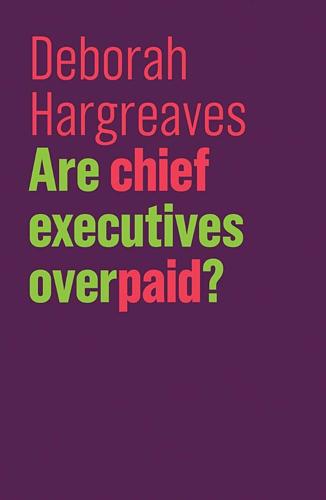
Are Chief Executives Overpaid?
by
Deborah Hargreaves
Published 29 Nov 2018
Non-execs on the board, and particularly the remuneration committee, are also required to bear in mind that they are representing the owners or stewards of the company; the shareholders. Remuneration committee members should be consulting shareholders and their representatives regularly on executive pay. Principal–agent problem The need for a dialogue between directors and shareholders stems from academic work that was doing the rounds of US business schools in the 1970s. This work on the so-called principal–agent problem explored the relationship between so-called owners of a company – the principals (or shareholders) – and their agents (the management). In the 1970s, shareholders had not done well out of the companies they invested in, and there was a feeling that managers were running them as their own personal fiefdoms.
…
Contents Cover Copyright Foreword 1 Who Wants To Be a Millionaire? How the numbers add up Upwards ever upwards Changing climate ticks up top pay How companies work Principal–agent problem Money-making becomes sexy Recovering economy pushes up shares Time men of the year Business at the heart of government Rewarding top talent Who sets top pay Notes 2 Just Deserts? Wealth creators deserve rewards What goes up, should come down What constitutes an executive pay packet? Payment in shares Performing relatively well Rewards for failure More money for posh macs How much effect do chief executives have?
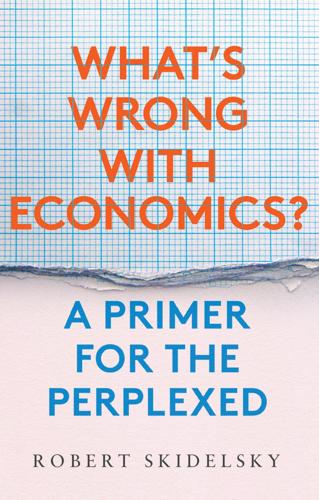
What's Wrong With Economics: A Primer for the Perplexed
by
Robert Skidelsky
Published 3 Mar 2020
The causation is one-way: from the individual to the group. The group has no power to modify individual interest, only to secure its most efficient expression. But the new institutionalists have identified a flaw that makes all institutions precarious as agents of individual purpose: the principal-agent problem, a form of moral hazard which describes a mismatch between people’s incentives and responsibilities. The principal wants to maximise something and the agent is employed to act on the principal’s behalf. The problem arises from the fact that the information possessed by the principal and the agent is unequal, or asymmetric.
…
As Buchanan has written, the main interest of the ‘public choice’ school is in ‘the utility-maximising behaviour of those who might be called on to supply the public goods and services demanded by tax-paying voters’.9 In the case of the state, officials are said to maximise their own utilities and attend to the interest of the voters only after they have achieved their own required surplus. In the case of the firm, managers attend to the interests of shareholders only after they have achieved their own private goals. Neoclassical economists have typically seen self-regulating professions as cartels extracting ‘rents’ from their users. The principal-agent problem stalks neoclassical economics as a grim health warning, and with it an unequivocal message: do all you can to reduce the costs for individuals of transacting directly in markets. It suggested a rationale for the Thatcher-Reagan privatisation policies of the 1980s, and the outsourcing of public functions to private firms.
…
Even prisons, that classic emblem of state power, which now incarcerate an increasing proportion of the population, are leased out to competitive tender. The insight that agents subvert the goals of principals grossly underestimates the natural identification of managers, officials, and employees with the goals of the organisations they serve. The only solution to the principal-agent problem that neoclassical economists can suggest is to improve the incentives for agents not to cheat on their principals. In the aftermath of the financial crash of 2007–2008, which exposed widespread fraud, the talk was of the need to ‘align’ bankers’ incentives with honest dealing. Performance-related pay for teachers is another example.
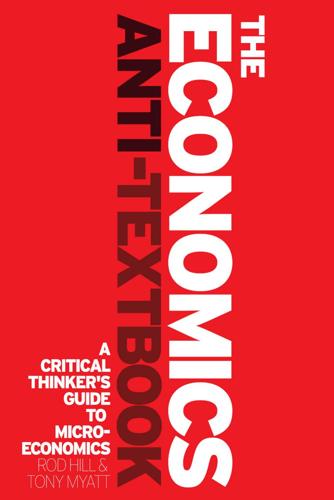
The Economics Anti-Textbook: A Critical Thinker's Guide to Microeconomics
by
Rod Hill
and
Anthony Myatt
Published 15 Mar 2010
Shareholders versus managers The imbalance of power between owner-shareholders and their elected board of directors on the one hand, and the managers they appoint on the other, has been recognized for a long time. Theory asserts that profit maximization is the firm’s sole objective, but managers can have their own objectives. This is an example of the principal-agent problem, studied intensively by economists in recent decades. The principals (shareholders) seek ways to get their agents (the board of directors) to appoint managers (the agents of both shareholders and the board) to maximize profits. They face two important difficulties. The first is imperfect and asymmetric information; managers have better information about the firm’s true performance and the nature of their own efforts.
…
(We will have more to say about credit markets, and how asymmetric information and limited rationality played major roles in the global financial meltdown of 2008/09, in the Postscript.) Asymmetric information gives rise to a cluster of well-known problems. First, it allows some people to benefit at the expense of those they are supposed to serve – the so-called ‘principal agent’ problem. Second, it contributes to ‘moral hazard’, where incentives are changed by certain kinds of contracts. (For example, individuals may have less incentive to prevent fires after buying fire insurance, and asymmetric information means that we can’t easily monitor this changed behaviour.) Third, it contributes to ‘adverse selection’, where particular contracts disproportionately attract undesirable customers.
…
Stock options give the holder the right to buy company stock in the future, at prices prevailing when the options are issued. Ironically, stock options grew out of improvements in economic theory that recognized the importance of imperfect and asymmetric information in causing a potential conflict of interest between owners and management – a conflict referred to as the ‘principal agent’ problem (which we also discuss in Chapter 5).11 This helped fuel the ‘shareholder value’ movement of the 1980s, which aimed to resolve the problem by making management compensation more dependent on 500 400 12,000 Dow Jones Industrial Average Ratio of average CEO total pay (including options valued at grant-date) to average annual earnings of production workers 10,000 8,000 Ratio of average CEO salary and bonus to average annual earnings of production workers 300 200 6,000 4,000 100 0 1970 2,000 0 1974 1978 1982 1986 1990 1994 1998 2002 figure 8.9 Dow Jones Industrial Average and CEO pay relative to average pay, 1970–2002 Source: Hall and Murphy (2003: 63, Figure 2) 192 Dow Jones Industrial Average Ratio of CEO pay to worker pay 600 company stock price performance.
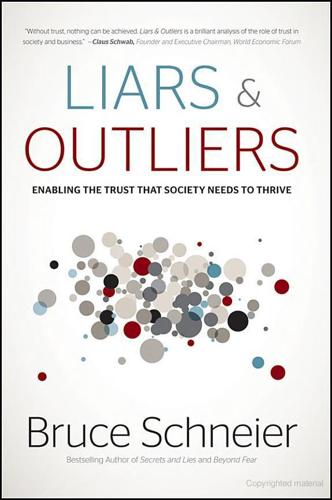
Liars and Outliers: How Security Holds Society Together
by
Bruce Schneier
Published 14 Feb 2012
Institutional: Organizations have all sorts of rules about employee behavior. Employees are supervised. Firing, promotions, and raises are all tied to performance—at least in theory. Security: Time cards, auditing, employee monitoring, formal performance reviews, and so on. In economics, this is known as the principal–agent problem: the principal (in this case the organization) hires an agent (the employee) to pursue the principal's interests, but because the competing interests of the principal and the agent are different, it can be difficult to get the agent to cooperate. Defection isn't all-or-nothing, either. Defections can be as diverse as coming in late, not working very hard, venting, whining, passive-aggressive behavior with coworkers, stealing paper clips from the office supply closet, or large-scale embezzlement.
…
The result of all this is that, by leaving the security to the owner, we don't get enough of it. In general, the person responsible for a risk trade-off will make the trade-off that is most beneficial to him. So when society designates an agent to make a risk trade-off on its behest, society has to solve the principal–agent problem and ensure that the agent makes the same trade-off that society would. We'll see how this can fail with government institutions in the next chapter; in this case, it's failing with corporations. Think back to the sandwich sellers in the local market. Merchant Alice is one of those sandwich sellers, and a dishonest, unscrupulous one at that.
…
For example, while the king might decide that the country will go to war and all able-bodied men are to be drafted into the army, he won't decide what sorts of security measures will be put in place to limit defectors. Society delegates the implementation of societal pressures to some subgroup of society. Generally these are institutions, which I'll broadly define as an organization delegated with implementing societal pressure. We've already discussed delegation and the principal–agent problem. We're now going to look at how that plays out with institutions. In 2010, full-body scanners were rushed into airports following the underwear bomber's failed attempt to blow himself up along with an airplane. There are a lot of reasons why the devices shouldn't be used, most notably because they can't directly detect the particular explosive the underwear bomber used, and probably wouldn't have detected his underwear bomb.

Career and Family: Women’s Century-Long Journey Toward Equity
by
Claudia Goldin
Published 11 Oct 2021
Upper-level management, especially the CEOs, would like to cut down on the long and often unpredictable hours that have become the norm for most of the younger workers. The senior partner I met was trying to solve this principal-agent problem. The big guns of Wall Street—Goldman Sachs, J.P. Morgan, Citigroup, Bank of America, Morgan Stanley, Barclays, and Credit Suisse—have also decided to create better incentives and reduce the principal-agent problems that plague the retention of young blood in their firms. The behemoths of finance have begun to create rules about protected weekends and evenings, paid sabbaticals, mandated vacations, and faster paths to promotion.
…
He went from office to office across the US, asking the associates and consultants whether they were overworked, treated unfairly, or underappreciated. Regardless of his role’s efficacy, the fact that a large company has a person and a staff dedicated to policing the higher-ups means that they appreciate there is a problem. And the problem has a name: the principal-agent problem. Middle-level managers have an incentive to work their teams hard. The manager gets the credit for the great reports and contented clients. But the rest of the company suffers when talent exits and teams fall apart. The agents (middle-level managers and partners) are insufficiently incentivized to follow the directives of the principal (senior partners and the CEO).
…
See also birth rates; childbearing and childrearing; pregnancy Fey, Tina, 133, 236 financial and business careers: advanced degrees for, 198; career progression in, 197–98, 201–2; gender earnings gap in, 162–67, 163, 169–70, 170, 173–74, 288–89nn162, 166, 169; greedy work in, 10; Group Two women in, 69, 81; Group Four women in, 112, 129, 129; Group Five women in, 149, 149; leaky pipeline phenomenon and response in, 200, 202, 203–4; nepotism bars in, 81; percentage of women in, 200, 203–4, 292n200, 293n204; perfect substitution in, 194; principal-agent problem in, 202 Finkenauer, Abby, 147 flexibility of time: COVID period, 206, 237 (see also work from home); decreasing cost of, 195, 209, 218–19, 237; for doctors, 211–14; in financial and business careers, 149, 167, 204; gender earnings gap and, 11–13, 175, 184, 185–86; greedy work not offering, 11–13; income decline with, 11–13, 12; for pharmacists, 191–92; value of, 208, 293n208; work structure changed to include, 16 flight attendants, 80, 273n80 Fogel, Robert W., 48 Food and Drug Administration (FDA), 7, 109, 120 France, childcare in, 219, 232, 296n219 Friedan, Betty: biography of, 273n86, 275n90; education of, 90, 275n90; The Feminine Mystique by, 28, 30, 31, 85–87, 92, 97; in Group Two, 24, 28, 236; Group Three critique by, 85–87, 92, 95, 96–97, 101, 108; on “problem with no name,” 1; second-wave feminism ignited by, 85 Friends (TV show), 282n133 Gardner, Erle Stanley, 176 gender bias: antibias or diversity training addressing, 155; gender earnings gap and, 1, 155, 177, 182; labor force departure due to, 200; as term, 1.
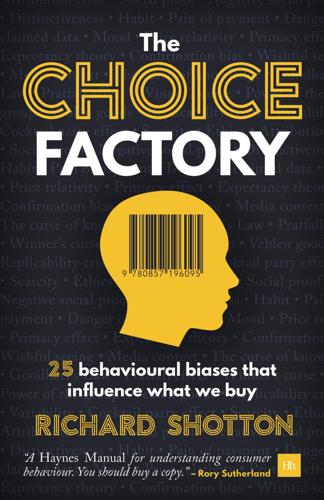
The Choice Factory: 25 Behavioural Biases That Influence What We Buy
by
Richard Shotton
Published 12 Feb 2018
If it’s a successful approach, why is it rare? I have listed half a dozen examples of the pratfall effect and there are a handful of others. But they stretch over a period of nearly 60 years, making them a minuscule proportion of the tens of thousands of ads that have run over that time. Why? The rarity is explained by the principal-agent problem, a theory first suggested by Stephen Ross, Professor of Finance at the MIT Sloan School of Management. He suggested that there is a divergence between the interest of the principal in a company, the shareholders, and the agent, the staff. What is in the interest of the brand, the principal, is not in the interest of the marketing manager, the agent.
…
Imagine explaining to your CEO as sales dive that the key message of your campaign was that the brand was expensive. Even referencing Aronson’s research won’t save you. For those prepared to embrace a modicum of career risk then the best chance of growing your brand is to flaunt your flaws. The principal-agent problem ensures it will always be a distinctive approach. For those interested in safe career progression then you may want to consider another route, such as avoiding the winner’s curse. Luckily for you that’s what the next chapter is about. Bias 19: Winner’s Curse Why digital media buying is blighted by it You’re up to date on your emails, so you decide to take a moment to check eBay – you’re bidding for a Game of Thrones box-set and the auction is due to end this afternoon.
…
Index 118 118 ad campaigns ad design ad messaging advertising advertising expenditure Alter, Adam anchoring Anderson, Eric Apple iPod Ariely, Dan Aristotle Arkes, Hal Aronson, Elliot Asch, Solomon auctions Audi Avis Banks, Iain banner ads Batey, Ifan Batson, Daniel behaviour contexts Behavioural Insight Team behavioural science Bernbach, Bill biases Binet, Les Black Sheep Vodka Borges, Jorge Louis brand flaws brand ideals brand measurement brand purpose brand reviews brand tracking brands Brink, Lois British Airways ads broken escalator phenomenon Bronner, Fred Brooks, Roy Brown, Millward brownies example browser choice Bruner, Jerome budget airlines budget setting see advertising expenditure Bullmore, Jeremy business growth business success Busse, Meghan bystander effect camera experiment Camerer, Colin Campbell’s soup experiment canned laughter Cantril, Hadley car deals examples card payments category norms CBS Outdoor and TNS cell methodology charity campaigns charm pricing Cherry, Colin Christiaensen, Luc Cialdini, Robert Cimbalo, Richard cinema ads claimed data Clay, Richard cocktail party effect cognitive illusions coin exaggeration Comparethemarket comparison sets confirmation bias Confused consumer overconfidence consumers habits contactless cards contexts behaviour media target cookies example Copernicus Consulting copywriting Corrigan, Spencer Costa coffee credit cards customer reviews Darley, John De Beers diamonds de Crane, Anton Deaux, Kay Deppe, Michael descriptive norms diamonds see De Beers diamonds diary-based experiment digital ads digital brand tracking direct mail discounts distinctiveness distraction dress sales experiment Dunning, David Dzamic, Lazar Ebbinghaus, Herman Eno, Brian estate agents ethics evaluation expectancy theory explicit messages fake beer experiment fake brands Fanelli, Daniele Ferguson, Alex Festinger, Leon Field, Peter first impressions football sponsorships Ford found data fundamental attribution error general election, UK Genovese, Kitty Genovese syndrome see bystander effect Gilbert, Dan Give Blood campaign, NHS gluten-free products Gocompare Goldstein, Noah good mood Goodhart’s Law Goodman, Cecile Gossett, William Sealy green goods Griffiths, Dylan Griskevicus, Vladas groups Guinness Gumroad habits Haidt, Jonathan Halifax Halpern, David Harford, Tim Hastorf, Albert heavy buyers Hegarty, John Hershfield, Hal Hobday, Gabrielle Hoffman, Bob Housman, Michael injunctive norm IPA Effectiveness Databank isolation effect JC Decaux Jenkins, Jeff Jones, John Joyner, Cynthia Jung, Carl Kahneman, Daniel Kandasamy, Anna Kay, John King Cobra beer knowledge Kruger, Justin labelling lager choice example Larrey, Dominique Jean Latané, Bibb leading brands Leahy, Terry Levenson, Bob lies life events Linford, Claire localisation loss aversion Lumen Research Maccoby, Nathan Maclean, Laura Magners cider male incontinence brand Manchester United Many Labs Replication Project market leaders marketing marketing managers marketing triage Martin, Steve maximisers McDonald’s media contexts medical practice method planning mimicry Mirenberg, Matthew Moneysupermarket mood Moseley, Winston motivation music musicians National Survey of Sexual Attitudes and Lifestyle (NATSAL) Neale, Margaret negative opinions negative social proof Nespresso new energy provider example New Look campaign newspaper ads Newton, Elizabeth NHS Give Blood campaign nine-enders Nokia nominative determinism Northcraft, Gregory Nosek, Brian nudges Nurse Family Partnership observed behaviour observed data Ocado O’Callaghan, Aidan online advertising overconfidence painkillers payment methods contactless cards credit cards Pelham, Brett perfume experiment Perry, Katy personal appeal personalisation persuasion petrified wood experiment placebo effect Polkinghorne, Vic popularity pratfall effect Prelec, Drazen pre-paid gift cards presentation Prezzo, Mark price price illusions price relativity primacy effect principal-agent problem product flaws programmatic advertising promotions Quinn, Jeffrey Raghubir, Priya recall Red Bull rejecters replicability Restorff, Hedwig von Riddell, Jenny Rosenzweig, Phil Ross, Lee Ross, Stephen Rosser Reeves fallacy Rudder, Christian Sainsbury’s satisficers scarcity serial position effect sexism sexual partners Shapiro, Matthew Sharp, Byron Sherif, Muzafer Shiv, Baba Shotton, Richard ad design Black Sheep Vodka brand purpose charity campaigns contactless cards fake beer experiment general election good mood green goods lager choice leading brands life events loss aversion male incontinence brand New Look campaign nine-enders overconfidence perfume experiment product flaws scarcity spending patterns sponsorships thought experiment value perception shower gel example Shteynberg, Garriy Simester, Duncan Simon, Herbert Simonsohn, Uri Simonson, Itamar Slovic, Paul Snickers chocolate bars social media social proof negative spending patterns sponsorships Srivastava, Joydeep Stella Artois Stengel, Jim Stengel Stephens-Davidowitz, Seth Street Bump app, Boston Strong, Rebecca supermarkets surveys Sutherland, Rory Svenson, Ola switched brands tailored approach target audiences target contexts target setting targeting ads tax payments Tesco Thaler, Richard The Wasp Factory (Banks, 1984) thought experiment time frames Total Recall Touchpoints towel experiment tracking data transparency Trott, Dave TV ads Tversky, Amos unintended consequences Vallance, Charles value perception video-conferencing Vietnam visual illusions vitamins example Von Restorff effect VW ad campaign Wansink, Brian waste websites Weston, Laura wheel of fortune example Whiskas Wikipedia Wilcox, Keith winner’s curse wishful seeing Wood, Wendy Worchel, Stephen Yahoo younger age groups Zettelmayer, Florian Zhang, Yong Zinkan, George

Trading and Exchanges: Market Microstructure for Practitioners
by
Larry Harris
Published 2 Jan 2003
The order flow externality generally ensures that one market among a set of closely related markets will eventually dominate the others. Pay attention to markets that trade similar instruments and to the differences among them that make them unique. These issues affect how markets compete with each other. Principal–agent problems Principal–agent problems arise when agents do what they want to do rather than what their principals want them to do. The most important principal–agent problem in market microstructure involves brokers and their clients. Brokers do not always do what you want them to do, and they may not work as hard on your behalf as you would. Pay close attention to how traders control their brokers.
…
These scale economies explain much of the consolidation that has occurred in the brokerage industry since the introduction of automated information-processing systems. To compete in the presence of such scale economies, most small brokerage firms are introducing brokers that purchase trade execution and back office services from larger firms. ◀ * * * 7.4 THE PRINCIPAL-AGENT PROBLEM Whenever someone works for someone else, a potential conflict of interest arises. This problem is the well-known principal-agent problem. It is the principal problem of management. Agents are supposed to do what their principals want them to do, but the agents often do what the agents want to do. Brokers are agents who help their clients trade. The clients expect that their brokers will work hard and honestly.
…
If you are interested in these distinctions, you must ask how the order matching done by traditional brokers differs from the order matching done by automated systems. We begin this chapter by considering how brokers serve their clients, how they organize their operations, and what determines their profits. We then discuss how the most important management problem—the principal-agent problem—affects brokers and their clients. The chapter closes with a discussion of problems that traders can have with dishonest brokers, and how traders can prevent these problems. 7.1 WHAT BROKERS DO Brokers arrange trades for their clients. They search for traders who are willing to trade with their clients; they represent their clients at exchanges; they arrange for dealers to fill their clients’ orders; they introduce their clients to electronic trading systems; and they match their clients’ buy and sell orders.

Markets, State, and People: Economics for Public Policy
by
Diane Coyle
Published 14 Jan 2020
In addition, a real-world factor is that public officials responsible for procurement often have little relevant business experience, tend to be junior with little autonomy to use their judgment, and are generally required to go for the lowest-cost bid. Contracting out can deliver improved public service outcomes, but is most likely to succeed where it is possible to have reasonably complete contracts and where outcomes can be monitored in a straightforward and timely way. Box 7.8. Principal-agent problems Principal-agent problems are widespread in the economy—after all, economic growth is a matter of exchanges whereby somebody else performs a service or produces a good you need. There is a large academic literature on the subject.* One example is the management of a company acting as an agent for the owners (shareholders, the principals).
…
If you make this assumption—in other words, assuming that externalities or increasing returns to scale are rare, public goods occur infrequently, and so on—then the circular conclusion that collective action is unnecessary is bound to follow. In fact, the tools of empirical economics offer a good deal of insight into policy questions—the subject of the next chapter. Further Reading Technical Follow-Up Sanford Grossman and Oliver Hart (1983), “An Analysis of the Principal-Agent Problem,” Econometrica 51: 7–46. Oliver Hart, Andrei Shleifer, and Robert W. Vishny (1997), “The Proper Scope of Government: Theory and an Application to Prisons,” Quarterly Journal of Economics 112, no. 4:1127–1161. Jean-Jacques Laffont and Jean Tirole (1993), A Theory of Incentives in Procurement and Regulation, MIT Press.
…
See efficiency Paris Metro, 308 partial equilibrium, 13, 47 patent box, 129–30 patents, 51, 61, 80 patent trolls, 151 paternalism, 172, 173, 195, 196–97 payday loans, 189 peak loading problem, 84 peer-to-peer lending, 81 Peltzman effect (risk compensation), 274, 275 pensions, 21, 186–87, 194, 202, 233, 251, 252 PepsiCo, 56 pharmaceuticals, 129–30, 247, 263 photovoltaics (PV), 126, 127 Pigou, Arthur, 19, 25 Piketty, Thomas, 216, 223, 226, 231 policing, 157 policy appraisal, 302–4; elements of, 303; evaluation distinguished from, 299; tools of, 297 policy evaluation: appraisal distinguished from, 299; econometric, 300–301; rarity of, 297; research on, 298, 300 political parties, 160 pollution, 13, 25, 32, 140, 147, 320 positional goods, 138, 161–62, 165, 167, 169 postal services, 21–22, 101, 104, 105 poverty, 203, 206; absolute vs. relative, 212, 213, 214 poverty gap, 213 poverty trap (welfare trap), 234, 236 power, in statistics, 301–2 PowerGen, 87 present bias (hyperbolic discounting), 183–85, 190, 316 present value, 183–84 price controls, 67, 112 price elasticity of demand, 19, 47, 79, 152 price fixing, 55 principal-agent problems, 284–86, 289 private roads, 29, 30 privatization, 69, 72, 280; of airlines, 106; defined, 108; impetus for, 109–11; mixed success of, 116–25; regulation following, 111–16; reversals of, 100–101, 103; in Turkey, 117; in United Kingdom, 87–88, 98, 100, 102–3, 114–22, 124–25, 258, 290 process innovation, 51 producer surplus, 47–49 product innovation, 51 production possibilities frontier, 10, 40 productivity: competition linked to, 46–47, 53, 110–11, 122; health linked to, 211; privatization and, 116–17, 121; of state-owned enterprises, 109 product mix efficiency (output efficiency), 10, 40 progressive taxation, 2, 7–8, 206, 208, 213, 225, 228–29, 232 Prohibition, 269 projection bias, 184 property rights, 33–34, 226, 291, 341; ambiguous, 148, 149; digital, 149, 150; over commons, 141, 145, 147, 165, 168; socially constructed, 152, 166 prospect theory, 178 PSA Peugeot Citroën, 63 public choice theory, 22–23, 256, 259–62, 271, 280, 289, 293 public goods, 1, 8, 159, 174, 243–45; examples of, 25–26, 27; features of, 28; financing of, 27–28; private goods vs., 27; pure vs. excludable, 25–26; research as, 128–29, 134 public-private partnerships, 29, 30, 100, 108, 257 public transport, 22, 80, 105, 119, 243, 245, 251, 276, 318; in London, 278, 308 public value, 327–29 Putnam, Robert, 155 quasi-hyperbolic discounting, 183–84 queuing, 140, 167 radio spectrum, 25, 31, 61, 140 railroads, 278; employment declines in, 116; fares of, 119; nationalization of, 100, 104, 125; as natural monopoly, 45, 46, 55, 61, 91, 98, 123; safety compromised in, 118 rainforest, 141 Ramsey, Frank, 312 Ramsey rule, 312, 313 RAND Corporation, 108 randomized control trials (RCTs), 298, 329–32 rationing, 142, 166–67, 168, 247 Reagan, Ronald, 22, 23, 70, 100, 256, 258 recessions, 209, 251 redistribution, 6, 227; through education, 8, 243, 251; efficiency and, 11, 225, 251; lump-sum, 14; Pareto efficiency distinguished from, 11–12, 14; through public services, 8, 243–45, 247; rationale for, 202; through taxation, 2, 7–8, 206, 208, 213, 225, 228–29, 232.

Super Thinking: The Big Book of Mental Models
by
Gabriel Weinberg
and
Lauren McCann
Published 17 Jun 2019
For instance, when financial advisers manage your money, they try to stick to your risk profile, but they are more likely to take greater risks than you would on your own, simply because it isn’t their money, and so losses do not impact their net worth as much. Agency can lead to other issues as well, collectively known as the principal-agent problem, where the self-interest of the agent may lead to suboptimal results for the principal across a wide variety of circumstances. Politicians don’t always act in the best interest of their constituents; real estate agents don’t always act in the best interest of their sellers; financial brokers don’t always act in the best interest of their clients; corporate management doesn’t always act in the best interest of its shareholders—you get the idea.
…
When she sells her own house, an agent holds out for the best offer; when she sells yours, she encourages you to take the first decent offer that comes along. Like a stockbroker churning commissions, she wants to make deals and make them fast. Why not? Her share of a better offer—$150—is too puny an incentive to encourage her to do otherwise. Moral hazard and principal-agent problems can occur because of asymmetric information, where one side of a transaction has different information than the other side; that is, the available information is not symmetrically distributed. Real estate agents have more information about the real estate market than sellers, so it is hard to question their recommendations.
…
Fixing it will require intervention either by fiat (like government regulation) or by setting up a marketplace system according to the Coase theorem (like cap and trade). Public goods (like education) are particularly susceptible to the tragedy of the commons (like poor schools) via the free rider problem (like not paying taxes). Beware of situations with asymmetric information, as they can lead to principal-agent problems. Be careful when basing rewards on measurable incentives, because you are likely to cause unintended and undesirable behavior (Goodhart’s law). Short-termism can easily lead to the accumulation of technical debt and create disadvantageous path dependence; to counteract it, think about preserving optionality and keep in mind the precautionary principle.

State-Building: Governance and World Order in the 21st Century
by
Francis Fukuyama
Published 7 Apr 2004
Another approach—more workable in the private sector than for public agencies—is to reunite owners and managers by giving the agents stock options or other forms of equity ownership.3 Economic theories about organizations, like economic theories more generally, begin from a premise of methodological individualism. That is, organizations are fundamentally understood as collections of individuals who learn to cooperate socially for reasons of individual self-interest. This perspective thus tends to emphasize conflicts of interests between members of the group (that is after all what principal-agent problems are all about) and to underplay concepts like group identity, socialization, leadership, and so forth. It is certainly worthwhile to try to understand problems of corporate governance or public corruption in principal-agent terms and to use this framework to design institutions that try to bring divergent incentives back into alignment.
…
Finally, many public sector organizations have independent bases of political power. Even if parents are organized into PTAs and are armed with plentiful information on the performance of their local schools, they may not have the political power to sanction poorly performing teachers or administrators or to reward good ones. Many organizations do not “solve” the principal-agent problem through a formal system of monitoring and accountability at all. Rather, they rely on a mixture of formal mechanisms and informal norms, which usually is a more effective way of improving the quality of low-specificity outputs. Institutional economists have been trying to deal with the problem of “hidden action” for a long time (Miller 1992).
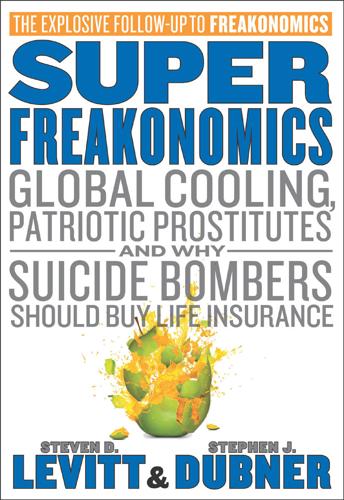
SuperFreakonomics
by
Steven D. Levitt
and
Stephen J. Dubner
Published 19 Oct 2009
The average prostitute in Chicago will turn 450 tricks before she is arrested, and only 1 in 10 arrests leads to a prison sentence. It’s not that the police don’t know where the prostitutes are. Nor have the police brass or mayor made a conscious decision to let prostitution thrive. Rather, this is a graphic example of what economists call the principal-agent problem. That’s what happens when two parties in a given undertaking seem to have the same incentives but in fact may not. In this case, you could think of the police chief as the principal. He would like to curtail street prostitution. The cop on the street, meanwhile, is the agent. He may also want to curtail prostitution, at least in theory, but he doesn’t have a very strong incentive to actually make arrests.
…
See Myhrvold, Nathan National Academy of Sciences (NAS), climate change report of, 165, 190, 191 National Association of Realtors, 56 National Automobile Dealers Association, 146 National Foundation for Infant Paralysis, 157 National Highway Traffic Safety Administration (NHTSA), 151, 152, 153 National Organ Transplant Act, 112 National Standardized Child Passenger Safety Training Program, 151 natural disasters, 175–77 natural experiments, 101 Nazis, obeying, 123 negative externalities, 8, 11, 171–173 203 neurobiology, as male field, 47–48 new ideas, as repugnant, 199–200 New York City polio epidemic in, 144 terrorism in, 66 See also Genovese, Kitty, murder of The New York Times climate change story in, 165 Genovese murder story in, 98, 99, 125–27, 128 Newsweek magazine, climate change story in, 165, 166 Nobel Prize, 12, 59, 82, 115, 117, 184, 196, 198 object-oriented programming, 69, 72 “ocean acidification,” 183–84 Olmsted, Frederick Law, 42 on-the-spot data collection, 28–29, 70–71 oncologists, 85–86 Oportunidades (Mexican welfare program), 27–28 oral sex, 33–34 organ transplants, 111–13, 124–25, 199–200 Orne, Martin, 123 Oshinsky, David M., 144,145 Oster, Emily, 6–7 Oswald, Andrew, 82 output dilemma, 188 overconsumption, dangers of, 170 ozone, 190,196,197 Palestinian suicide bombers, 62–63 panhandlers, 124 paper goods delivery, List’s experience with, 117 parents experiment about visiting, 105–6 and interviews about seat belts, 155–56 Parker, Susan W., 27–28 Pasteur, Louis, 204 perfect substitutes, 37 pilots, World War II, 147 “pimpact,” 37, 40 pimps, 37–38, 40–41, 56 police and increase in crime, 104 and pimps, 40–41 and prostitution, 32, 41, 55 and stolen cars, 174, 175 and terrorism, 66 See also Genovese, Kitty Policy Implications of Greenhouse Warming (NAS report), 190 polio, 143–45, 147, 157 politics, and prostitution, 25 popular culture, and crime, 100 population, and cheap and simple fixes, 141–42 positive externalities, 175, 176 practice, deliberate, 61 predictions, economic, 16–17 pregnancy, of prostitutes, 34 premarital sex, 31 President’s Council of Economic Advisors, 115 price for prostitutes, 24–25, 29–30, 33–37, 42, 53–54, 55 raising, 42 See also wages price insensitive, 54 principal-agent problem, 41 prisoners and guard-prisoner experiment, 123 release of, 100–102 Prisoner’s Dilemma (game), 108 professions. See careers/professions; specific profession prostitutes/prostitution and Allie, 49–55 arrest of, 32, 41 as career, 54–55 in Chicago, 23–25, 26–38, 41–42, 50–55, 70–71 clientele of, xvi, 33, 35 competition for, 30–31 and condoms, 36, 53 data about, 27 demand for, 43, 54, 55 and deviant acts, 34 downside for, 29–30 and drugs, 29, 36 and escorts, 49–55 exit strategy for, 55 as geographically concentrated, 32–33 incentives for, 19–20, 25, 41 and Internet, 40, 51 legalization of, 55 male, 36 monkey, 215, 216 need for champion for, 31–32 part-time, 42 as perfect substitutes, 37 and police, 32, 41, 55 pregnancy of, 34 price for, 24–25, 29–30, 33–37, 42, 53–54, 55 and principal-agent problem, 41 protection for, 31 and race, 32–33, 35–36 Santa-like, 43 and sellers versus users, 25–26 street, 36, 41–43, 52, 54, 71 as trophy wives, 52–53 and type of tricks, 33–35 Venkatesh study of, 26–37, 38, 40–42, 70–71 and violence, 38 women as dominant in, 23–26, 40 See also pimps puerperal fever, 133–38 race, and prostitution, 32–33, 35–36 Ramadan, 57–58, 59 rational behavior, 122–23, 213–14 real estate Allie’s license for, 55–56 residential, 38–40 Reid, Richard, 65 rejection, and altruism, 108, 109 “relative-age effect,” 60 religion, 82–83 repugnant idea, 199–200 reputation, and baseball card experiment, 116 retirement home visits, experiment concerning, 105–6 revolutionaries, 63–64 “Rimpact,” 39, 40 Ripken, Jr., Cal, 92 Robespierre, Maximilien, 63 Roosevelt, Franklin Delano, 144, 157 Rosenthal, A.
…
See careers/professions; specific profession prostitutes/prostitution and Allie, 49–55 arrest of, 32, 41 as career, 54–55 in Chicago, 23–25, 26–38, 41–42, 50–55, 70–71 clientele of, xvi, 33, 35 competition for, 30–31 and condoms, 36, 53 data about, 27 demand for, 43, 54, 55 and deviant acts, 34 downside for, 29–30 and drugs, 29, 36 and escorts, 49–55 exit strategy for, 55 as geographically concentrated, 32–33 incentives for, 19–20, 25, 41 and Internet, 40, 51 legalization of, 55 male, 36 monkey, 215, 216 need for champion for, 31–32 part-time, 42 as perfect substitutes, 37 and police, 32, 41, 55 pregnancy of, 34 price for, 24–25, 29–30, 33–37, 42, 53–54, 55 and principal-agent problem, 41 protection for, 31 and race, 32–33, 35–36 Santa-like, 43 and sellers versus users, 25–26 street, 36, 41–43, 52, 54, 71 as trophy wives, 52–53 and type of tricks, 33–35 Venkatesh study of, 26–37, 38, 40–42, 70–71 and violence, 38 women as dominant in, 23–26, 40 See also pimps puerperal fever, 133–38 race, and prostitution, 32–33, 35–36 Ramadan, 57–58, 59 rational behavior, 122–23, 213–14 real estate Allie’s license for, 55–56 residential, 38–40 Reid, Richard, 65 rejection, and altruism, 108, 109 “relative-age effect,” 60 religion, 82–83 repugnant idea, 199–200 reputation, and baseball card experiment, 116 retirement home visits, experiment concerning, 105–6 revolutionaries, 63–64 “Rimpact,” 39, 40 Ripken, Jr., Cal, 92 Robespierre, Maximilien, 63 Roosevelt, Franklin Delano, 144, 157 Rosenthal, A.

Skin in the Game: Hidden Asymmetries in Daily Life
by
Nassim Nicholas Taleb
Published 20 Feb 2018
By getting insured when it fits you, not when you are healthy, you end up costing the system more than you put into it, hence causing a raise in premia paid by all sorts of innocent people (including, again, the Spanish grammar specialists). Insurance companies have filters such as high deductibles and other methods to eliminate such imbalances. The agency problem (or principal-agent problem) also manifests itself in the misalignment of interests in transactions: a vendor in a one-shot transaction does not have his interests aligned to yours—and so can hide stuff from you. But disincentive is not enough: the fool is a real thing. Some people do not know their own interest—just consider addicts, workaholics, people trapped in a bad relationship, people who support large government, the press, book reviewers, or respectable bureaucrats, all of whom for some mysterious reason act against their own interest.
…
“Moral Satisficing: Rethinking Moral Behavior as Bounded Rationality.” Topics in Cognitive Science 2: 528–554. Gigerenzer, G., and H. Brighton, 2009. “Homo Heuristicus: Why Biased Minds Make Better Inferences.” Topics in Cognitive Science 1(1): 107–143. Grossman, S. J., and O. D. Hart, 1983. “An Analysis of the Principal-Agent Problem.” Econometrica, 7–45. Halbertal, Moshe, 2012. On Sacrifice. Princeton, N.J.: Princeton University Press. Hölmstrom, B., 1979. “Moral Hazard and Observability.” The Bell Journal of Economics, 74–91. Isocrates, 1980. Three volumes. Loeb Classical Library, Harvard University Press. Karkaby, Farid, 2017.
…
Payoff in a skewed domain where the benefits are visible (and rewarded with some compensation) and the detriment is rare (and unpunished owing to absence of skin in the game). Can be generalized to politics, anything where the penalty is weak. This section will analyze the probabilistic mismatch of tail risks and returns in the presence of a principal-agent problem. Transfer of Harm: If an agent has the upside of the payoff of the random variable, with no downside, and is judged solely on the basis of past performance, then the incentive is to hide risks in the left tail using a negatively skewed (or more generally, asymmetric) distribution for the performance.

The Innovation Illusion: How So Little Is Created by So Many Working So Hard
by
Fredrik Erixon
and
Bjorn Weigel
Published 3 Oct 2016
In younger firms, that usually means that entrepreneurs are required to coinvest alongside an outside investor; this sometimes even goes as far as demanding that entrepreneurs mortgage family homes for the purpose of locking owners and management together – the capitalist version of a Mexican standoff. Much as tools for ownership control have improved, they have not solved the principal–agent problems. In fact, the grayer that capitalism has grown, the more acutely necessary it has become for owners to ensure that their capital is not going to get squandered. Shareholder and ownership agreements have tied management to a bureaucratic notion of the company. Moreover, owners have increasingly been incentivized to change the allocation of corporate funding – from equity to debt – and to handle the agency problem by restricting management access to the cash flow.
…
Chance character (i), (ii) Belgium profit margins (i) taxi services and regulation (i) Bell, Alexander Graham (i), (ii) Bell Labs (AT&T) (i) Bellamy, Edward (i) Bellman, Richard (i) benchmarking (i), (ii) benefits, and incomes (i) Benz, Karl (i) Bergman, Ingmar (i) Berkshire Hathaway (i) Berle, Adolf (i) Berra, Yogi (i) Bezos, Jeff (i) Bhide, Amar (i) big firms big firm market dominance (i) and investment allocation for innovation (i) and private standards (i) relative importance of in European countries (i) reputation of (i) see also firm boundaries; firms; multinational (global) companies “big swinging dicks” (i) big-data business models (i) biofuels and EU regulation (i) see also energy sector biotechnological sector, and EU regulation (i) Bismarck, Otto von (i) bitcoin (i) BlackBerry (i) blackboard economics (i) Blackrock (i) blockchain (mutual distributed ledger) technology (i) Blue Ribbon Commission (US) (i) The Blues Brothers (movie) (i) boom and bust cycles (i), (ii), (iii) boomer (or baby boomer) generation (i), (ii), (iii), (iv) Boston Consulting Group index of complicatedness (i) on performance imperatives (i) on working time of managing teams (i) branding (i), (ii) Brazil and BRIC concept (i), (ii) taxi services and regulation (i) BRIC as a Bloody Ridiculous Investment Concept (i) countries (Brazil, India, Russia, and China) (i), (ii) Bridgewater (i) Brin, Sergey (i) Britain see United Kingdom (UK) British managerialism (i) Brockovich, Erin (i) Brookings (i) Brown, Gordon (i) Brynjolfsson, Erik, The Second Machine Age (Brynjolfsson and McAfee) (i), (ii) budget process, and compliance officers (i) Buffett, Warren (i), (ii) bureaucracy and capitalism (i), (ii) and competition (i) and compliance officers (i) and globalization (i), (ii), (iii), (iv) and IBM (i) and index of complicatedness (Boston Consulting Group) (i) and Indian economy (i) and managerialism (i), (ii), (iii) and organizational diversification (i) and principal–agent debate (i) and socialism (i) see also bureaucracy brake; bureaucrats; corporate managerialism; managerialism bureaucracy brake, and regulation (Germany) (i) bureaucrats vs. entrepreneurs (i), (ii) see also bureaucracy; bureaucracy brake Burning Man festival (Nevada) (i) Burns, Scott, The Clash of Generations (Kotlikoff and Burns) (i) business-building skills, vs. financial skills (i) business cycles, and productivity (i) business development, and strategy (i), (ii) business information technology (IT) services (i) business investment and cash hoarding (i) and corporate net lending (i), (ii) declining trend (i) explanations for decline (i) and financial regulation (i), (ii) and gray capitalism (i) investment allocation for innovation and big firms (i) low investment growth vs. fast corporate borrowing growth (i) measuring issues (i) and mergers and acquisitions (i) and policy uncertainty (i), (ii) and shareholders (i), (ii), (iii) UK business investment (i), (ii) US business investment (i), (ii) see also asset managers; investment; R&D business management (i), (ii) see also corporate managerialism business productivity growth (i) Business Week, on Peter Drucker (i) CAC 40 index (France) (i) cadmium (i), (ii) Canada diffusion of innovations (i) GDP figures (i) North American Free Trade Agreement (i) cancer research, and innovation (i), (ii) capital accumulation, and capitalism (i) capital expenditure (capex) (i), (ii), (iii), (iv)n39 capital markets (external) (i), (ii), (iii), (iv), (v) capitalism and agency (i) and asset bubbles (i) and bureaucracy (i), (ii) and capital accumulation (i) “complex by design” capitalism (i) criticism of Western capitalism (i) crony capitalism (i) death of capitalism utopia and socialism (i) decline of Western capitalism (i) and digital age (i) and dissent (i), (ii), (iii) and eccentricity (i), (ii), (iii), (iv), (v) and economic dynamism (i), (ii), (iii) and Enlightenment (i), (ii) and entrepreneurship (i), (ii) financial capitalism (i), (ii), (iii), (iv) free-market capitalism (i) and individual freedom (i), (ii), (iii) and innovation (i), (ii), (iii), (iv), (v) joint-stock capitalism (i), (ii) and labor vs. work (i) vs. the market (i), (ii) Marxist monopolistic theory of (i) “middle-aged” capitalism (i), (ii), (iii) “money manager capitalism” (Hyman Minsky) (i) and organization (i) and planning machines (i) rentier capitalism (i), (ii), (iii), (iv), (v), (vi) and Swedish hybrid economy (i) and technology (i) see also capitalist ownership; corporate managerialism; entrepreneurs; entrepreneurship; the future (and how to prevent it); globalization; gray capitalism; regulation; rich people capitalist ownership and corporate globalism (i) and diversification (i) and gray capitalism: case of Harley-Davidson Motor Company (HD) (i); decline/obituary of capitalist ownership (i); dispersed ownership (i); gray ownership (i), (ii), (iii), (iv), (v), (vi); severing gray capital–corporate ownership link (i) ownership structure reforms (i) and pensions (i) and principal–agent problem (i) and uncertainty (i) car industry car sales and regulation (i) driverless vehicles (i), (ii), (iii), (iv) German car production and value chains (i) lean production (i) US environment-related regulations (i) Carew, Diana G. (i) cargo services and deregulation (i) see also air cargo services cash hoarding (corporate savings) (i), (ii), (iii), (iv), (v) catalytic converter technology (i) Central Europe, German-Central European supply chain (i), (ii) chemicals, and EU regulation (i), (ii) Chicago school of economics (i) Chili, and Cybersyn project (i) China and BRIC concept (i), (ii) exports from European Union (i) GDP (2014) (i), (ii) and globalization (i), (ii), (iii) R&D spending (i) sovereign wealth fund (i) Christensen, Clayton (i), (ii) Churchill, Winston (i) Clark, Gregory (i), (ii)n41 classical market liberalism (i) Clinton, Bill (i) Club des Chiffrephiles (i) Coase, Ronald (i), (ii), (iii), (iv), (v) Coca-Cola (i) Code of Federal Regulations (US) (i) cognition, mechanistic vs. organic (i) collaboration “noise” (i) Comin, Diego (i) command economies (i), (ii) command-and-control (i), (ii) community-generated content, and socialism (i) companies see big firms; firm boundaries; firms; multinational (global) companies competition and bureaucracy (i) and containerization (of global trade) (i) vs. contesting markets (i) and financial regulation (i) and firm boundaries (i), (ii) and geography of production (i) and globalization (i) life-or-death competition (i), (ii), (iii), (iv) and market concentration (i) and mergers and acquisitions (i) move of from countries to firms (i), (ii) and multinationals (i) oligopolistic (or monopolistic) competition (i) and planning machines (i) see also market contestability competitive forces concept (i) complexity “complex by design” capitalism (i) market complexity (i) see also regulatory complexity/uncertainty compliance officers (i) complicatedness index (Boston Consulting Group) (i) compound growth (i) Compustat, corporate cash holdings (i) computer technology/computerization and corporate managerialism (i) and knowledge obsolescence (i) and labor (i) and leisure (i) and market socialism (i) and production (i) and quantum dots/cadmium (i) see also digitalization; ICT (information and communications technology); information technology (IT); software technology Conference Board (economics consultancy) (i), (ii) consolidation (i), (ii) see also mergers and acquisitions Consumer Protection Act (US) (i) containerization (of global trade) (i) contestability see market contestability contracts (i) copying, and strategy (i), (ii) corporate borrowing and low investment growth (i) see also corporate net lending corporate control, and specialization (i) corporate failure see failure corporate globalism (i), (ii), (iii) corporate managerialism and bureaucracy (i), (ii), (iii), (iv), (v) and capitalism, decline of (i), (ii), (iii) corporate destruction and innovation: IBM (i); Microsoft (i), (ii); Nokia (i), (ii), (iii), (iv), (v) formula of failure (i) and globalist worldview (i) and globalization (i), (ii), (iii), (iv) managerial ideology on the rise (i), (ii) planning: planning machines (i), (ii), (iii); risk and uncertainty (i); strategy (i) regulation (i), (ii) regulation and compliance officers (i) Swedish managerialist culture (i), (ii) value vs. numbers (i) see also bureaucracy corporate medical research, and financial regulation (i) corporate net lending (i), (ii) see also corporate borrowing corporate politics (i), (ii), (iii), (iv) see also political world corporate savings (cash hoarding) (i), (ii), (iii), (iv), (v) corporate size and entrepreneurship (i) and globalization (i) and regulation (i) corporate social responsibility (CSR) (i) corporate socialism (i), (ii) corporate socialization (i) corporate valuations (i) costs production costs (i), (ii), (iii) sunk costs (i), (ii), (iii), (iv) transaction costs (i), (ii), (iii), (iv), (v), (vi) transmission costs (i), (ii), (iii) Cowen, Tyler (i) creative destruction fear of and political institutions (i) and globalization (i) and innovation (i), (ii), (iii), (iv), (v) and New Machine Age (i) and Nokia (i) and present-day capitalism (i) see also withering credit rating agencies (i), (ii), (iii) Credit Suisse, on stock markets (i) crony capitalism (i) cronyism (i), (ii), (iii), (iv) culture of experimentation (i), (ii) see also entrepreneurs; entrepreneurship culture of individualism (i) see also dissent; eccentricity; freedom customer loyalty (i) Cybersyn project (i) cyclical effects, and productivity (i) da Vinci, Leonardo see Leonardo da Vinci Darwinianism (i), (ii) Das, Gurcharan (i) data see recorded data (national accounts) data economy, and productivity (i) DAX 30 index (Germany) (i) de Blasio, Bill (i) debt and dividends/share buybacks vs. investment (i), (ii) and economic decline (i) vs. equity funding (i), (ii), (iii), (iv), (v), (vi) and retirement savings (i), (ii) decision-making probabilistic decision-making (i), (ii) and strategy (i) decoupling (productivity/incomes) thesis (i), (ii) deregulation case of air cargo services (FedEx) (i) and diffusion of innovations (i), (ii) OECD product market regulation (PMR) indicators (i), (ii) and reallocation of business (i) and regulatory accumulation (i) wave in 1980s–1990s (i), (ii) see also regulation; regulatory complexity/uncertainty Descartes, René (i) design (i) development vs. research (i), (ii) see also incremental development; R&D diffusion and deregulation (i), (ii) and globalization (i), (ii) and occupational licenses (i) and productivity (i) and R&D (i) “diffusion machine” (i), (ii), (iii) digital age and capitalism (i) and politics (i) digitalization and innovation (i) and leisure (i) and managerialism (i) and productivity growth (i) and regulation (i) and second unbundling of production (i) see also computer technology/computerization; ICT (information and communications technology); information technology (IT); “servicification” (or “servitization”) direct-to-consumer sales (i) dirigisme (France) (i) discriminate dynamism theory (i) dispersed ownership (i) dissent (i), (ii), (iii), (iv) see also culture of individualism; eccentricity diversification and investment (i), (ii) organizational (i), (ii) dividends (i), (ii), (iii), (iv), (v) DJs, and jobs and technology debate (i) dock labor, and containerization (of global trade) (i) Dodd-–Frank Act (US) (i), (ii), (iii), (iv) Dolly the Sheep (i) Dr.
…
Johnston) (i) globalist worldview (i), (ii) globalization attitudes to globalization survey (IMD Business School) (i) and bureaucracy (i), (ii), (iii), (iv) and business investment (i) and capitalism, decline of (i), (ii) and competition (i) and creative destruction (i) and diffusion (i), (ii) and entrepreneurship (i), (ii) and financial institutions (i) horizontal (i), (ii), (iii), (iv), (v) and innovation (i), (ii), (iii), (iv) and managerialism (i), (ii), (iii), (iv) and mergers and acquisitions (i) and planning (i) and productivity (i), (ii), (iii) and regulation (i) and specialization (i), (ii), (iii), (iv), (v), (vi), (vii) and Swedish economy (i) vertical (i), (ii), (iii), (iv), (v), (vi), (vii) see also corporate globalism; globalization (overview); multinational (global) companies globalization (overview) 1st face/phase (1945–1980s) (i), (ii), (iii) 2nd face/phase (1980s–) (i), (ii), (iii), (iv), (v), (vi), (vii) changing nature of (i) characteristics of multinationals (i), (ii) globalist worldview (i), (ii) “globalize or die” (i) impact on France (i) impact on Germany (i), (ii), (iii), (iv) impact on US and UK (i), (ii), (iii) markets and firm boundaries (i) scale to scope (i) specialization and sunk costs (i), (ii) unbundling of production: first unbundling (i); second unbundling (i), (ii), (iii), (iv) see also corporate globalism; globalization; multinational (global) companies GM (genetically modified) potato, and EU regulation (i) GMOs (genetically modified organisms), and EU regulation (i), (ii), (iii) “Goldilocks and the Three Bears” (story) (i), (ii) Goldilocks principle (i), (ii) Goldman Sachs (i), (ii) Golec, Joseph (i)n28 Google dual share structures (i) and European regulation (i) and globalization (i) Google Glass (i), (ii) and Motorola (i) Project Loon (i), (ii) Gordon, Robert (i), (ii) Gore-Coty, Pierre-Dimitri (i) Gou, Terry (i) governments see political world; politics Graetz, George (i) Grasso, Richard (i) gray capitalism capitalist ownership: case of Harley-Davidson Motor Company (HD) (i); decline/obituary of capitalist ownership (i); dispersed ownership (i); gray ownership (i), (ii), (iii), (iv), (v), (vi); severing gray capital–corporate ownership link (i) “complex by design” and principal–agent problem (i) crowding out of innovations (i) financial capitalism: financialization of real economy (i); intermediaries and asset managers (i), (ii), (iii), (iv), (v), (vi) pensions and retirement savings (i), (ii), (iii), (iv), (v), (vi), (vii) rentier capitalism (i), (ii), (iii), (iv) resource allocation according to rentier formula (i) rich people vs. capitalists (i), (ii) sovereign wealth funds (i), (ii) Graylin, Will Wang (i) Great Recession and aspirations (i) and asset management industry (i) and cash hoarding (corporate savings) (i) and continuing economic decline (i) and firm entry-and-exit rates (i) and global trade (i) and globalist worldview (i) and high-growth firms (i) and investment funds (i) and New Machine Age hype (i) and policy uncertainty (i) and rich people vs. capitalists (i) and stockholding periods (i) and unemployment (i) and US productivity (i) see also financial crisis (2007) Greece, left-wing populism (i) green building codes (US) (i) green/renewable energy and regulation in Europe (i), (ii) and sunk costs (i) Greenspan, Alan (i), (ii), (iii) Greenspan Puts (i) Grey (alias of Ursley Kempe) (i), (ii) gross domestic product see GDP (gross domestic product) Group of Seven (G7) countries, labor productivity (i), (ii) growth see economic growth; GDP (gross domestic product) guilds (i), (ii) see also occupational licenses Gulf states, and sovereign wealth funds (i) Gulfo, Joseph (i) Gyllenhammar, Pehr G.

Handbook of Modeling High-Frequency Data in Finance
by
Frederi G. Viens
,
Maria C. Mariani
and
Ionut Florescu
Published 20 Dec 2011
Source: Adapted from Kaplan and Nagel (2004) and Creamer and Freund (2010b). 3.4 Earnings Prediction and Algorithmic Trading 3.4.1 EARNINGS PREDICTION Many of the recent bankruptcy scandals in publicly held US companies , such as Enron and WorldCom, are inextricably linked to a conflict of interest between shareholders (principals) and managers (agents). This conflict of interest is called the principal– agent problem in finance literature. The principal–agent problem stems from the tension between the interests of the investors in increasing the value of the company and the personal interests of the managers. The principal–agent conflict has also led to the so-called ‘‘earnings game.’’ CEOs’ compensation depends on their stock options.
…
Jensen and Murphy (2004) indicate that the fundamental motivation to grant executive options, which is to align corporate and managerial goals, is not fulfilled by the current executive compensation policy. On the other hand, current research shows that some of the policies are at least partially effective. Another major area where the principal–agent problem is evident is the insider ownership. According to Jensen and Meckling (1976), the separation of 54 CHAPTER 3 Using Boosting for Financial Analysis and Trading ownership and control is often seen as an opportunity for managers to accumulate wealth at the expense of shareholders (Berle and Means, 1932; Shleifer and Vishny, 1997).
…
See also Constant rebalanced portfolio technical analysis 436 Portfolios (continued ) (CRP-TA) trading algorithm; Multiagent portfolio management system; Subprime MBS portfolios MBS, 77 tranches of, 77 vintage of, 77 Portfolios value, expected change in, 385 Portfolio utility, 286 Position strategy, 33 Positive process, 310 Powell’s method, 6, 14, 19 Power-type utility functions, 305 Preaveraging technique, 267 Prediction nodes, 50, 51 Prediction rule, 48, 49 Prespecified terminal time, 295 Price behavior, analyzing after rare events, 28 Price change distributions, 31 Price distribution distortion, 91 Price evolution in time, 30 Price movement(s) corresponding to small volume, 30 detecting and evaluating, 44 persistence of, 27–46 Price movement methodology, results of, 35–41 Price process, 121 Price recovery probability of, 44 after rare events, 45 Price volatility, UHFT and, 241 Price–volume relationship, 27–28 outlying observations of, 28 Principal–agent conflict, 53 Principal–agent problem, 60 Probability of favorable price movement, 35–36 Poisson, 240 Probability density, 13–14 Probability density function (pdf), 119, 120, 163, 171, 335. See also Forecast pdfs; pdf forecasting; Sample pdfs Probability distributions, 165 Probability mass function (pmf), 171 Probability surfaces, 35, 37 Proportionality constant, 402 Pure optimal stopping problems, 311 Put options, demand for, 106 Index Put options chains, constructed VIX using, 105–106 p-values, 138–139, 204–205 pVIX-b, 102–103, 105.

Elsewhere, U.S.A: How We Got From the Company Man, Family Dinners, and the Affluent Society to the Home Office, BlackBerry Moms,and Economic Anxiety
by
Dalton Conley
Published 27 Dec 2008
Conversely, how can service workers and customers be on equal footing if the cashier’s livelihood depends on the largesse of the person ordering the mochachino? The presence of in-your-face money not only hurts the relationship between the customer and the service worker, it also damages the relationship between the worker and the firm. Tipping creates what economists term a principal-agent problem. In other words, it creates different incentives for the worker and the owner of an establishment. A waiter whose income largely derives from tips is more likely to give an extra scoop of ice cream to a customer. Research shows that these kinds of acts do increase tips on average, but they, of course, cut into the profit margin of the ice cream parlor.
…
And if you want to resist the forced implementation of television screens in the backseat of taxicabs (as if advertisements outside the window are not enough), then don’t complain about their aesthetics or the invasion of once private space by commerce. Instead, whip up some talking points addressing the “principal-agent problem,” in that the revenue stream does not go back to the cabdriver or the passenger but rather to a third party, who doesn’t have to pay for their installation or suffer through their monotonous content. In short, if you can’t beat the logic of the market, then join it—but on your own terms. And keep in mind that every economy is built upon a paradox (or multiple paradoxes).
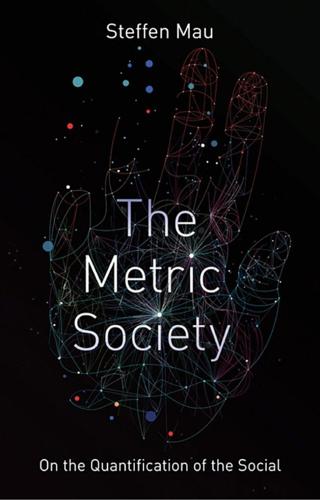
The Metric Society: On the Quantification of the Social
by
Steffen Mau
Published 12 Jun 2017
The former Google CEO Eric Schmidt sees the possibilities of mobile terminals in particular as a boon in terms of enforcing transparency and accountability, envisaging solutions such as ‘real-time monitoring systems allowing citizens to publicly rate every police officer in their hometown’ (Schmidt & Cohen 2013: 58f.). When it comes to the principal–agent problem (Laffont & Martimort 2009) so often discussed in social science research (i.e. the question of how the ‘principal’ – or company – can ensure that the ‘agent’ – or employee – actually does what they are contracted to do), the delegation of evaluation can be a neat solution, offering an answer to information and control gaps or ‘moral hazard’ problems and providing the management with an unprecedented wealth of data.
…
Index ‘20-70-10’ rule 155 academics 139 and altmetrics 77–8 and h-index 75–6, 139, 144 self-documentation and self-presentation 76–7 status markers 74–8 accountability 3, 91, 115, 120, 134, 147, 159 accounting, rise of modern 17 activism alliance with statistics 127 Acxiom 164–5 ADM (automated decision-making) 63 Aenta 108 Airbnb 88 airlines and status miles 71–2 algorithms 7, 64, 127, 167 and nomination power 123–5, 126, 141–2 AlgorithmWatch 127 altmetrics 77–8 Amazon 96, 150, 156 American Consumers Union 167 apps 99, 105, 150 finance 66–7 fitness and health 68, 102–3, 104, 107 Moven 65–6 Asian crisis (1997) 57 audit society 24–5 automated decision-making (ADM) 63 averages, regime of 155–7 Barlösius, Eva 113 Baty, Phil 48 Bauman, Zygmunt 143 behavioural reactivity 131 benchmarks, regime of 155–7 Berlin, television tower 40 Better Life Index 20 Big Data 2, 79, 123 biopolitics 19 of the market 70 biopower 19 Boam, Eric 104 body images, regime of 156–7 Boltanzki, Luc 125–6 border controls 73–4 borders, smart 74 Bourdieu, Pierre 111, 114, 115, 162 BP 108 Bude, Heinz 37 bureaucracy 18 calculative practices 11, 124 expansion of 11, 115 and the market 15–17 Campbell, Donald T. 130–1 Campbell's Law 130–1 capitalism 15, 54, 55 digital 150 capitalists of the self 163 Carter, Allan 48 Chiapello, Ève 125–6 Chief Financial Officer (CFO) 17 China Sesame Credit 67 Social Credit System 1, 166 choice revolution 118–19 class and status 33 class conflict switch to individual competition 168–70 classification 60–80 see also scoring; screening collective body 104–6 collective of non-equals 166–8 commensurability 31–3, 44, 159 Committee of Inquiry on ‘Growth, Wealth and Quality of Life’ (Germany) 127 commodification 163, 164 Community (sitcom) 96 companies 16–17 comparison 7, 26–39, 159 and commensurability/incommensurability 31–3 and competition 28 dispositive(s) of 7, 28–31, 159, 169 new horizons of 33–5 part of everyday life 27 prerequisites for social 35–6 registers of 135–9 and self-esteem 30 shifts in class structure of 33 and status 29–30, 36–7 universalization of 27–8 COMPAS (Correctional Offender Management Profiling or Alternative Sanctions) 79 competition 6, 7, 115–19, 159–60 and comparison 28 increasing glorification of 159 and neoliberalism 23 and performance measurement 115–19 and quantification 116–17 and rankings 45 switch from class conflict to individual 168–70 competitive singularities 169 consumer generated content (CGC) 85–6 control datafication and increased 143, 147, 169 individualization of social 143 levers of social 144 relationship between quantification and 78 conventionalization 128 Cordray, Julia 97 Correctional Offender Management Profiling or Alternative Sanctions (COMPAS) 79 Corruption Perceptions Index 26 cosmetic indicators 135 Couchsurfing 88 credit risk colonialization 64 credit scoring 63–7 and social status 67 criminal recidivism, scoring and assessment of 62–3, 79 criteria reductionism 22 cumulative advantages, theory of 174 CureTogether 106 customer reviews 82–6, 87, 88 Dacadoo 68 Daily Telegraph 149 darknet 87 data behaviourism 171 data leaks 152 data literacy 21 data mining 4, 22, 163 data protection 72, 142 data repositories 62, 73–4 data storage 22, 73, 135 data voluntarism 4, 152, 153, 159 dating markets and health scores 70 de Botton, Alain 30 decoupling 133, 136, 174–5 democratization and digitalization 166 difference 2 visibilization and the creation of 40–3 ‘difference revolution’ digitalization giving rise to 166–7 digital capitalism 150 digital disenfranchisement of citizens 151 digital health plans 70 digital medical records 67 digitalization 2, 7, 21–2, 25, 63, 73, 80, 111, 123, 180 and democratization 166 giving rise to ‘difference revolution’ 166–7 as ‘great leveller’ 166 quantitative bias of 124 disembedding 13 distance, technology of 23–4 diversity versus monoculture 137–40 doctors, evaluation of by patients 92–3 Doganova, Liliana 5–6 double-entry bookkeeping 15, 163 e-recruitment 61 eBay 87 economic valuation theory 5 economization 22–4, 38, 115, 117 and rise of rankings 46 education and evaluation 89–91 evaluation of tutors by students 89–90 law schools 44, 138–9 output indicators and resource allocation in higher 132 and Pisa system 122, 145–6 Eggers, Dave The Circle 41, 82–3 employer review sites 83 entrepreneurial self 3, 154 epistemic communities 121 equivalence 16, 27 Espeland, Wendy 44, 139 esteem 29, 30 and estimation 15, 38 see also self-esteem Etzioni, Amitai The Active Society 20 European Union 122 evaluation 81–98 connection with recognition 38 cult and spread of 7, 97–8, 134 education sector 89–91 loss of time and energy 136 and medical sector 91–3 peer-to-peer ratings 87–8 portals as selectors 84–6 pressure exerted by reviews 147–8 and professions 89–93 qualitative 117 satisfaction surveys 82–4 and social media 93–8 of tutors by students 89–90 evidence-basing 3 exercise and self-tracking 101–4 expert systems 7 transnational 121–2 experts, nomination power of 119–23, 126 Facebook 94 FanSlave 95 Federal Foreign Office (Germany) 53 feedback power of 147–8 and social media 93–4 Fertik, Michael 66 Fitch 56 fitness apps 68, 102–3, 104, 107 Floridi, Luciano 105 Foucault, Michel 19 Fourcade, Marion 163–4 Franck, Georg 29 fraud 137 Frey, Bruno ‘Publishing as Prostitution’ 146 ‘gaming the system’ 132 GDP (gross domestic product) 14 dispute over alternatives to 127–8 General Electric 155 Germany Excellence Initiative 51 higher education institutes 52–3 Gerstner, Louis V. 130 Glassdoor.com 83 global governance 122 globalization 34, 73 governance 12 self- 19, 37, 105 state as data manager 17–20 ‘government at a distance’ 145 governmentality 112 GPS systems 150 Granovetter, Mark ‘The strength of weak ties’ 147 gross domestic product see GDP h-index 75–6, 139, 144 halo effect 90 Han, Byung-Chul 154 Hanoi, rat infestation of 130 happiness and comparison 30 Hawthorne effect 107 health and self-tracking 101–4 health apps 68, 102–3, 104, 107 health scores 67–71 health status, quantified 67–71 Healy, Kieran 163–4 Heintz, Bettina 14, 33, 34 hierarchization/hierarchies 1, 5, 6, 11, 33, 39, 40–59, 174 and rankings 41–2, 43, 44, 48 higher education, output indicators and resource allocation 132 Hirsch, Jorge E. 75 home nursing care 135–6 hospitals and performance indicators 131 Human Development Index 14 hyperindividualization 167–8 identity theory 29 incommensurability 31–3 indicators 2, 3, 5, 20, 23–4, 34, 114, 159 and competition 116–17 and concept of reactive measurements 129–33 cosmetic 135 economic 7 governance by 24 politics of 14 status 35, 75 see also performance indicators individualization of social control 143 industrial revolution 19 inequality 6, 8, 158–76 collectives of non-equals 166–8 establishment of worth 160–2 inescapability and status fluidity 170–4 reputation management 162–6 switch from class conflict to individual competition 168–70 inescapability of status 170–4 information economy 2 information transmission interfaces, between social subsystems 165–6 institutional theory 113 insurance companies 72, 108, 151, 152, 167 International Labour Organization 122 investive status work 36–7 Italian Job, The (film) 138 justice 126 Kaube, Jürgen 2 Kula, Witold 16 Latour, Bruno 34 law schools 44, 138–9 league tables 35, 43, 46, 47, 51, 52, 53, 91, 138, 139, 146, 162, 175 legitimate test, concept of 125–6 Lenin, Vladimir 116 lifelogging 99, 109, 153 Luhmann, Niklas 166 Lyon, David 142 McClusky, Mark 101 McCullough, Nicole 97 Mann, Steve 153 market(s) calculative practices of 15–17 and neoliberalism 23 and rating agencies 55–6 Marron, Donncha 65 Matthew effect 174–5 measurement, meaning 10 media reporting 33 medical sector and evaluation 91–3 hospitals and performance indicators 131–2 MedXSafe 70 meritocracy 23, 161 Merton, Robert K. 161, 174 ‘metric revolution’ 16 Miller, Peter 112 mobility 71–4 border controls 73 digital monitoring of 72 and scoring 71–4 smart cars 72 and status miles 71–2 money as means of exchange 16 monoculture versus diversity 137–40 mood, self-tracking of 101–4 Moody's 56 motivation 106–10 and rankings 45 Moven 65–6 Münch, Richard 145 Nachtwey, Oliver 150 naturalization 113 neoliberalism 3, 12, 23, 25 basic tenets of 23 New Public Management 3, 117, 136, 155 NHS (National Health Service) 118 nomination power 111–28 and algorithms 123–5, 126, 141–2 critique of 125–8 and economization 115 of experts 119–23, 126 performance measurement and the framing of competition 115–19 and the state 112–15 non-equals, collectives of 166–8 normative pressure 144–6 North Korea 144 ‘number rush’ 2 numbers 13–14, 15 numerical medium 8, 14, 16, 18, 28, 33, 113, 160, 166 objectivization 35, 154, 160 OECD 122 Offe, Claus 175 Old Testament 17 omnimetrics 9 O’Neil, Cathy Weapons of Math Destruction 79 optimization 12, 25 Oral Roberts University (Oklahoma) 108 Peeple app 96–7 peer-to-peer ratings 87–8 Pentland, Alex 151 people analytics 150–1 performance enhancement 12 performance indicators 12, 38, 53, 74, 118, 119, 120, 129, 155 and hospitals 131–2 performance measurement 23, 38, 115–19 performance-oriented funding allocation 22 performance paradox 132 performance targets 4 Personicx 165 Pisa system 122, 145–6 politicians 14, 120 politics 114 portals 84–6, 88, 90–1 power of nomination see nomination power prestige 8, 29, 67, 144 principal–agent problem 147–8 private consultancy services 117 professional control, loss of 133–4 professionalization 19, 133 professions and evaluation 89–93 publicity 33 QS ranking 52 qualitative evaluation 117 quantification advantages of 8 engines of 21–5 history 11 impact and consequences of 5, 6 meaning 10, 12–15 risks and side-effects 7, 129–40 role of 35 quantified self 99–110 Quantified Self (network) 99–100 quantitative evaluation see evaluation quantitative mentality 11–12 quasi-markets 116, 118–19 race and assessment of criminal recidivism risk 79 rankings 47–53, 58–9, 60, 144 and competition 45 and compliance 44 differences between ratings and 42–3 disadvantage of 43–4 economization and rise of 46 and evaluation portals 84–6 and hierarchies 41–2, 43, 44, 48 and image fetishization 47 and motivation 45 as objectivity generators 41 performance-enhancing role 46 popularity of 41 as positional goods 45 purpose of 45 and reputation 48, 49, 50, 52 as social ushers 42 and status anxiety 46–7 university 6, 7, 43, 47–53, 144, 175 Welch's forced 155–6 rating agencies, market power of 53–9 ratings 41–3, 53–9, 60 definition 54 differences between rankings and 42–3 and evaluation portals 84–6 as objectivity generators 41 peer-to-peer 87–8 as social ushers 42 rationalization 5, 11, 12, 14, 15, 16, 19, 105, 110, 154, 163 Raz, Joseph 31–2 reactive measurements 129–33 recommendation marketing 85 recruitment, e- 61 reference group theory 29 reputation 29, 39, 66, 74, 121 academic 75–6 cultivating good 47 and rankings 48, 49, 50, 52 rating of 87–8 signal value of 87 social media and like-based 93–8 reputation management 4, 50, 162–6 reputation scoring 87–8 research community 146 and evaluation system 146 and review system 146–7 ResearchGate 77 reviews 136 customer 82–6, 87, 88 doctor 92 high demand for 136 lecturers/tutors 90 performance 25, 149 pressure exerted by popular 147 Riesman, David 37 risks of quantification 129–40 loss of professional control 133–5 loss of time and energy 135–7 monoculture versus diversity 137–40 reactive measurements 129–33 Rosa, Hartmut 94, 173 Rose, Nikolas 112 Rousseau, Jean-Jacques 28–9 running apps 107 Runtastic app 107 satisfaction surveys 82–4 Sauder, Michael 44, 139 Schimank, Uwe 134 Schirrmacher, Frank 152 Schmidt, Eric 147 schools and choice 118–19 evaluation of 90–1 league tables 46 and Pisa system 122, 145–6 scoring 7, 60, 61, 78–80 academic status markers 74–8 and assessment of criminal recidivism 62–3 credit 63–7 health 67–71 mobility value 71–4 pitfalls 79 screening 7, 60–1, 78–9 border controls 73–4 e-recruitment 61–2 function 60–1 smart cars 72 self-direction 105, 121, 143 self-documentation 153 and academic world 76–7 self-enhancement 3, 137 self-esteem 29, 37, 170 and comparison 29, 30 rankings and university staff 50–1 self-governance 19, 37, 105 self-image 37, 47, 50, 89 self-management 3, 20, 25 self-observation 25, 42 quantified 99–110 self-optimization 3, 19, 104, 109, 163 self-quantification/quantifiers 4, 13, 25, 101, 154–5, 156 self-reification 105 self-responsibility 25, 110 self-tracking 4, 7, 99, 100, 106, 109–10 collective body 104–6 as duty or social expectation 108 emotions provoked 109 health, exercise and mood 101–4 and motivation 106–10 problems with wearable technologies 103–4 running and fitness apps 68, 102–3, 104, 107 and sousveillance 153 as third-party tracking 154 self-worth 29, 36, 38, 47, 51, 170 and market value 67 Sesame Credit (China) 67 Shanghai ranking 47 ‘shared body’ 105 shared data 142, 152–3 Simmel, Georg 28 ‘small improvement argument’ 32 smart borders 74 smart cars 72 smart cities 21 smart homes 21 ‘social accounts’ 20 Social Credit System (China) 1, 166 social engineering 20 social management 20 social media 93–8, 153, 166 drivers of activity 93 and feedback 93–4 forms of connection 93 likes 93–5 and online disinhibition 153 and reputation building 95 resonance generated by 94 and running/fitness apps 107 social research 19–20 social security systems 19 social status see status social worth see worth socio-psychological rank theory 46 sociometrics/sociometers 2, 5, 36, 74, 141, 150–1 Sombart, Werner Modern Capitalism 15–16 sousveillance 153 sport 33 rise of world 35 Staab, Philipp 149–50 Stalder, Felix 124 Standard & Poor's 54, 56 statactivism 127 state as data manager 17–20 nomination power of the 112–15 statistics 14 origins of word 17 status and class 33 and comparison 29–30, 36–7 and credit scoring 67 inescapability from 170–4 and life satisfaction 30 seeking of 36 status anxiety 30 and rankings 46–7 status competition 26–39 status data 2, 80, 159, 161–2, 169, 174 functioning as symbolic data 8, 162 status fluidity 170–4 status insecurity 4 status miles 71–2 status sets 161–2 status symbols 158 status work 4, 36–7, 174 Stiglitz-Sen-Fitoussi Commission (France) 127 Streeck, Wolfgang 171–2 subprime crisis (2007) 57, 64 surveillance 8, 142, 152 interdependence of self- and external 153–5 and neoliberalism 23 workplace and technological 149–51 surveys, satisfaction 82–4 symbolic capital 174 status data as 8, 162 target setting 22 tariff models 152–3 technological surveillance, in the workplace 149–51 technologies of the self 25 tertium comparationis 32 Thomas theorem 59 Thompson, David C. 66 Times Higher Education ranking 47, 48, 53 tourism portals 85 tracking as double-edged sword 142 see also self-tracking trade relations 16 transnational expert systems 121–2 transparency 3, 91, 141–3, 144, 147 Transparency International 26 ‘transparent body’ 105 TripAdvisor 85 Trustpilot 86 Turkey 54 tutors evaluation of by students 89–90 Uber 156 űbercapital 163–4 UN Sustainable Development Goals 20 United Nations 122 university lecturers evaluation of 89–90 object of online reviews 90 university rankings 6, 7, 43, 47–53, 144, 175 valorization 5, 58, 124, 161 valuation 5–6 value registration 161 Vietnam War 131 visibilization, and the creation of difference 40–3 Webb, Jarrett 104 Weber, Max 15, 16, 154 Weiß, Manfred 119 Welch, Jack 155 ‘winner-take-all society’ 136 Wolf, Gary 99–100 Woolgar, Steve 34 workplace technological surveillance in the 149–51 World Bank 122 worth 5–6, 7, 11, 78–80, 170 assessments of 27 establishment of 160–2 orders of 11, 15, 29 self- 29, 36, 38, 47, 51, 67, 170 Young, Michael 161 The Rise of Meritocracy 23, 161 Zillien, Nicole 105 Zuckerberg, Mark 158 POLITY END USER LICENSE AGREEMENT Go to www.politybooks.com/eula to access Polity's ebook EULA.
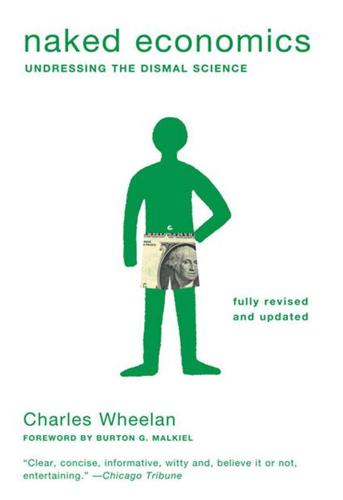
Naked Economics: Undressing the Dismal Science (Fully Revised and Updated)
by
Charles Wheelan
Published 18 Apr 2010
And the only way employees can steal without getting caught is by performing transactions without recording them on the cash register—selling you a burger and fries without issuing a receipt and then pocketing the cash. This is what economists call a principal-agent problem. The principal (Burger King) employs an agent (the cashier) who has an incentive to do a lot of things that are not necessarily in the best interest of the firm. Burger King can either spend a lot of time and money monitoring its employees for theft, or it can provide an incentive for you to do it for them. That little sign by the cash register is an ingenious management tool. Principal-agent problems are as much a problem at the top of corporate America as they are at the bottom, in large part because the agents who run America’s large corporations (CEOs and other top executives) are not necessarily the principals who own those companies (the shareholders).
…
On the other hand, the employees doing fancy things (like designing new financial products) will always have more information about what they are really up to than their superiors will; and their superiors will have more information than the shareholders. The challenge is to reward good outcomes without creating incentives for employees to game the system in ways that damage the company in the long run. One need not be a corporate titan to deal with principal-agent problems. There are plenty of situations in which we must hire someone whose incentives are similar but not identical to our own—and the distinction between “similar” and “identical” can make all the difference. Take real estate agents, a particular breed of scoundrel who purport to have your best interest at stake but may not, regardless of whether you are buying or selling a property.
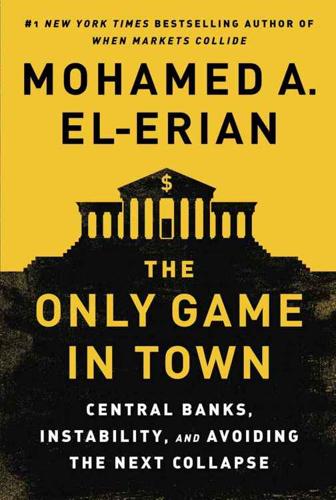
The Only Game in Town: Central Banks, Instability, and Avoiding the Next Collapse
by
Mohamed A. El-Erian
Published 26 Jan 2016
We’re still dancing.”1 And when the music did indeed end, Chuck Prince lost his job and Citi almost went bankrupt. — In effect, good old-fashioned human blind spots, inadequate mindsets, cognitive narrowness, hubris, and institutional rigidities were in play. Their potentially disastrous impact was amplified by excessive risk taking associated with misaligned financial incentives, classic principal-agent problems, and excessive short-termism. And the results were cumulative deteriorations on the ground that had already far outpaced the ability of the whole system to adequately understand the problem and play catch-up. As such, it wasn’t long before the consequences became scarily obvious to all. By the summer of 2008, it was no longer a question of crisis prevention; the world was thrown into full crisis management mode—and on a scale and scope that few had ever thought possible in our modern global economy.
…
Forced not just by regulatory actions but also by market pressures, banks have built considerable capital cushions to offset the impact of possible future mistakes and adverse exogenous shocks; these cushions will be further enhanced in the years ahead as additional capital requirements (“surcharges”) kick in for what are now known as the “GSIBs,” or the “global systemically important banks”1—including those banks that are still viewed as too big to manage and/or too big to fail. At the same time, considerable efforts have been devoted to cleaning up balance sheets, be it through the disposal of shady assets or better pricing and risk assessments. There have even been efforts to better align internal incentives and try to reduce classic principal/agent problems that result in excessive short-termism and irresponsible risk taking. And all this has been supplemented by a revised legislative framework, including Dodd-Frank in the United States, the details of which are still under implementation (and some have already been diluted by bank lobbying).
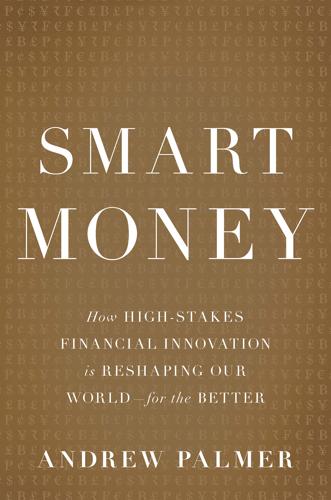
Smart Money: How High-Stakes Financial Innovation Is Reshaping Our WorldÑFor the Better
by
Andrew Palmer
Published 13 Apr 2015
Maritime trade in medieval Italy was fostered by a form of partnership called the commenda, in which one partner invested labor and the other put in money; the profits from the journey were split between the two parties, with a common division being 75 percent to the moneyman and 25 percent to the traveler. As well as being a financial contract, the commenda also defined the obligations that the traveler had to carry out when he was voyaging. This was an early attempt to solve the “principal-agent” problem that bedevils corporate governance today, in which shareholders have to rely on managers to exercise good judgment in running the companies they own.6 Equity and debt enable people with money to spare to allocate it to people who need capital. They are also ways of sharing risk, another of finance’s most fundamental jobs.
…
Flowers, 69, 81 Japan, banking crisis in, 75 Japan, financial innovation in, 27, 29, 39–40 Jha, Saumitra, 27 Jiménez-Martín, Sergi, 73 Job creation, young small firms and, 147–148 Joint-stock firms, 23 JPMorgan, 77, 169 Jump-to-default risk, 238 Käärmann, Kristo, 190 Kabbage, 218 Kahneman, Daniel, 47, 137 Kanjorski, Paul, 145 Kauffman Foundation, 158 Kennedy, John F., 32 Keys, Benjamin, 48 Kharroubi, Enisse, 79 Kickstarter, 172 King, Stephen, 99 Klein, David, 182 Krugman, Paul, xv Lahoud, Sal, 166 Lang, Luke, 153, 161–162 Laplanche, Renaud, 179, 184, 188, 190, 193–194, 196–197 Latency, 53 Law of large numbers, 17 Layering, 57 Left-digit bias, 46 Lehman Brothers, x, 44, 65 Lending direct, 84 marketplace, 184 payday, 200 relationship-based, 11, 151, 206–208 secured, xiv, 76 unsecured, 206 See also Loans; Peer-to-peer lending Lending Club, 172, 179–180, 182–184, 187, 189, 194–195, 197 Leonardo of Pisa (Fibonacci), 19 Lerner, Josh, 59 Lethal pandemic, risk-modeling for demographic profile, 230 exceedance-probability curve, 231–232, 232 figure 3 historical data, 228–229 infectiousness and virulence, 229–230 location of outbreak, 230–231 Leverage, 51, 70–71, 80, 186, 188 Leverage ratio, 76–77 Lewis, Michael, 57 Liber Abaci or Book of Calculation (Fibonacci), 19 LIBOR (London Interbank Offered Rate), 41 Liebman, Jeffrey, 98 Life expectancy government reaction to, 128–129 projections of, 124–127, 126 figure 2 ratio of young to older people, 127–128 Life-insurance policies, 142 Life-settlements industry, 142–143 Life table, 20 Limited liability, 212 Liquidity, 12–14, 39, 185–186 List, John, 109 The Little Book of Behavioral Investing (Montier), 156 Lo, Andrew, 113–115, 117–123 Loans low-documentation, 48–49 secured, 76 small business, 181, 216 student, 164, 166–167, 169–171, 182 syndicated, 41 Victory Loans, 28 See also Lending; Peer-to-Peer lending Logistic regression, 201 London, early fire insurance in, 16–17 London, Great Fire of, 16 London Interbank Offered Rate (LIBOR), 41 Long-Term Capital Management, 123 Longevity, betting on, 143–144 Loss aversion, 136 Lotteries, 212, 213 Low-documentation loans, 48–49 Lumni, 165, 168, 175 Lustgarten, Anders, 111 Lynn, Jeff, 160–161 Mack, John, 180 Mahwah, New Jersey, 52, 53 Marginal borrowers assessment of, 216–217 behavioral finance and, 208–214 industrialization of credit, 206 microfinance and, 203 savings schemes, 209–214 small businesses, 215–219 unsecured lending to, 206 Wonga, 203, 205, 208 Marginal borrowers (continued) ZestFinance, 199, 202, 205–206 Maritime piracy, solutions to, 151–152 Maritime trade, role of in history of finance, 3, 7–8, 14, 17, 23 Market makers, 15–16, 55 MarketInvoice, 195, 207, 217–218 Marketplace lending, 184 Markowitz, Harry, 118 Massachusetts, use of inflation-protected bonds in, 26 Massachusetts, use of social-impact bonds in, 98 Matching engine, 52 Maturity transformation, 12–13, 187–188, 193 McKinsey & Company, ix, 42 Mercator Advisory Group, 203 Merrill, Charles, 28 Merrill, Douglas, 199, 201 Merrill Lynch, 28 Merton, Robert, 31, 113–114, 123–124, 129–132, 142, 145 Mian, Atif, 204 Michigan, University of, financial survey by, 134–135 Microfinance, 203 Micropayment model, 217 Microwave technology, 53 The Million Adventure, 213–214 Minsky, Hyman, 42 Minsky moment, 42 Mississippi scheme, 36 Mitchell, Justin, 166–167 Momentum Ignition, 57 Monaco, modeling risk of earthquake in, 227 Money, history of, 4–5 Money illusion, 73–74 Money laundering, 192 Money-market funds, 43, 44 Monkeys, Yale University study of loss aversion with, 136 Montier, James, 156–157 Moody, John, 24 Moody’s, 24, 235 Moore’s law, 114 Morgan Stanley, 188 Mortgage-backed securities, 49, 233 Mortgage credit by ZIP code, study of, 204 Mortgage debt, role of in 2007–2008 crisis, 69–70 Mortgage products, unsound, 36–37 Mortgage securitization, 47 Multisystemic therapy, 96 Munnell, Alicia, 129 Naked credit-default swaps, 143 Nature Biotechnology, on drug-development megafunds, 118 “Neglected Risks, Financial Innovation and Financial Fragility” (Gennaioli, Shleifer, and Vishny), 42 Network effects, 181 New York, skyscraper craze in, 74–75 New York City, prisoner-rehabilitation program in, 108 New York Stock Exchange (NYSE), 31, 52, 53, 61, 64 New York Times, Merrill Lynch ad in, 28 Noncorrelated assets, 122 Nonprofits, growth of in United States, 105–106 Northern Rock, x NYMEX, 60 NYSE Euronext, 52 NYSE (New York Stock Exchange), 31, 52, 53, 61, 64 OECD (Organization for Economic Co-operation and Development), 128, 147 Oldfield, Sean, 67–68, 80–84 OnDeck, 216–218 One Service, 94–95, 105, 112 Operating expense ratio, 188–189 Options, 15, 124 Order-to-trade ratios, 63 Oregon, interest in income-share agreements, 172, 176 Organization for Economic Co-operation and Development (OECD), 128, 147 Overtrading, 24 Packard, Norman, 60 Pandit, Vikram, 184 Park, Sun Young, 233 Partnership mortgage, 81 Pasion, 11 Pave, 166–168, 173, 175, 182 Payday lending Consumer Financial Protection Bureau, survey on, 200 information on applicants, acquisition of, 202 underwriting of, 201 PayPal, 219 Peak child, 127 Peak risk, 228 Peer-to-peer lending advantages of, 187–189 auction system, 195 big investors in, 183 borrowers, assessment of, 197 in Britain, 181 commercial mortgages, 181 CommonBond, 182, 184, 197 consumer credit, 181 diversification, 196 explained, 180 Funding Circle, 181–182, 189, 197 investors in, 195 Lending Club, 179–180, 182–184, 187, 189, 194–195, 197 network effects, 181 ordinary savers and, 184 Prosper, 181, 187, 195 RateSetter, 181, 187, 196 Relendex, 181 risk management, 195–197 securitization, 183–184, 196 Peer-to-peer lending (continued) small business loans, 181 SoFi, 184 student loans, 182 Zopa, 181, 187, 188, 195 Pensions, cost of, 125–126 Perry, Rick, 142–143 Peterborough, England, social-impact bond pilot in, 90–92, 94–95, 104–105, 112 Petri, Tom, 172 Pharmaceuticals, decline of investment in, 114–115 Piracy Reporting Centre, International Maritime Bureau, 151 Polese, Kim, 210 Poor, Henry Varnum, 24 “Portfolio Selection” (Markowitz), 118 Prediction Company, 60–61 Preferred shares, 25 Prepaid cards, 203 Present value of cash flows, 19 Prime borrowers, 197 Prince, Chuck, 50–51, 62 Principal-agent problem, 8 Prisoner rehabilitation programs, 90–91, 94–95, 98, 108, 112 Private-equity firms, 69, 85, 91, 105, 107 Projection bias, 72–73 Property banking crises and, xiv, 69 banking mistakes involving, 75–80 behavioral biases and, 72–75 dangerous characteristics of, 70–72 fresh thinking, need for, xvii, 80 investors’ systematic errors in, 74–75 perception of as safe investment, 76, 80 Prosper, 181, 187, 195 Provisioning funds, 187 Put options, 9, 82 Quants, 19, 63, 113 QuickBooks, 218 Quote stuffing, 57 Raffray, André-François, 144 Railways, affect of on finance, 23–25 Randomized control trials (RCTs), 101 Raphoen, Christoffel, 15–16 Raphoen, Jan, 15–16 RateSetter, 181, 187, 196 RCTs (randomized control trials), 101 Ready for Zero, 210–211 Rectangularization, 125, 126 figure 2 Regulation NMS, 61 Reinhart, Carmen, 35 Reinsurance, 224 Relendex, 181 Rentes viagères, 20 Repurchase “repo” transactions, 15, 185 Research-backed obligations, 119 Reserve Primary Fund, 44 Retirement, funding for anchoring effect, 137–138 annuities, 139 auto-enrollment in pension schemes, 135 auto-escalation, 135–136 conventional funding, 127–128 decumulation, 138–139 government reaction to increased longevity, 128–129 home equity, 139–140 life expectancy, projections of, 124–127, 126 figure 2 life insurance policies, cash-surrender value of, 142 personal retirement savings, 128–129, 132–133 replacement rate, 125 reverse mortgage, 140–142 savings cues, experiment with, 137 SmartNest, 129–131 Reverse mortgages, 140–142 Risk-adjusted returns, 118 Risk appetite, 116 Risk assessment, 24, 45, 77–78, 208 Risk aversion, 116, 215 Risk-based capital, 77 Risk-based pricing model, 176 Risk management, 55, 117–118, 123, 195–197 Risk Management Solutions, 222 Risk sharing, 8, 82 Risk-transfer instrument, 226 Risk weights, 77–78 Rogoff, Kenneth, 35 “The Role of Government in Education” (Friedman), 165 Roman Empire business corporation in, 7 financial crisis in, 36 forerunners of banks in, 11 maritime insurance in, 8 Rotating Savings and Credit Associations (ROSCAs), 209–210 Roulette wheel, use of in experiment on anchoring, 138 Royal Bank of Scotland, 186 Rubio, Marco, 172 Russia, mortgage market in, 67 S-curve, in diffusion of innovations, 45 Salmon, Felix, 155 Samurai bonds, 27 Satsuma Rebellion (1877), 27 Sauter, George, 58 Save to Win, 214 Savings-and-loan crisis in US (1990s), 30 Savings cues, experiment with, 137 Scared Straight social program, 101 Scholes, Myron, 31, 123–124 Science, Technology, and Industry Scoreboard of OECD, 147 Securities and Exchange Commission (SEC), 54, 56, 57, 58, 64 Securities markets, 14 Securitization, xi, 20, 37–38, 117–122, 183–184, 196, 236 Seedrs, 160–161 Sellaband, 159 Shared equity, 80–84 Shared-equity mortgage, 84 Shepard, Chris, xii–xiii Shiller, Robert, xv–xvi, 242 Shleifer, Andrei, 42, 44 Short termism, 58 SIBs.
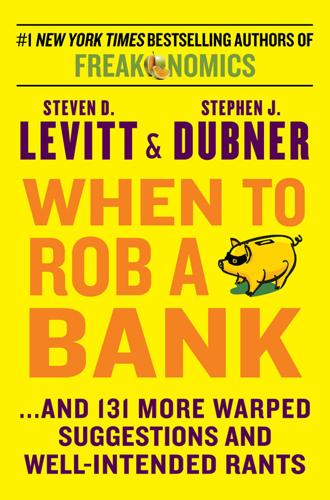
When to Rob a Bank: ...And 131 More Warped Suggestions and Well-Intended Rants
by
Steven D. Levitt
and
Stephen J. Dubner
Published 4 May 2015
Going for a first down on fourth and short yardage in your own territory is likely to increase the chance your team wins (albeit slightly). But Belichick had to know that if it failed, he would be subjected to endless criticism. If his team had gotten the first down and the Patriots won, he would have gotten far less credit than he got blame for failing. This introduces what economists call a “principal-agent problem.” Even though going for it increases his team’s chance of winning, a coach who cares about his reputation will want to do the wrong thing. He will punt just because he doesn’t want to be the goat. (I’ve seen the same thing in my research on penalty kicks in soccer; kicking it right down the middle is the best strategy, but it is so embarrassing when it fails that players don’t do it often enough.)
…
Scott, 171–72 McCain, John, 35–36 McDonald’s, workers in, 273 McKibben, Bill, 179–84 McLaughlin, Dan, 202–4 McWilliams, James, 175–78, 179–84 meat, eating, 179–84 media: and charitable giving, 324–28 fears caused by, 113 medical care, limitations of, 297 medical system, interactions with, 289 medicine, and statistics, 280–82 memoirs, fake, 146–48 mental accounts, 68–69 Merton, Robert C., 336 Mickelson, Phil, 73–74 Miles, Tom, 130 military draft, 23–25 Minty, Jessica H., 326 Moonen, Scott, 47 morality vs. economics, 288 Morgan, Yourhighness, 40 morphine, value of, 297 Moscowitz, Toby, 209–12 motorcycle accidents, 102–3 Mullainathan, Sendhil, 347 Mumbai train system, 140–41 Murphy, Kevin, 59 Myanmar, cyclone in, 324–28 Myers, Mike, 306 Nadal, Rafael, 74 names, 37 aptonyms, 43–47 first, 40, 41 heavenly, 41 middle, 38–40 unpredictability of, 42–43 National Health Service (U.K.), 26–29 National Highway Traffic Safety Administration (NHTSA), 249–50 National Violent Death Reporting System, 250 natural field experiment, 322 Neckermann, Susanne, 338 negative externality, 87 Newark-Liberty airport, 21–22 New York state senate, 233–36 New York Times, The, 3, 8, 11, 41, 96, 109–16, 167, 276 Nielsen ratings, TV viewing, 322–24 “No Gas Day,” 311–14 Noll, Chuck, 218 Noll, Thomas, 228–29 Nostradamus, 109 Obama, Barack, 33, 214, 278–80 obesity, 116–19 oil, “peak,” 109–16 Oliver, Eric, 118 online dating, 268–69 OPEC, 111–12 Oportunidades, 138–39 opportunity cost, 349–50 orange juice, 174–75 Osgood, Daniel, 165 packaging, 175–78 Pacquiao, Manny, 72–3 Pakistan earthquake, 325–27 panhandlers, 328–37 Pape, Robert, 10 paper vs. plastic bags, 167 Pardo, Bruce, 130–32 Pareto efficiency, 30 Pariah (TV show), 253–55 Parker, Susan W., 138–40 Pataki, George, 119 Paulos, John Allen, 286 Paulson, Henry, 236 Peltzman, Sam, 166 penny, 61–65 penny floor, 65 Pepsico, 59–60 perfect substitutes, 60 petroleum extraction, 109–16 Pettitte, Andy, 149–50 Pham, David “the Dragon,” 193 pilots, 83–86 pirates, 314–19 Pittsburgh Steelers, 212–19 Plack, Les, 47 Planned Parenthood, 65–67 Pledge-a-Picket, 66 poker: cheating, 154–58 how not to cheat, 153–55 Internet, 127–30, 157 one card away from final table, 192–95 record that can never be broken, 192 shootout tournament, 193 World Series of Poker, 187–88, 192–95 Polamalu, Troy, 216 Poland Spring bottled water, 3–4 Pollan, Michael, 169 postage, exemption from, 141–43 practice, ten thousand hours, 199, 201–2 praise, 351 Pre-Implantation Genetic Diagnosis (PGD), 280–82 prices: anchoring, 309 of autographed baseballs, 80–81 bounty on bin Laden, 57–59 of cars, 54–57 of chicken wings, 75–77 and corporate sponsorships, 81 discrimination in, 173 of food, 116 of gas, 86–90 for hate mail, 49–51 housing, 67–69 of kiwifruits, 77–80 peak oil, 109–16 of a penny, 61–65 of prescription drugs, 52–54 rising, 110, 111 of shrimp, 344 of songs, 69–71 and substitutes, 113 supply and demand, 78–80, 110, 112, 115, 128, 341–44 of voices in animated films, 306 priming, 228–29 principal-agent problem, 209 Prius Effect, 185 procrastination, 121 profits, going green for, 172–74 pro-life movement, 65 prostitution: Berlin brothel, 173 escort service, 261–67 legalization of, 255–56, 265–67 race: in the marketplace, 315–22 TV viewing habits, 322–24 rain forest, saving, 174–75 randomization, 322 rational addictions, 92–94 Reeve, Christopher, 102 Reilly, Barry, 225–26 Rickman, Neil, 225–26 RICO (federal racketeering statutes), 232 Rios, Brandon, 72 risk-aversion, 125–27 risk-taking, 121 Rochambeau (Rock, Paper, Scissors), 188–89 Rodriguez, Alex, 149 Roethlisberger, Ben, 103 Roe v.
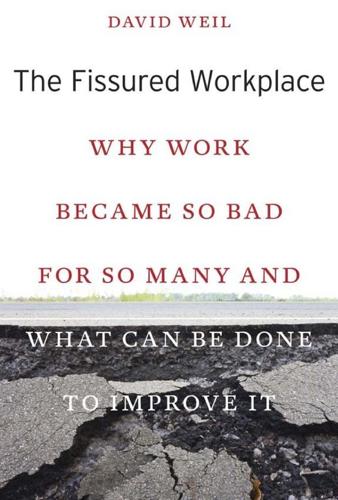
The Fissured Workplace
by
David Weil
Published 17 Feb 2014
John Kenneth Galbraith thirty years later expected this schism to lead to managerial dominance of the economic landscape, as corporate leaders and their minions sought stability and persistence of their positions, leading to business and cultural malaise. Mainstream economists, at the same time, worried that the principal/agent problem inherent in the separation would lead businesses to become fat and lazy, unresponsive to the need to create value for their shareholders and not willing to make the changes necessary for the United States to compete with emerging countries, particularly Japan. These concerns look almost quaint now.
…
What the Glue Must Do For fissuring to be successful, the lead company must design and deploy mechanisms that assure that the businesses in orbit around it operate in a way compatible with its core strategies.54 Importantly, the chosen organizational mechanisms must ensure that the secondary players do not undermine the basis of the lead company’s core competency (for example, brand image, product quality, coordination economies).55 Easier said than done. The principal/agent problem—that is, the difficulty faced by one party (the principal) of using another party (the agent) to undertake work on its behalf—arises because information is costly. First, it is costly for the principal to gather information about the agents in selecting across them: some agents may have qualities that might undermine the objectives of the principal.
…
Of course, the problem of incomplete contracts remains even given explicit standards: there will never be sufficient pages in a manual or enough lawyers to craft them to cover every exigency that might arise to assure that the core values of a company are protected while shifting work to others. But the contract systems that have emerged, and the organizational forms that have grown around them, clearly try to do so to the extent possible and significantly curtail the principal/agent problems that may arise. Examining the three elements of standards reveals how serious companies are about keeping the core elements of fissuring from undermining one another. Explicit Standards: What We Expect The glue for fissured employment rests on explicit and detailed standards crafted by lead businesses and followed by all subsidiary organizations.
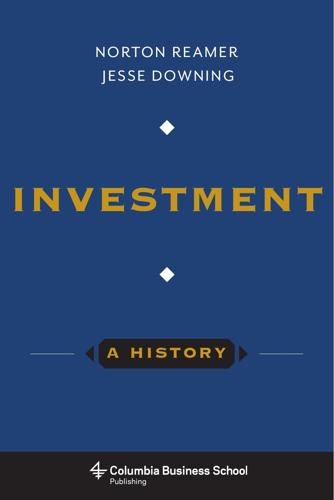
Investment: A History
by
Norton Reamer
and
Jesse Downing
Published 19 Feb 2016
While those at headquarters were angered by this request, they ultimately agreed on one condition: that he ensure that nobody else in his crew was doing the same and to punish other offenders. It was a farcical but apparently successful way of dealing with the issue, and Keeling did enforce the company policy on his inferiors with great effect.127 Indeed, the principal-agent problems and the issues arising involving fiduciary duty are nothing new today, but they extend in time and space to centuries past and to nations afar, as evidenced by the English involvement in Japan. While many foreign companies did well there despite the issues with agency problems, Japan’s days of financial openness were numbered.
…
The British Crown exploited India with respect to natural resources and other goods. Cross-border politics was already quite important to the way investment was, or was not, conducted. Many premodern enterprises were also plagued by the very same problems faced in investment today, including fundamental principal-agent problems. The East India Company could not manage to prevent its employees from transacting for their own accounts when stationed abroad in Japan, and the solution (a rather comical one) was at times to allow a leader abroad to trade for his own account as long as he prevented his subordinates from doing likewise.
…
Fessenden, 158 population growth, in Europe, 71 Portugal, 47 power elite, 7–8, 318 Presbyterian Church, 101–2 Prescott, Edward, 252 price-to-earnings (P/E) ratios, 204 PricewaterhouseCoopers, 174 “Pricing of Options and Corporate Liabilities, The” (Black and Scholes), 235 Primary Reserve Fund, 143 principal-agent problems, 47, 61 printing press, 71 private equity, 258, 274–77 private wealth management, 137–39 probabilistic insurance, 252 Procter & Gamble, 189 procurators, 19–20 Prohibition, 164 pro magistro (manager in provinces), 51 promissory notes (tegata), 46 property, separate “claim” on, 46 proprietary trading, 221–22 prospect theory, 251–52 Protestant Reformation, 36 Provident Institution for Savings, 134 public asset management, 16 public auction (sub hasta), 50 public debt: issuance of, 96; Italian city-states securitization of, 82–84; from War of Spanish Succession, 67 public markets, 82–97; Amsterdam and, 84–85, 97; consolidation of, 94–95; emergence of, 63, 98; London and, 86–87, 97; Second Industrial Revolution and, 89; technology and, 89–90; United States and, 88–89, 97 public-private partnerships, 321, 323–24 put options, 151 qirad, 55 Quad/Graphics, 188 Quakers, 74 Quanfu governmental agency, 28 quantitative easing, 217 quantitative fund (quant strategy), 264, 267–68 Quantum Fund, 263 Qur’an, 37 Railroad Retirement System, 109 Rajaratnam, Raj, 186–87 Rampart Investment Management, 151 randomness, 230 real economy, finance and, 208, 222–24 real estate: analysis of, 207; investments, 136; Japan and, 217; loans, in Greece, 27; values, 214–15 real estate investment trusts (REITs), 280–81 real ownership, 4, 333 Reebok, 189 regional exchanges, 94–95 regulations: improved, 147; prohibiting too much stock ownership, 123; Regulation Q, 114, 143; response to Crash of 1929, 210–12; response to Great Depression, 210–12; response to Index 431 Great Recession, 219–22; SEC and, 166, 180, 194–95, 259 Reinhart, Carmen, 225 REITs.
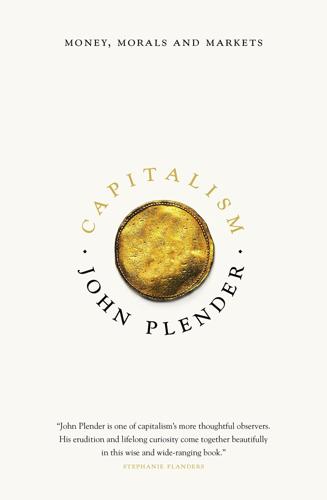
Capitalism: Money, Morals and Markets
by
John Plender
Published 27 Jul 2015
The formation of the South Sea Company in the new century, together with the stellar performance of its stock, accelerated an already powerful slew of incorporations, with 195 joint stock companies being formed in the year to August 1720. These were popularly known as ‘bubbles’. A central feature of incorporation was that it increased the scope for fraud, because the people running the bubble companies had access to other people’s money. In the modern jargon, there was a principal–agent problem. The agents, or managers, were not properly accountable to the principals, or stockholders, because corporate governance was rudimentary. Trading in the shares was frenetic and often fraudulent, as Daniel Defoe, author of Robinson Crusoe, explained in a tract entitled The Anatomy of Change-Alley, in which he said: There is not a man but will own ’tis a complete system of knavery; that ’tis a trade founded in fraud, born of deceit, and nourished by trick, cheat, wheedle, forgeries, falsehoods, and all sorts of delusions; coining false news, this way good, that way bad; whispering imaginary terrors, frights, hopes, expectations and then preying upon the weakness of those whose imaginations they have wrought upon, whom they have either elevated or depressed.32 When the South Sea Company collapsed, fraud was revealed on the part of directors, who had corrupted members of the cabinet, using shares in the company as bribes.
…
One reason is that share prices are not set by private investors – the ‘representative household’, in the economic jargon – but by fund managers to whom savers and pension fund trustees have delegated authority for managing their money. These fund managers, the agents, may have a very different agenda to that of savers and trustees, the principals. They also have more and better information about companies and markets. So there is, as the economists put it, both a principal–agent problem and an information asymmetry problem. These lead to conflicts of interest. The technology bubble in the second half of the 1990s provides a good example of how the conflict works. Dot.com stocks rose initially on the basis of a conviction that technology had fundamentally changed the way the economy worked, so that expectations of future profits spiralled while conventional methods of company valuation were abandoned.

Power, for All: How It Really Works and Why It's Everyone's Business
by
Julie Battilana
and
Tiziana Casciaro
Published 30 Aug 2021
Whenever we entrust someone else with the power to make decisions and take action on our behalf, we run the risk that they will use this power against us. Why? Because the things the decision maker (the agent) prioritizes may run counter to our (the principal’s) priorities. This is what economists call a principal-agent problem, and the relationship between corporate management and shareholders in companies is a prime example: When the owners of a company delegate the management of their business to its CEO and other executives, they give those executives a level of power that triggers the need for oversight and accountability.
…
C., 224n76 cultivation of empathy, 30–33, 36, 38, 135, 195 cultivation of humility, 30, 34–36, 36, 38, 195, 215n55 Dahl, Robert A., 259n98, 261n2 Dalberg-Acton, John Emerich Edward (Lord Acton), 24 dangers of hubris awareness of impermanence, 38 cultivating humility and, 30, 34–36, 36 Greek myths of, 23 power sharing and accountability reinforced, 39, 166, 172–73 Davis, Gerald F., 253n31, 253n32, 255n44 De Beers, 11–13 Declaration of Independence, 189 Declaration of the Rights of Man and of the Citizen, 125–26, 189 Declaration of the Rights of Woman and of the [Female] Citizen (De Gouges), 125–26 democracy, xiv, xvii, 68, 91, 156–58, 182–93, 197–98 See also civic education and engagement, participative democracy initiatives, separation of powers democratization of firms, 181, 197 democratization of power, 162–64, 197 demographic diversity, 168 DeSantola, Alicia, 169 Descartes, René, 146, 243n10 Developmental Path to Power, 36 Diamond, Jared M., 243n4 Diana (princess of Wales), 30 digital era power fundamentals, 141–64 algorithms and machine learning, 148–49, 150 big tech control, 148–54 control of algorithms, 149–51, 153, 159–61 control of personal information, 151–53, 158–59, 190 democratization of power, 162–64, 197 laws and regulations, 158–62 technology’s impacts on, 143–48, 190 timelessness of, 142–44 World Wide Web, 147–48 digital revolution, 147–54, 162–63 Dimaggio, Paul J., 233n46, 235n64 disability, xiii, 4, 104, 193 discrimination, 104, 132, 156, 170–71, 252n22 See also bias, gender inequality, racism Disney, Abigail, 114 disruption of power, 108–15, 141–54 distributive change, 108–9, 143–44, 147–48, 150–54, 168–72 imbalances and, 111–15, 158 motivation and opportunity convergence, 109–12 See also hierarchies of power distribution of power challenges to, 108–9 critical aspects of, 150–54 equitable and diverse, 168–72, 193–94, 197 technological change and, 143–44 World Wide Web and, 147–48 domestic workers’ Bill of Rights, 179 DoorDash, 179 Dorsey, Cheryl, 104–6, 107, 108 Dorsey, Jack, 153 Douglas, Mary, 229n1 Duflo, Esther, 114 Durkheim, David Émile, 223n58 dynastic rule, 91–92 Echoing Green, 107 Edmondson, Amy C., 35 Egyptian revolution (2011), 118 Eichmann, Adolf, 95, 96 elements of power, xvi–xvii, 2–3, 16, 39–40, 192, 194, 195 Elliott, Jane, 92–94, 99 Emerson, Richard M., 200, 210n10, 211n21, 261n10 empathic accuracy, 31 empathy, 30–33, 36, 38, 97, 98, 195 Enlightenment, 109 Enlightenment Now (Pinker), 146 Enron, 174 Epic Games, 113 Epicurus, 55 equitable power distribution, 168–72, 193–94, 197 ethical decisions on power, 20 eugenics, 102–3 European Union, 159, 248n67 evolutionary psychology, 49 expansion strategy, 8, 9, 12–13 experience of power, 22–25 Facebook, 152, 153, 157, 159, 184, 248n66 facial recognition algorithms, 150, 160, 161 fallacies of power, xii–xiv, 16, 20, 70 See also positional power fallacy, possession of power fallacy, power is dirty fallacy Fallone, Meagan, 146, 161 Farage, Nigel, 52 fascination for power, x–xii Ferreras, Isabelle, 181, 254n42, 255n44, 256n58, 256n59 Festinger, Leon, 213n30, 223n67 Fiske, Susan T., 218n16, 224n76 Fligstein, Neil, 235n63, 235n64 Floyd, George, 92 folk-Bildung, 187–88, 258n84 Follett, Mary Parker, 8 foot-binding, 48, 57, 220n33 formal power and networks, 70–71, 71 Foucault, Michel, 151, 202, 245n30, 261n16 Founding Fathers of the United States, 183 French Revolution, 47, 109 French Yellow Vests, 117 Frick, Henry Clay, 110 Fridays for Future, 56, 121–25 Friedman, Milton, 46, 219n27 fundamental attribution error, 16 fundamentals of power, xvi–xvii, 2–3, 16, 39–40, 192, 194, 195 Fung, Archon, 259n96, 262n22 g0v (gov zero), 191 Galinsky, Adam D., 211n7, 212n13, 217n11, 222n48, 230n12, 230n14, 230n18, 231n24, 232n39, 237n72, 240n15, 262n22 Galton, Francis, 102 Gandhi, Mohandas Karamchand, 56, 119, 124 Ganz, Marshall, 122, 139 Garza, Alicia, 139 Gates, Bill, 114 Gates, Melinda, 114 Geddes, Patrick, 102 Gelfand, Michele J., 67, 225n4 gender inequality, 91–92, 101–02, 106–08 gender solidarity, 4–8, 85–87 gene editing technology, 162, 249n79 General Data Protection Regulation (GDPR), 159 Gergen, David, 24 gig economy, 163, 179, 181 Gingrich, Newt, 80 Giridharadas, Anand, 114 global climate strike (2019), 121–23 Global Reporting Initiative (GRI), 127 global warming, 45–46, 120–25, 163 renewable energy, 144–46 Godfather II, The, 77, 227n21 Google employees story, 154–58 Epic Games and, 113 European legislators, 159, 248n66 privacy policies lawsuits, 159 Project Dragonfly, 156 Project Maven, 155, 156 search history, 124 user data and, 152–54 Gottfried, David, 127 Gouze, Marie (Olympe de Gouges), 125–26 Government of the Nine, 165, 166, 250n2 Gramsci, Antonio, 186–87 Grant, Adam M., 215n55 Great Depression, 9, 114 Great Society, 14 Green, Melanie C., 135 Greene, Robert, 19 greenhouse gas effect See global warming Grimanis, Lia, 1, 4–8, 10, 20 Gruenfeld, Deborah H., 212n7, 230n12, 230n14 Grunitzky, Claude, 228n39 Gutenberg, Johannes, 142, 143 Hammurabi (Babylonian king), 100 Harari, Yuval Noah, 243n3, 245n31, 250n85 Harry, Prince (Duke of Sussex), 30 Harvard Study of Adult Development, 49 Heimans, Jeremy, 141 Heroic Failure: Brexit and the Politics of Pain (O’Toole), 52 hierarchies of power legitimacy narratives and, 100–04, 232n33 legitimization of, 92–94 obedience to authority, 94–97, 229n8 perpetuation of, 27 power infernal trio, 97–98 powerlessness and, 98–100 stability of, 90, 91–92, 197 stereotypes and, 104–8, 169 stickiness of, xvii, 91–92, 108 Hitler, Adolf, 9 Hobbit, The (Tolkien), ix Ho Chi Minh, 15, 16 Hollande, François, 24, 68 Holocaust, 20–21 Homer, 101 Homestead Strike, 111 Hominem te memento, 34, 214n49 L’Homme Providentiel, 16 Hossain, Mashroof, 34–35 hubris awareness of impermanence, 38 cultivating humility and, 30, 34–36, 36 Greek myths of, 23 power sharing and accountability reinforced, 39, 166, 172–73 Hughes, Debbie, 93 human needs See safety, self-esteem, valued resources human rights, xiv, 133–34, 136, 156, 157 humility, 30, 34–36, 36, 38, 195, 215n55 Huxley, Aldous, 164 imbalance of power, 111–15, 153–54, 182, 189–90, 194 impermanence, 34, 38, 115 impermanence awareness, 38, 115 Implicit Association Test, 104 Indignados, 118 infernal trio, 97–98, 102 informal power of networks, 72–74, 72, 84 innovation, 119–20, 125–30, 147–49, 154, 195, 196 In Praise of Scribes (Trithemius), 142, 143 Institutions, 104, 233n47 institutional change, 109, 235n64, 235n65, 235–36n66 interdependence awareness, xv, 32, 38, 97, 115, 195 Intergovernmental Panel on Climate Change (IPCC), 120 interpersonal liking familiarity, 63 similarity, 63, 88–90 intoxication of power, 20–22, 173 Johnson, Boris, 52 Johnson, Lyndon Baines, 14, 15, 16, 76 Johnson Space Center (JSC), 167, 168 Johnson treatment, 14 jointly developed power, 8, 162–63, 178–79 Jost, John, 231n19, 231n20, 231n22 Kant, Immanuel, 55 Kanter, Rosabeth Moss, 168–69 Karman, Tawakkol, 186 Kegan, Robert, 214n40, 258n84 Keltner, Dacher, 211n7, 212n16, 230n12, 230n17, 237n71 Kennedy, John F., 14 Keohane, Robert O., 261n14 Khan, Lina M., 159 King, Martin Luther, Jr., 33, 92, 119, 124 Kirchner, Nestór, 131, 132 Krackhardt, David, 71, 225n7, 226n8, 226n16 Lady Gaga, 85 Lasn, Kalle, 118, 119 Legion of Honor, 47, 219–20n30 legitimizing stories, 91–92, 101–04, 123 levers of persuasion, 10, 210n15 LGBTQ+, 88, 109, 117, 131–33, 136–37 LinkedIn, 153 Livingston, Robert W., 172 Lopez, Sandra, 177, 179–80 Lord of the Rings, The (Tolkien), ix–x Lorenzetti, Ambrogio, 165 Lukes, Steven, 261n5 Machiavelli, Niccolò, xvi, 19, 227n21 machine-learning algorithms, 148–49, 150 Magee, Joe C., 212n7, 230n14, 230n18, 231n24, 237n72, 262n22 Mandela, Nelson, 56, 119 Manuel’s story, 70–73 marriage equality, 131–37, 242n34 Marx, Karl, 110, 236n68 Maslow, Abraham, 217–18n15 Mayo, Tony, 171 McEvily, Bill, 86, 226n9 mechanical movable-type printing press, 142 Mencius (Mengzi), 55 meritocracy, 103, 169–70 #MeToo movement, 117, 137, 141, 147–48, 156 Meyer, John W., 233n46 Microsoft, 157 Milgram, Stanley, 95–96, 229n8 misunderstanding power fallacies of, xii–xiv Mjumbe, Nezuma, 144–46, 161 mobile health technology, 149 monopoly, 11 Montesquieu (Charles-Louis de Secondat), 182–83 moral principles, 55, 56, 164, 192 moral purity, 25, 30, 212n21, 213n30 Morrison, Toni, 8 motivation See safety, self-esteem, valued resources movement fatigue, 137 mutual dependence, 3, 7, 114, 181, 200 Na’Allah, Bala Ibn, 184 Naím, Moisés, 141 NASA Innovation and Inclusion Council, 170 Johnson Space Center (JSC), 167–68 Transparency and Opportunity Program (TOP), 171–73 National Domestic Workers Alliance, 177–79 National Health Service, 67 Nazi concentration camps, 21 negativity bias, 19 neoliberal capitalist system, 46, 189 Netflix, 153 networks betweenness, 79, 80, 153 informal power, 70–74, 71, 77–81, 84–89 network diversity, 84–89 organizational networks, 73–90 popularity and prominence, 73, 79, 227n25 power mapping, 74–84, 88, 128, 143–46, 191, 194 similarity and social relationships, 82–83, 89–90 Nietzsche, Friedrich, 57 Ning’s story, 61, 63–64 nonviolent civil disobedience, 123–24 Nosek, Brian A., 231n19, 231n20 #NoToSocialMediaBill, 184 Nye, Joseph S., 261n14 Obama Administration, 85 Occupy Wall Street, 118, 119 Ochoa, Ellen, 167–72 Odyssey (Homer), 101 Ogundipe, Tope, 184–85 O’Neil, Cathy, 150 online agitation, 137 Oppenheimer, Harry, 9, 10 orchestration, 119–20, 130–37, 154, 195, 196 organizational networks, 73 Organization for Economic Co-operation and Development (OECD), 161 O’Toole, Fintan, 52 oversight and accountability, 173–77 panopticon, 151, 245n30 Pansardi, Pamela, 262n21 Paradigm, 184 Parsons, Talcott, 261n17 participative democracy initiatives, 191 People for the Ethical Treatment of Animals (PETA), 57 perceptions of power, 25–27 personal development, 29–40, 97, 135, 163, 170–71, 195 Pettit, Philip, 43 Pfeffer, Jeffrey, 222n49, 260n7, 261n6, 261n13 Phillips, Nelson, 262n22 Pichai, Sundar, 155, 158 Piketty, Thomas, 219n28, 238n84 Pinker, Steven A., 146 Pitkin, Hanna F., 202, 262n20 Plato, ix, 198 Poo, Ai-jen, 178 positional power fallacy, xii–xiii possession of power fallacy, xii, 16, 211n25 Powell, Walter W., 233n46 power, definition of, 1–2, 199–202 power imbalance, 3, 7, 111–15, 201 power’s psychological effects, 20–40 cultivating empathy, 30–33, 36, 38, 195 cultivating humility, 30, 34–36, 36, 38, 195, 215n55 developmental process and, 29–30 experience of power, 22–25 intoxication of power, 20–22, 173 morality and, 27–29, 164, 192, 194 perceptions of power, 25–27 selection, 36–38 structural safeguards, 38–40 power is dirty fallacy, xiii, 19–40 power mapping accuracy levels, 75–77, 194, 227n18 challenging environments, 81–84 community, 191 diversity and accuracy of, 88 endorsers, fence-sitters, and resisters, 77–78 fundamentals of power and, 195 keys to, 40 reputational power, 74–75, 226n16 technological change and, 143, 146 power from rank and role, 69–70 power sharing and accountability organizational, 166, 167–73, 191–92 societal, 182–84, 192, 256n63 power vs. authority, xii–xiii, 58–61, 66–68, 73 power-with, 8 Pratto, Felicia, 231n26 Prince, The (Machiavelli), xvi, 19, 227n21 principal-agent problem, 173 Protestant Reformation, 143 pseudoscience, 94, 101–3 psychological resources, 2, 47–51 psychological safety, 35, 39 public narrative, 122–23, 239–40n14 transportation, 135 Purpose of Power, The: How We Come Together When We Fall Apart (Garza), 139 #QuellaVoltaChe, 137 Rabelais, François, 164 Rachid, María, 131–37 racism, 82–84, 89–90, 91–92, 104–08, 117 See also stereotypes Ramarajan, Lakshmi, 169 Ranganathan, Aruna, 47 Rawls, John, 193 Reading the Mind in the Eyes, 22 rebalancing power, 8–13 attraction, 8–11, 9, 12, 194 consolidation, 8, 11–12, 111, 112, 142, 194 digital era and, 158–62 expansion and withdrawal, 8, 12–13, 194 redistribution of power, 170, 197 Renaissance, 143 representative democracy, 183 Republic (Plato), ix, 198 resistance, 123–24, 161, 199 to change, 74, 77–78, 127, 131 violent and nonviolent, 124 Ridgeway, Cecilia L., 233n46, 251n5 Ring des Nibelungen, Der (Wagner), x Ring of Gyges, ix, x, xiii, 198 Roberts, Laura Morgan, 171 Robinson, James A., 257n79 Rogers, Jean, 126–30, 176 Rohingya, 34 Ross, Lee, 16 Rousseau, Jean-Jacques, 189 Rowan, Brian, 233n46 Roy, Bunker, 144, 161 Rubin, Andy, 156 Russell, Bertrand A.

Confessions of a Microfinance Heretic
by
Hugh Sinclair
Published 4 Oct 2012
It even quoted one respondent in a particularly disturbing section: “In some cases, I could see that they [clients] reduced their food to save money to repay their debts, or in others, they forced their children to drop out from school to find jobs to earn more income to support the repaying of debts.”20 This is a major criticism from insiders, and yet the sector largely brushed it aside. How could the funds provided by well-meaning investors have led to accusations of child labor and increases in poverty? In economics, this problem is referred to as the principal-agent problem. The principals (pensioners, philanthropists, NGOs, individuals, for-profit investors) hire the agent—a specialized fund—to invest their funds on their behalf. The impoverished end-borrower wants to pay the least possible for a loan, and the ultimate investor in a microfinance debt fund usually makes a negligible return (covering inflation and perhaps 1 or 2 percent more, but that’s it).
…
, 208 Berenbach, Shari, 159, 161 BlueOrchard, 141, 199 investment in LAPO, 169, 182, 216 investment in Nicaragua, 193, 199 mission statement, 73 public relations attack on critics, 184–85, 200 Bolivia, microfinance in, 8, 249 Bosnia, microfinance in, 249 BRAC, 174, 179 Burson-Marsteller, 218 C Calvert Foundation, 11, 70, 200 complaint against, 159, 160 criticized in New York Times, 167, 168 discussion of evidence against LAPO, 155, 159, 161–64 due diligence on investments, 161 investment in LAPO, 115–16, 127, 131–32, 139, 146, 161 investment in Nicaragua, 199 stonewalling on LAPO criticisms, 145–46, 153, 164, 168 withdraws from LAPO, 164, 168 Caught in MicroDebt (Heinemann), 183, 208–10, 238 Center for Global Development, 184, 216 Central Bank of Mozambique, 64 Central Bank of Nigeria, 144, 145, 158, 182 Chang, Ha-Joon, 201 child labor, 6–7, 78, 205, 219 Chirac, Jacques, 209 Citi Microfinance, 165 investment in LAPO, 139, 146–47, 169 reaction to criticism of LAPO, 147 clients, microfinance advice to, 231–32 cheated of savings, 91–92, 157 default rates, 20, 62, 157, 171, 175 forced prostitution of, 205–6, 207 forced savings, 35–36, 92, 144, 157 group guarantees, 17, 19–20, 36, 205 harassment by MFIs, 205–6 interest charged, 2, 5–6, 10, 60, 92–93, 99, 100–2, 138, 157, 171–72, 175, 177–78, 180–81, 182, 183, 249 interest paid, 92, 99, 101–2, 247 kidnapping of, 205 overindebtedness, 80, 81, 140, 194, 205 resistance to MFIs, 195, 197 suicides of, 20, 80, 206 use of loans, 5–6, 18–19, 77–78, 150–52, 171, 193, 247–49 Compartamos, 3, 252n9 interest rates charged by, 3, 74–75 public offering, 3, 74, 182, 192, 204 Conserva, 25–26 Cordaid, investment in LAPO, 138 Counts, Alex, 183 Craigslist, 175 CrediComun, 174 credit unions, 9 Creditiuyo, 174 D Daley-Harris, Sam, 128 de Klumpp, Jean-Pierre, 141, 184, 186 debt, indebtedness, 5, 80, 81, 101, 140, 194, 205 Department of International Development (DFID, UK), 3 Desjardins Group, 9 Deutsche Bank, 10, 11, 133, 143 criticized in New York Times, 167 investment in LAPO, 139, 146 investment in Nicaragua, 199 reaction to criticisms of LAPO, 154–55 Diouf, Wagane, 166, 177 Duflo, Esther, 78 Dutch Postcode Lottery DOEN Foundation, 69, 70, 177 E eBay, 116, 159, 167 Ehigiamusoe, Godwin, 83–84, 142, 143 Ejoh Moju & Co., 156 Engelsman, Ab, 127 Enron, 16 entrepreneurs, entrepreneurialism, 18, 73, 235, 239–49 Erikson, Eliza, 145–46, 159, 164 Evers, Steven, 71, 72, 108, 110, 143 F FINCA International, 78 First Bank Nigeria, 211 Flannery, Matthew, 177 Fondo de Credito Comunitario (FCC) compared with other MFIs, 62 cost structure of, 60–61 forced savings, use of, 37, 60, 61 interest rates charged by, 60, 61 IT system projects, 39–53, 60 problems at, 33–34, 38, 55–56, 60–61 Ford Foundation, 157 Friends of Grameen, 209–11, 218 Fundenuse, 197 G Givewell, 184 Global Microcredit Summit, 128–29 Gokhale, Ketaki, 203 Google Inc., 175 Graber, Ken, 63, 64 Grameen Bank, 2, 8, 17, 84 criticism of, 208–10 interest rates charged by, 2, 210 Norwegian government investment in, 80 Grameen Foundation USA, 2, 143, 147, 157, 184 Grameen Trust Chiapas and, 17 investment in LAPO, 84, 133, 139, 168, 180, 182, 221 knowledge of LAPO problems, 104 LAPO accounting practices and, 91–92, 99 public relations attack on critics, 183–84, 208 Grameen Trust Chiapas, 17 accounting problems at, 23 business model, 24–25 group lending by, 19–20 nonprofit status, 19, 25 structure of, 19–20 Grottis, Sam, 38–39, 56, 57, 58–59, 64, 65 H Hatch, John, 78 Heinemann, Tom Caught in MicroDebt, 183, 208–10, 238 Human Development Index, 201 I Incofin investment in LAPO, 138, 169, 199 withdrawal from Nicaragua, 199 India development of microfinance in, 202–3 suicide of MFI clients in, 20, 80, 206 Indian Express, 205 Intel Corp., 175 Inter-American Development Bank, 12 visit to Grameen Trust Chiapas, 22–25 International Association of Microfinance Investors (IAMFI), 200 International Finance Corporation, 18 J Jackson, Jessica, 177 JP Morgan Chase, 175 K Keen, 175 Khosla, Vinoid, 204 Kiva, 11, 70, 102, 135 business model, 170–74 criticized in New York Times, 167, 168–69 default rates, 175 interest rates charged clients, 171–72, 174, 177–78 investment in LAPO, 139, 148, 153, 169, 175, 177–78 investment in Nicaragua, 199 partners, 173 profitability, 173–74 public relations, 175–76 response to criticism of LAPO, 177–80 withdrawal from LAPO, 179, 184 Klachteninstituut Financiële Dienstverlening (KIFID), 144 Kristof, Nicholas, 13 L Lift Above Poverty Organization (LAPO), 83 accounting problems, 91–92 business model, 101–2, 114–15 client desertion rates, 110, 138, 185 creditor taskforce, 161 deception of rating agencies, 152–53 forced savings, 101–2, 139, 144, 157 interest rate calculations, 91–93, 157 interest rates charged, 99, 100–2, 138, 142–43, 157, 180, 183, 185, 210 IT system, 90–92, 97, 99–100, 103, 107 microfinance fund investments in, 109, 113, 115–19, 121, 139, 167, 182, 216 profitability, 115, 158, 182–83, 185, 187, 190, 192 rating agency evaluations of, 137–38, 153, 156–58, 185, 219 transformation into a bank, 144–45, 158, 182 loans, microfinance consumption, 5–6, 78 default on, 20, 62, 157, 171, 175, 205 group guarantees of, 7, 19–20, 36 interest rates, 2, 5–6, 10, 60, 92–93, 99, 100–2, 157, 171–72, 174–75, 177–78, 180–81, 182, 183, 194, 220–21 purposes of, 5–6, 18–19, 77–78, 150–52, 171 LuxFLAG, 220 M M-Cril, 136, 203 M2 software, 84–86, 140 MacDougal, David, 199 MacFarquhar, Neil “Banks Making Big Profits from Tiny Loans,” 167 Mahmood, Asad, 154–55 Manuel, José, 26, 40–48, 84–86, 88, 99–100, 103, 105 Maputo, Mozambique, 32–33, 39 crime in, 56–57 Mecene Investments, 166 men, as microfinance clients 145, 234 Mexico, microfinance in, 19–26, 208, 210 microDINERO, 211 microfinance economics, 239–49 microfinance funds, 67, 227–28 Banana Skins surveys of sector, 80–81 business model, 72–79, 170–74 cooperation among, 78–79, 115–16 cost structure, 77–78, 238 due diligence on investments, 76, 98, 111–14, 118, 121–22, 137, 139, 158, 161, 169, 187, 192, 199–200 investors in, 12, 70, 175, 176, 177, 179, 189–91, 192, 196 lack of transparency, 166, 176, 179, 181, 191–92, 219–21 overinvestment in Nicaragua, 193, 194, 196, 198–200 principal-agent problem, 81–82 profitability, 102, 173–74, 190, 192, 194, 199, 216–17 public relations, 72–73, 76–77, 170, 175–76, 199, 202, 210 regulation of, 82, 116, 176, 188, 189, 192, 196, 197, 221, 231 microfinance rating agencies, 136–40, 156–58, 185, 237 methodologies, 137 warnings of financial problems, 139–40, 203 MicroFinance Transparency, 181, 184, 220–21 microfinance, microfinance institutions (MFIs), 3 as nonprofits, 19, 114–15, 182 business model of, 18, 20–21, 34–35 Christian, 65–66 clients, 5, 10, 11, 18, 19–20, 36–37, 77–78, 110, 138–40, 145, 150–52, 193–98, 205–7, 212 comparison to favelas, 215–16 competition among, 73–74, 104, 197 defense of, 2, 4–5 effective models, 222–24 financing of, 18, 36–38, 65–66, 73–76, 100, 111–14, 138–39, 191 gender-based lending by, 142, 145–46 harassment of clients, 20, 195, 203–8 history of, 8–10 impact on poverty, 3–4, 13, 78, 92, 100, 142–43, 179, 201, 212–12, 217, 247–49 interest rates charged by, 2, 5–6, 10, 60, 92–93, 99, 100–2, 138, 157, 171–72, 175, 177–78, 180–81, 182, 183, 249 IT systems in, 26, 39–40, 83, 84, 99–100, 105, 237 lack of transparency, 166, 170, 191–92 loan and other products, 20–22, 225–26 principles for fixing the sector, 225–38 profitability of, 18, 115, 172–73, 190, 191, 212–13 public relations, 4–5, 10, 12, 65–67, 73, 128–29, 142, 143–44, 147, 148, 153, 160, 171–72, 175–76, 182–83, 195, 218–21 regulation of, 37, 64, 65, 82, 189, 196, 197–98, 207, 221, 231 summary of critique of, 5–7 transformation into banks, 34, 100, 114–15, 144–45, 182, 192 use of client savings, 33–36 Microfinanza Rating, 136 MicroPlace, 116 deception on website, 160 raising money for LAPO, 167 MicroRate, 136, 165, 184 2006 rating of LAPO, 138–39 confirmation of LAPO rating, 158, 159 withdrawal of LAPO rating, 152–54, 203 Microsoft Corp., 175 MIX Market reports, 197–98 Africa Works, 65 Fondo de Credito Comunitario, 61 India, 203 SKS, 204 Mkandawire, Bentry, 99 Mol, Eelco, 70, 71 Molijn, Bruno, 108–10, 133, 144–45 moneylenders, 18, 203 Mongolia, microfinance sector in, 149–56, 152, 179 Morgan Stanley, 200 Mozambique, 41–52, 56–57, 84 poverty in, 32–33 Mujeres de Zinacantan, Las, 26 MyC4, 70, 135 N Nestor, Camilla, 181 Netherlands, 160 employment law, 127 government investments in microfinance, 84, 111, 148 New York Times, 13, 108, 167 critical articles on microfinance, 11, 167–69, 178, 180, 183, 184, 200 Nicaragua, 8 collapse of microfinance sector, 80, 140, 193–97 microfinance bubble, 193–98, 201 microfinance impact on poverty, 201 no paga movement, 195–97 regulation of microfinance, 197–98 Nigeria, 83, 87, 89, 94–96, 179 corruption in, 84, 86–87, 94, 103 microfinance in, 99–103, 138–39, 142–43, 211 working conditions in, 87–89 Norway, investigation of Grameen Bank, 209–10, 259n32, 259n36 Not One The Same (NOTS), 70, 160 O Omidyar, 175 Otero, Maria, 75, 158 Overseas Development Institute, 208 Oxfam Novib, 67, 70, 71, 84, 105 conflict with Triple Jump, 112–13 investment in LAPO, 110, 111–13, 116, 133, 138, 190 learns about LAPO problems, 108–10, 144, 145 P PayPal, 116 Park, David, 33, 61, 62, 64 peer-to-peer organizations (P2Ps), 79 business model, 170–77 lack of transparency, 166 PlaNet Finance group, 136 Planet Rating, 136, 154, 184 LAPO rating, 156–59, 165, 169, 178, 181 second LAPO rating, 182 Pouit, Jean, 99 Pouliot, Robert, 166 poverty reduction, 2, 3–4, 6, 7, 78, 92 ProCredit, 70 Q Quantum Hedge Fund, 204 R Raiffeisen, Wilhelm, 9 responsAbility, 169, 182, 189, 199, 216 risk, management of, 34, 36 Roodman, David, 184, 211, 216 S Schwab Foundation, 180 Securities Exchange Commission, 37, 65, 116, 148, 159 Sequoia Capital, 204 Shah, Premal, 177, 178 Shorebank International, 9 Sinclair, Hugh, 38 arrival in Mozambique, 30–32 background, 4, 7–8, 11–12, 15–17 confronts BlueOrchard, 186–89 confronts Triple Jump with evidence of fraud, 118–23 Conserva and, 26–26 deals with crime in Mozambique, 56–57 deals with crime in Nigeria, 94–96 death threat against, 155 Deutsche Bank and, 10, 143, 154–55, 208 discusses LAPO with AMT, 219 discusses LAPO with Calvert, 146–47, 159 discusses LAPO with Kiva, 177–80 discusses client protection wtih SMART Campaign, 219 files complaints with regulators, 144 Grameen Trust Chiapas and, 18–25 informs Oxfam Novib about LAPO, 108–10 introduction to microfinance, 4, 16–17 LAPO IT project, 90–92, 99–103 lawsuit against Triple Jump, 125–27, 129–33 learns P2P business, 135 lessons from Mozambique, 65–66 move to the Netherlands, 68, 69 organizes LAPO project, 83–86 project in Argentina, 104–5 project in Ecuador, 104 project in Peru, 104 reviews LAPO for Triple Jump, 112–18 Sam Grottis and, 58–59 speaks at ASN Bank annual meeting, 142–43 travel in Nigeria, 86–89 warns World Relief about problems at FCC, 61–64 work at Fondo de Credito Comunitario, 33–34, 38–60, 63–64 work in Mongolia, 149–56 work in Nicaragua, 194–95 Skoll World Forum, 75 SKS collapse in share price, 204–5 floats IPO, 203–4 interest rates charged, 204 profitability, 204 SMART Campaign and, 206 SMART Campaign, 182, 192 client protection principles and, 205, 206, 218–19 Society for the Elimination of Rural Poverty, 206 Soros, George, 204 South Sudan, 174, 179 Standard Chartered Bank investment in LAPO, 146, 169, 182 StreetCred, 16–17 T Times of India, 205, 207 Triodos Bank, 113 Triodos-DOEN fund, 70 Triple Jump, 67, 69, 200 defends lawsuit against Hugh Sinclair, 125–28, 130–31 Dutch court ruling against, 131–33 fires Hugh Sinclair, 122–24 funding of LAPO, 98 investment in LAPO, 139, 147 investment in Nicaragua, 199 knowledge of LAPO problems, 104 management experience, 70–72 misrepresentation of LAPO to investors, 112–13, 145, 147, 159 mission statement, 72 profitability, 174 reaction to criticisms of LAPO, 143–44 Triple Jump Advisory Services, 70, 72 U U.S.
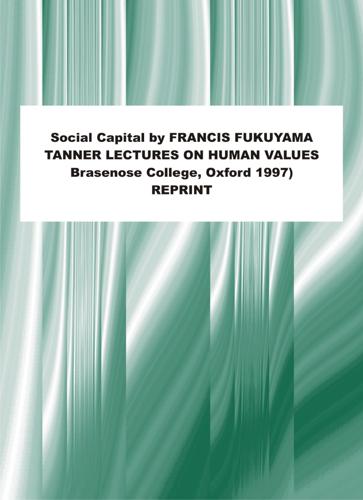
Social Capital and Civil Society
by
Francis Fukuyama
Published 1 Mar 2000
Everyone who has worked in a hierarchical organization knows that there is a constant struggle going on between superiors and subordinates to control information ; the withholding of information is frequently a subordinate’s most important source of leverage over a superior. In addition to principal-agent problems, organizations suff er from other diseconomies of scale related to information-processing. Many transaction costs are internal to organizations and are created by the difficulties in passing information up and down a large hierarchy. W e have all worked in hierarchical organizations in which Department X doesn’t know what Department Y on the next floor is doing.

Rebooting Democracy: A Citizen's Guide to Reinventing Politics
by
Manuel Arriaga
Published 1 Jan 2014
Elections are the oversight mechanism: according to one of the central myths of our democracies, that is the time when citizens “pass judgment” on the performance of the incumbent leaders/party and collectively decide whether they are worthy of reelection. Now, to evaluate how reasonable our collective faith in this mechanism really is, briefly entertain the following analogy. We will take our cue from introductory courses in microeconomics, in which the principal-agent problem is commonly presented by adopting the perspective of a shop owner (the principal) who decides to hire a manager (the agent) to supervise the daily operation of his business. The question we should ask ourselves is: in the absence of strong social norms and/or an emotional tie between the two, how reasonable is it to expect that the manager will perform his job satisfactorily if the shop owner were to drop by the store every four years to check on how well business is going?
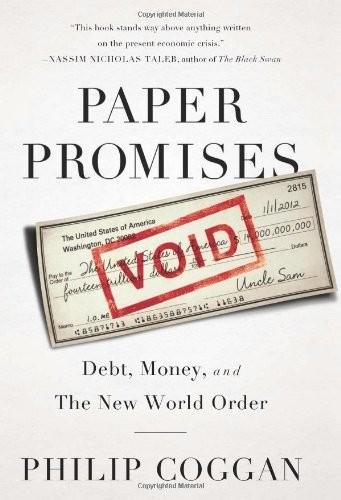
Paper Promises
by
Philip Coggan
Published 1 Dec 2011
Or it may result from a lack of transparency. Financial products are often complex with the result that the effective price is obscure; clients may be paying over the odds without realizing it. The prices charged by the industry represent a transfer of wealth from the rest of the economy. This is a ‘principal-agent’ problem in that the interests of the client and those of the people who handle their money are not aligned. Paul Woolley, a former fund manager, has set up a centre to study what he calls ‘capital market dysfunctionality’ at the London School for Economics. He describes his former industry in harsh terms.
…
leverage leveraged buyout Lewis, Michael Liberal Democrat party (UK) Liberal Party (UK) life expectancy life-cycle theory Little Dorrit lire Live 8 concert Lloyd George, David Lombard Odier Lombard Street Research London School of Economics Long Term Capital Management longevity Louis XIV, King of France Louis XV, King of France Louvre accord Lucas, Robert Lucullus, Roman general Luxembourg Macaulay, Thomas McCarthy, Cormac Macdonald, James MacDonald, Ramsay McKinsey McNamara, Robert Madoff, Bernie Malthusian trap Mandelson, Peter Marais, Matthieu Marco Polo Mares, Arnaud Marks & Spencer Marshall, George Marshall Aid Marshalsea Prison Mauro, Paolo May, Sir George means/media of exchange Medicaid Medicare Mellon, Andrew mercantilism Merchant of Venice, The Meriwether, John Merkel, Angela Merton, Robert Mexico Mill, John Stuart Milne-Bailey, Walter Minsky, Hyman Mises, Ludwig von Mississippi Project Mitterrand, Francois Mobutu, Joseph Mongols monetarism monetary policy monetary targets money markets money supply Moody’s Moore’s Law moral hazard Morgan Stanley Morgenthau, Henry Morrison, Herbert mortgages mortgage-backed bonds Multilateral Debt Relief Initiative Napier, Russell Napoleon, emperor of France Napoleonic Wars Nasser, president of Egypt National Association of Home Builders National Association of Realtors National Association of Security Dealers Netherlands New Century New Hampshire New Jersey Newton, Sir Isaac New York Times New Zealand Nixon, Richard Norman, Montagu North Carolina Northern Ireland Northern Rock North Korea North Rhine Westphalia, Germany Norway Obama, Barack odious debt Odysseus OECD d’Orléans, duc Ottoman Empire output gap Overstone, Lord overvalued currency owner-equivalent rent Papandreou, George paper money paradox of thrift Paris club Passfield, Lord (Sidney Webb) Paulson, Hank pawnbroking pension age pension funds pensions Pepin the Short Perot, Ross Perry, Rick Persians Peter Pan Philip II, King of Spain Philip IV, King of France PIGS countries PIMCO Plaza accord Poland Ponzi, Charles Ponzi scheme population growth populism portfolio insurance Portugal pound Prasad, Eswar precious metals Price-earnings ratio primary surplus Prince, Chuck principal-agent problem printing money private equity property market protectionism Protestant work ethic public choice theory public-sector workers purchasing power parity pyramid schemes Quaintance, Lee quantitative easing (QE) Quincy, Josiah railway mania Rajan, Raghuram Rand, Ayn Reagan, Ronald real bills theory real interest rates Record, Neil Reformation, the Reichsbank Reichsmark Reid, Jim Reinhart, Carmen renminbi Rentenmark rentiers reparations Republican Party reserve currency retail price index retirement revaluation Revolutionary War Ridley, Matt Roberts, Russell Rogoff, Kenneth Romanovs Roosevelt, Franklin D.

A Pelican Introduction Economics: A User's Guide
by
Ha-Joon Chang
Published 26 May 2014
The separation of ownership and control Dispersed ownership means that professional managers have effective control over most of the world’s largest companies, despite not owning any significant stake in them – a situation known as the separation of ownership and control. This creates a principal-agent problem, in which the agents (professional managers) may pursue business practices that promote their own interests rather than those of their principals (shareholders). That is, professional managers may maximize sales rather than profit or may inflate the corporate bureaucracy, as their prestige is positively related to the size of the company they manage (usually measured by sales) and the size of their entourage.
…
This was the kind of practice Gordon Gekko (you’ve met him in Chapter 3) was attacking in Wall Street, when he pointed out the company that he was trying to take over had no less than thirty-three vice presidents, doing God knows what. Many pro-market economists, especially Michael Jensen and Eugene Fama, the 2013 Nobel Economics Prize winner, have suggested that this principal-agent problem can be reduced, if not eliminated, by aligning the interests of the managers more closely to those of the shareholders. They suggested two main approaches. One is making corporate takeover easier (so more Gordon Gekkos, please), so that managers who do not satisfy the shareholders can be easily replaced.

Bean Counters: The Triumph of the Accountants and How They Broke Capitalism
by
Richard Brooks
Published 23 Apr 2018
The overall effect, one former Big Four accountant told me, is that ‘the challenge has gone out of audit’. The demise of sound accounting became a critical cause of the early-twenty-first-century financial crisis. Auditing limited companies, made mandatory in Britain around a hundred years before, was always a check on the so-called ‘principal/agent problem’ inherent in the corporate form of business. As Adam Smith once pointed out, ‘managers of other people’s money’ could not be trusted to be as prudent with it as they were with their own. When late-twentieth-century bankers began gambling with eye-watering amounts of other people’s money, good accounting became more important than ever.
…
McKinsey & Co., 75 Japan, 2, 82, 230–31, 234–5, 240–41 Jennings, Andrew, 220, 224 Jerome, Saint, 35 Jersey, 89, 94–5, 158 job costing, 43 Johnson Matthey Bank, 91, 128 Johnson, Lyndon Baines, 63 joint stock companies, 41 Joint Stock Companies Act 1844: 47 1856: 50 Jones, Lewis Davies, 54, 55, 56 Jowell, Tessa, 196 junk bonds, 85 Kanebo, 240 Kapital, Das (Marx), 3 Kattner, Markus, 225 Keating, Charles, 85–6, 91 Kellaway, Lucy, 275 Kershaw, Sue, 199 Kgosana, Moses, 250 Khodorkovsky, Mikhail, 237 King, Mervyn, 273 Kirby, Paul, 208 Klynveld Kraayenhof, 235 Klynveld, Piet, ix KMG, 235 Knievel, Robert Craig ‘Evel’, 182 Koch Industries, 171 Kohl, Marius, 168, 174–7 KPMG, ix–x, 2, 10, 11, 48, 97, 116–19, 141–2, 149–50, 256–9, 264–7, 276 and Barnier proposals, 255 and Bradford & Bingley, 141–2, 149 and Brexit, 203, 204 and British Aerospace/BAE Systems, 213 Canary Wharf base, 256 Chelsea Flower Show, 200 in China, 244, 245, 251–2 and Civil Service Live conference, 201 Claridges conference (2007), 122 and Co-operative Bank, 142, 149, 150 and Comroad, 240 and collateralized debt obligations (CDOs), 121 and Countrywide Financial Corporation, 48, 118, 257 ‘Cutting Through Complexity’, 11–12 Data & Analytics (D&A), 272 and defence, 188, 189, 200, 202, 216, 217, 265 establishment of (1987), 235 and European Central Bank, 10 and Federal National Mortgage Association (‘Fannie Mae’), 118–19, 257 and FIFA, 220–28 and Financial Crisis Inquiry Commission, 145 and Financial Reporting Council, 144, 209 and General Electric, 5–6 governments, advice to, 186, 187, 188, 189, 191, 192–3, 197–9, 202–6, 249 and GPT, 216, 217 and HBOS, 141, 142–3, 149, 150, 257 and Hinkley Point, 204–6 and Hollinger, 154–5 and Hong Kong protests (2014), 251–2 and House of Lords committee (2010), 146 and HS2, 197–9 and HSBC, 229–30 and Imperial Tobacco, 202, 266–7 in India, 249 integrated reporting, 18 key performance indicators, 12 and Lockheed Martin, 202, 265 and Miller Energy, 261 and Ministry of Defence, 188, 189, 202, 216, 217, 265 and National Health Service (NHS), 192–3, 202, 266 and New Century Financial Corporation, 48, 116–18, 257 No. 20, Grosvenor Street, Mayfair, ix–x, x, 277–8 ‘One Firm’ philosophy, 275 and ‘patent box’ tax breaks, 180 Performance Club 1999 trips, 160 and Petrofac, 218 and private finance initiative (PFI), 186, 187, 188, 189, 191, 249 and Privy Purse, 68 revolving door, 206, 207, 208 and Saudi British Joint Business Council, 218 Scott London Rolex scandal (2013), 15 and securitization, 121, 122 and Siemens, 240 in South Africa, 249–50 and subprime mortgages, 10, 48, 116–19 and sustainable development, 200 and tax avoidance, 154–5, 157, 158, 159–62, 180–81, 182, 186 thought leadership, 12 and thrifts, 87 and Tier One, 257 and Wachovia, 257 and Xerox, 109–10 Kreuger, Ivar, 57 Kubena, Mike, 237 Labour Party, 66, 94, 114, 178, 179, 184–92, 194, 201, 209, 230 Lake Michigan, 73 Land, Nick, 144, 182 Lang, Ian, 95 Last Supper, The (Leonardo da Vinci), 33 Lateran Council, Third (1179), 24 Law Commission, 93 Lawson, Nigel, 146 Lay, Kenneth, 99–100, 104, 107, 108 Leary, Simon, 191 Lehman Brothers, 12, 13, 92, 119, 131–3, 138, 144, 145, 148–9 Leigh, Edward, 189 Lend-Lease programme, 60 Leonardo da Vinci, 33 Levin, Carl, 159, 161 Levitt, Arthur, 96–8, 104 Lewis, Leigh, 207 Lewis, Michael, 112, 118 Liber Abaci (Fibonacci), 21–2 Liberal party, 50, 52 Liechtenstein, 220 limited liability, 50, 52, 91–5, 114 Lincoln Savings and Loan, 85–7 Linklaters, 140 Little, Royal, 61 Liverpool, Merseyside, 49 LJM, 104–5 Lloyds Bank, 140 Lockheed Martin, 202, 212, 265 London, England Big Bang (1986), 156 Canary Wharf, 256 Chelsea Flower Show, 200 Claridges, 122 Gordon Riots (1780), 38 Imperial College, 197 ‘light touch’ regulation, 114, 131, 209 Medici Bank, 26, 30 Olympic Games (2012), 196 Price Waterhouse, 54 Royal London Hospital, 190 School of Economics, 197 St Bartholomew’s Hospital, London, 190 Tate Modern, 16 Long Term Capital Management, 113 Louis XI, king of France, 31 low-balling, 79, 91 Lowe, Robert, 50 Luce, Edward, 17 Lucerne, Switzerland, 220 Luthiger, Fredy, 222, 223, 227 Luxembourg, 165–77, 179, 180, 181, 182, 245, 267–71, 278 LuxLeaks, 169–77, 179, 181, 245, 268, 269, 278 Lybrand, Ross Bros & Montgomery, 87 Lybrand, William, 56 Lynch, Loretta, 219, 223 Lyons, 31 MacGregor, John, 128 Mair, John, 42, 53 Management Consultancies Association, 190 Mandelson, Peter, 95, 207 Mapping the Market, 193 mark-to-market, 99–102, 113, 123, 124, 129–31 mark-to-model, 124–5, 126, 127, 131 mark-to-myth, 124, 131 Marlborough, Duke of, see Churchill, John Martin, William, 122–3 Marwick, James, ix, 48–9, 56, 62, 119, 158, 217, 233, 277 Marx, Karl, 3 Masters Tournament, 104 Masters, Adrian, 191 matches, 57 Mauritius, 158 Maxwell, Robert, 66, 87–8, 91 May, George, 73, 78, 82, 277 May, Theresa, 203 McConnell, Jack, 207 McCreevy, Charles, 164 McDonald’s, 170 McFall, John, 207 McKenna, Francine, 145, 274 McKinsey, 17, 74–7, 79, 81, 99, 108, 183, 191, 226, 263 McKinsey, James, 74–7 McLean, Bethany, 101 Measelle, Richard, 103 Medici family, 16, 26–32, 36 Cosimo, 26, 27, 28, 29, 31 Giovanni, 26 Lorenzo, 28, 29, 30 Medvedev, Dmitry, 17 Melbourne, Victoria, 48 mergers and acquisitions, 11, 54, 59–69, 71, 87 Merrill Lynch, 121 Mesopotamia, 1 Messezentrum conference centre, Zurich, 228 Metcalf, Lee, 80 Metz, France, 172, 173, 176 Mexico, 229 Michael, Bill, 149–50 Microsoft, 271 Milburn, Alan, 184, 191, 194, 207 Mill, John Stuart, 50 Miller Energy, 261 Ministry of Defence, UK, 188–90, 202, 212, 215–19, 265 Missal, Michael, 115, 116–17 Missouri, United States, 74 Mitchell, Andrew, 206, 208 Mitchell, Austin, 94, 230 Mitchell, Roger, 48, 56 Model T Ford, 71 Modern Times, 71 Monde, Le, 169 monetarism, 84 money laundering, 229–31 Montagu, Nicholas, 207 Monty Python, 15–16 Moore, Paul, 141 Morgan, Henry, 39 Morgan, John Pierpont, 54–5 Morgan Stanley, 119, 148 Morse, Amyas, 206 mortgage-backed securities (MBS), 120–21 Moselle, France, 171 Mossack Fonseca, 247 Mouget, Didier, 170, 171, 173 Mumbai, Maharashtra, 242 Munger, Charlie, 18, 135, 147 Myners, Paul, 146 Nally, Dennis, 5, 148 Nassau, Bahamas, 222 National Aeronautics and Space Administration (NASA), 76 National Audit Office, 187, 189, 206 National Crime Agency (NCA), 272 National Health Service (NHS), 183–4, 187, 190, 191–5, 266 National Westminster Bank (NatWest), 136 Nazi Germany (1933–45), 4, 234, 251 Neoplatonism, 28 Netherlands ABN Amro, 138 Ballast Nedam, 218–19 Klynveld Kraayenhof, 235 Royal Ahold, 238–9 Spanish (1556–1714), 36 taxation, 163, 164–5 New Century Financial Corporation, 48, 115–18, 257 New Delhi, India, 245, 249 New Labour, 114, 184–92, 194, 209 New York, United States, 57 beer business, 54 Britnell’s ‘Reform Revolution’ speech (2011), 192–3 County Law Association, 153 Deloitte compensation case (2009), 239 FIFA indictment (2015), 219, 223 Harris’ advisory services speech (2014), 264 Issuers’ and Investors’ Summit on CDOs/Credit Derivatives (2006), 121 Levitt’s ‘Numbers Game’ speech (1998), 96, 98 Marwick & Mitchell, 48 Price Waterhouse, 54 Stock Exchange, 55, 115, 234 Wall Street, 54, 69, 96, 101, 120–21 New York Times, 118, 236 New Zealand, 256 Newton, Isaac, 22 Nicholson, Kevin, 178, 182 Nieuwe Instructie (Christoffels), 36 Nike, 163 No. 20, Grosvenor Street, Mayfair, ix–x, x, 277–8 Noncomformism, 42 Norte del Valle Cartel, 229 Northern Rock, 125–9, 142–3, 148 Norway, 72 nuclear power, 204–6 ‘Numbers Game’ speech (1998), 96, 98 O’Donnell, Augustine ‘Gus’, 207 O’Rourke, Feargal, 164, 165 off-balance-sheet financing, 101, 102, 104, 106 Office of Tax Simplification, 179 oil crisis (1973), 84 oil-for-food programme, 225, 240 Olympic Games (2012), 196 Olympus, 241 One Hundred Group, 254 OPIS (Offshore Portfolio Investment Strategy), 159, 162 Oppenheimer & Co., 112–13 Organization for Economic Cooperation and Development (OECD), 170, 181, 214 Osborne, George, 149, 182, 248 Oscars, 16 Overend & Gurney, 51, 126 Oxford University, 181, 184 Oxley, Michael, 114, 122 de Pacioli, Luca Bartolomeo, 32–6, 34, 100, 124 Page, Stephen, 272 Pain, Jon, 208 Palin, Michael, 15–16 Palo Alto, Silicon Valley, 82 Panama Papers scandal (2016), 247 Panorama, 169, 220 Paradise Papers scandal (2017), 7, 247 Parmalat, 239, 243 Parrett, William, 148 partners, 8 Pearson, 169, 270 Pearson, Ian, 207 Peat, Marwick, Mitchell & Co., 48, 60, 63, 64, 79, 82, 233, 235 Peat, Michael, 68 Peat, William Barclay, ix, 48, 49, 68, 233, 277 Penn Central Transport Company, 64, 79 pension funds, 67 Pepsi, 166 Pergamon, 66 Perrin, Edouard, 168, 169, 171–2, 173, 174, 175 Persson, Mats, 208 Perugia University, 32 Pessoa, Fernando, 1 Peston, Robert, 197 Peterborough hospital, Cambridgeshire, 191 Petits secrets des grandes enterprises, Les, 169 Petrofac, 218 Pfizer, 163 Piot, Wim, 173, 181, 182 Pisa, Italy, 21 place value’ system, 21 political donations, 98 Ponzi schemes, 89 ‘pooling-of-interest’ accounting, 61–2, 63, 67, 96 post-balance sheet events, 72 Powell, Ian, 128, 201–2 Poynter, Kieran, 148, 150 premiums, 45 Presbyterianism, 42 Price, Samuel Lowell, 49 Price Waterhouse & Co., 49, 53–6, 57, 65, 67, 72, 73, 78–9, 82 and conflicts of interest, 73, 277 consultancy, 78–9, 81, 82 Coopers & Lybrand, merger with (1998), 49, 95 in Germany, 233 and Great Crash (1929), 57 in India, 233 international co-ordinating company, 234 and limited liability partnerships, 94 Palo Alto technology centre, 82 and private finance initiative (PFI), 185 in Russia, 236 and tax avoidance, 164 and tax code (1954), 153–4 and United States Steel, 55, 62, 233 PricewaterhouseCoopers (PwC), 2, 5, 6, 49, 95, 97 and American International Group, 134–5, 144, 145, 148 and Bank of Tokyo-Mitsubishi, 230–31 and Barclays, 6 Booz & Co. acquisition (2013), 263–4 and Brexit, 203 and British Home Stores (BHS), 260 Building Public Trust Awards, 256 ‘Building Relationships, Creating Value’, 12 and Cattles plc., 142 cyber-security, 272–3 establishment of (1998), 49, 95 and Financial Crisis Inquiry Commission, 145 and Financial Reporting Council, 142, 144, 209, 210 global operations, 235–6 and Goldman Sachs, 134–5, 148 and Google, 271 and GPT, 217, 218 and Heineken, 246 and Hong Kong protests (2014), 251–2 in India, 242 integrated reporting, 18 and Kanebo, 240 and Labour Party, 201 and National Health Service (NHS), 192, 194, 200 and Northern Rock, 126, 127–9, 142–3, 148 and Olympic Games (2012), 196 presentation (2017), 16 and private finance initiative (PFI), 187, 188–91, 196, 249 profits, 5 revolving door, 207, 208 and RSM Tenon, 210, 261 in Russia, 236–8 and Saudi British Joint Business Council, 218 and securitization, 121, 122, 129 and tax avoidance, 157, 165–79, 180, 182, 237, 246, 267–71, 278 thought leadership, 12 total tax contribution survey, 179 and Tyco, 109 in Ukraine, 238 and Vodafone, 165–6 Prince of Wales’s charity, 181 principal/agent problem, 13 Prior, Nick, 190 Privatbank, 238 Private Eye, 169, 180, 215, 255 private finance initiative (PFI), 185–91, 196, 203, 249 Privy Council, 94 Privy Purse, 68 production-line system, 71 productivity growth, 262–3 professional scepticism, 112, 130, 214, 224 professional services, 11, 72, 150, 183, 204–5, 251, 275, 279 Professional Standards Group, 105–7 Project Braveheart, 106 Project Nahanni, 102 Protestant work ethic, 3 Protestantism, 3, 42, 43 Prudential, 157 Public Accounts Committee, 281 Public Company Accounting Oversight Board (PCAOB), 144–5, 242–3, 253, 261, 274 Puerto Rico, 163 Putin, Vladimir, 17, 237 Qatar, 228 Quakers, 42, 49 Railway Regulation Act (1844), 45 railways United Kingdom, 44–7, 49, 115 United States, 51, 52, 53, 70, 73 Rake, Michael, 144, 149, 150, 162, 181, 257 Raptors, 105 Rayonier, 59 Reagan, Ronald, 80, 84, 154, 184 Reckoning, The (Soll), 27 Redpath, Leopold, 46 regulation, UK, 13, 127, 209–10, 213–14, 259 and Brexit, 273 deregulation (1980s), 95 and financial crisis (2007–8), 127–8, 137–45 Financial Conduct Authority, 140, 149, 281 Financial Reporting Council, 138, 142, 144, 149, 182, 209–10, 213–14, 259, 261 Financial Services Authority, 127, 128, 137, 138, 140 ‘light touch’, 114, 131, 209–10 Railway Regulation Act (1844), 45 self-regulation, 88, 90 regulation, US, 91, 260 Bush administration (2001–2009), 114, 145, 253 Celler–Kefauver Act (1950), 59, 61 competition on price, 79–80 deregulation (1980s), 84–5, 95, 112 derivatives, 122 and Enron, 99 and Lincoln Savings and Loan, 85–7 mark to market, 99 numbers-game era (1990s), 110 Public Company Accounting and Oversight Board, 242–3, 253, 260 Roosevelt, Theodore administration (1901–9), 56–7 Sarbanes–Oxley Act (2002), 114, 122 self-regulation, 61 Trump administration (2017–), 273, 274 and Westec collapse (1966), 63 see also Securities and Exchange Commission Renaissance, 3, 16, 22, 24–37 Renjen, Punit, 275 ‘Repo 105’ technique, 131–3, 149 revolving door, 206–8, 272 Ripley, William Zebina, 57 Robson, Steve, 144, 207 Rockefeller, John Davison, 53, 71 Rolex, 15, 215 Rolls-Royce, 213 Roman numerals, 22 Rome, ancient, 24 Rome, Italy, 25, 27 Roosevelt, Franklin, 58 Roosevelt, Theodore, 56 de Roover, Raymond, 27 Rowland, Roland ‘Tiny’, 66 Royal African Company, 37 Royal Ahold, 238–9 Royal Bank of Scotland, 47, 90, 136–40, 142, 157, 241, 259 Royal London Hospital, 190 RSM Tenon, 210, 261 Russian Federation, 17, 236–8 Ryan, Tim, 134, 148 Saltwater Slavery (Smallwood), 37 Samek, Steve, 103 SANGCOM, 214–19 Sansepolcro, 32 Sarbanes, Paul, 114, 122 Sarbanes–Oxley Act (2002), 114, 122 Sassetti, Francesco, 16, 29, 30, 31, 41 Satyam, 242 Saudi Arabia, 212–19, 221 Saudi British Joint Business Council, 218 Saunders, Stuart, 64 Save South Africa, 250 savings-and-loan mutuals, 84–7, 91, 99 Sberbank, 237 Scarlett, John, 207, 272 Schlich, William, 149 Schumpeter, Joseph, 3 scientific management, 71, 76 Scotland, ix, 42, 47–9, 70, 224 Scuola di Rialto, Venice, 32 Second World War (1939–45), 59, 60, 77, 234 Secret Intelligence Service, 207, 272 Securities Act (1933), 58 Securities and Exchange Commission (SEC), 281 and consulting, 80, 104 and Enron, 99, 104, 108 and Hollinger, 154 Levitt’s ‘Numbers Game’ speech (1998), 96, 98, 104 and Lincoln Savings and Loan, 85, 86 and Penn Central Transport Company, 64 and ‘pooling-of-interest’ accounting, 61, 62 and Public Company Accounting Oversight Board (PCAOB), 144 PwC India fined (2011), 242 and Xerox, 109–10 securitization, 101–2, 116, 119–23, 125, 129–31, 133–40, 148, 265 Seidler, Lee, 68–9, 79 self-regulation, 6, 61, 88 Serious Fraud Office, 213, 216, 217, 218, 219 Sexton, Richard, 129, 268, 278 shadow banking system, 115 Shanghai, China, 17 Shaxson, Nicholas, 247 Sheraton, 59 Sherlock, Neil, 208 short selling, 112, 115, 116 Siemens, 240 Sikka, Prem, 94 Silicon Valley, California, 82 Simec International Ltd, 214, 215 Sinaloa Cartel, 229 Sinclair, Upton, 14 Singapore, 163 Sino-Forest, 244 Skilling, Jeff, 99–100, 101, 105, 108 Skinner, Paul, 208 Slater, James, 65 slave trade, 4, 37 Smallwood, Stephanie, 37 Smallwood, Trevor, 158 Smartest Guys in the Room, The (McLean and Elkind), 101 Smith, Adam, 13 Smith, Jacqui, 207 Snell, Charles, 40 Social Justice Commission, 184 Soll, Jacob, 27 Sombart, Werner, 3–4, 22 SOS (Short Option Strategy), 159, 162 South Africa, 213, 223–4, 249–50 South Sea Company, 39–41, 42, 44 Soviet Union (1922–91), 236 Spacek, Leonard, 62, 77–8 Spain, 36, 39, 241 special investment vehicles, 115 Spinwatch, 201 Sproul, David, 256, 258 St Bartholomew’s Hospital, London, 190 St Louis, Missouri, 56 Standard & Poor’s, 149 Standard Chartered Bank, 230, 231 Starbucks, 178 steam engine, 43 Stein, Jeffrey, 161 Stephenson, George, 44 Stevens, Mark, 82–3 Stevenson, James, 1st Baron Stevenson, 141 Stiglitz, Joseph, 114 stock market, 68, 69, 92, 96 ‘Go-Go’ years (1960s), 62, 65 and Great Crash (1929), 57, 58 and J.

The Glass Half-Empty: Debunking the Myth of Progress in the Twenty-First Century
by
Rodrigo Aguilera
Published 10 Mar 2020
In the typical capitalist firm, pay is negotiated between its executives and the board of directors — which is mostly composed of executives from other firms, often creating a significant conflict of interest through “interlocking” (when two or more companies have executives serving in each other’s boards6). There is no legal or institutional impediment for executives to raise their own compensation at the expense of employees. In fact, they may even do so at the expense of shareholders themselves. This “principal-agent problem”7 has been extensively documented in economics, and while many economists take the shareholder-theory view that executive pay is designed to align with shareholder incentives (such as through stock options linked to firm performance) in order to address this problem, others take the opposing view that it is part of the problem.
…
A far larger share are just a few steps in the network away from each other, essentially turning the Hallock, K.F., “Reciprocally Interlocking Boards of Directors and Executive Compensation”, The Journal of Financial and Quantitative Analysis, 32(3), Sep. 1997, https://doi.org/10.2307/2331203 7 The principal-agent problem has it that principals (shareholders) and agents (executives) have different objectives, with the former looking to maximize firm value whereas the latter seek their own self-interest (higher pay, creating empires). This creates a moral hazard problem if executive compensation is not designed in a way which aligns these separate incentives. 8 Bebchuk, L.A. and Fried, J.M., “Executive Compensation as an Agency Problem”, Journal of Economic Perspectives, 17(3), Feb,. 2003, http://doi.org/10.2139/ssrn.364220 9 Conyon, M.J., “Executive Compensation and Incentives”, Academy of Management Perspectives, 20(1), Feb. 2006, https://doi.org/10.5465/amp.2006.19873408 10 Melin, A., “Executive Pay”, Bloomberg, 23 Jan. 2018, https://www.bloomberg.com/quicktake/executive-pay 11 Mishel, L. and Wolfe, J., “CEO Compensation has grown 940% since 1978”, Economic Policy Institute, 14 Aug. 2018 https://www.epi.org/publication/ceo-compensation-2018/ 12 “What’s the right ratio for CEO-to-worker pay?”
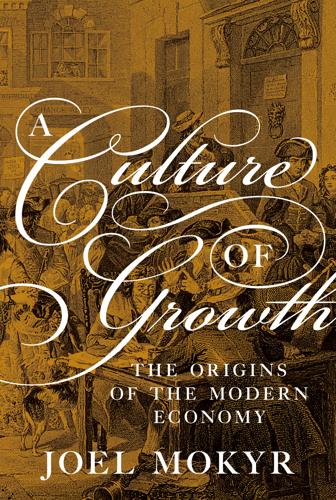
A Culture of Growth: The Origins of the Modern Economy
by
Joel Mokyr
Published 8 Jan 2016
One reason is that the “imperfect empathy” postulated by Bisin and Verdier may not be a full characterization of the behavior of the parents; it is more persuasive to write an altruistic utility function in which the parents cared exclusively about the happiness of their children as they saw it, which may mean that the culture they acquire for their children diverges significantly from their own culture if they regret their own past cultural choices (Christopoulou, Jaber, and Lillard, 2013). Alternatively, even if the parents choose an outsider to socialize their offspring in their own image, there may be a serious principal-agent problem, because the parents can only monitor their children’s socialization process imperfectly. It might be thought that in the modern age vertical transmission has become relatively unimportant. In her popular The Nurture Assumption, Harris (2009) amasses a great deal of evidence to show that the cultural impact of parents on their children in today’s society is limited.
…
As we have seen, culture can affect Smithian growth through the creation of an ideological environment (or, as some would prefer to call it, social capital) that is conducive to commerce and better-functioning markets. A Lockean belief in property rights, for example, or a belief that most people are trustworthy leads to the reduction of transactions costs and thus stimulates commerce. Related to trust is loyalty, which mitigates principal-agent problems. A belief in the virtuousness of loyalty to an employer or an organization saves monitoring costs and thus enhances both efficiency and trade. Public-mindedness (or asabiya in Ibn Khaldun’s famous formulation), is a third cultural element related to cooperation: the willingness to avoid free-riding and contribute to a collective good despite the incentive that each individual has to shirk.
…
Princeton, NJ: Princeton University Press. Smith, Pamela H., and Schmidt, Benjamin. 2007. “Knowledge and Its Making in Early Europe.” In Pamela H. Smith and Benjamin Schmidt, eds., Making Knowledge in Early Modern Europe. Chicago: University of Chicago Press, pp. 1–16. Sng, Tuan Hwee. 2014. “Size and Dynastic Decline: The Principal-Agent Problem in Late Imperial China 1700-1850.” Explorations in Economic History, Vol. 54, pp. 107–27. Snobelen, Stephen D. 1999. “Isaac Newton, Heretic: the Strategies of a Nicodemite.” British Journal for the History of Science Vol. 32, pp. 381–419. ———. 2012. “The Myth of the Clockwork Universe: Newton, Newtonianism, and the Enlightenment.”

Termites of the State: Why Complexity Leads to Inequality
by
Vito Tanzi
Published 28 Dec 2017
If stabilization policies and the interventions by central banks reduced the incentives to make the corrections, history would be more likely to repeat itself. As economies become more developed, and as governmental activities and interventions increase, complexity is likely to become an issue; principal agents’ problems, which are always present in the real world, become more common and potentially more damaging within the public sector; the identification of what is the public interest, always a difficult enterprise, as Kenneth Arrow pointed out seven decades ago, becomes more difficult; failure or policy mistakes of various kinds become more likely; various forms of asymmetry in information in market transactions become common; corruption, either of the clearly illegal and thus punishable kind or, in its more modern versions, of a “legal” kind (the one that hides itself behind the interpretation of existing norms, or even in the drafting of norms that are created specifically to help some vested interests), becomes more common; and so on. 112 Termites of the State The increasing complexity of the market and the growth of governmental intervention have contributed to the development of less transparent, or seemingly less legitimate, relationships among individuals in the private sector, or between individuals in the private sector and some in the public sector.
…
It is these contacts and connections that make some lobbyists particularly valuable to those who hire them (see Bertrand et al., 2014). Some institutions must be created to deal with the needs and the operations of governments, in the hope that they will be able to perform their tasks efficiently. The absence of principal–agent problems in behavior and the assurance of efficiency in performance are necessary elements for these institutions. However, the more complex the issues become, the 174 Termites of the State more difficult it is for governments’ institutions to perform well the tasks assigned to them, and the more likely it is that governance problems of various natures will develop and become serious.
…
Not surprisingly, Congress had rejected this proposal, because it would have reduced its own political power on spending decisions. In all of these actions there will be inevitable mistakes, time lags, departures from the optimal size and structure of the stimulus package, and the appearance of possible principal–agent problems within the policy actors (executive branch, legislature, and also the individuals in the public administration), as the early debates between supporters and skeptics about the Keynesian stabilization policies had stressed in the 1940s through the 1960s (see, for example, the informative book by Stein, 1969).
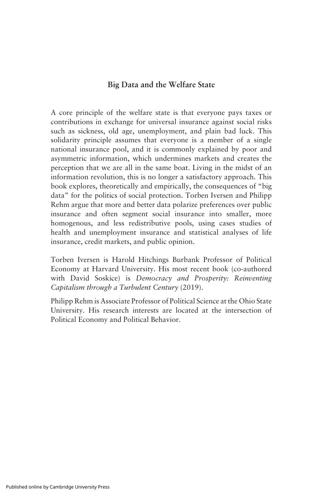
Big Data and the Welfare State: How the Information Revolution Threatens Social Solidarity
by
Torben Iversen
and
Philipp Rehm
Published 18 May 2022
For “ordinary” risks, information and funded systems therefore have the potential to solve the market failure problem, but this is not synonymous with saying that they will induce majority support for marketization. The effects of moving to a market system are uncertain, even if risk data are plentiful. The US private health insurance system, while highly regulated, makes it harder to control costs because insurers lack the monopsony power of single-payer public systems and often face pervasive principal–agent problems (which are, of course, themselves rooted in incomplete information). The average voter is not able to discern all the pros and cons of market reforms, and they are therefore likely to adopt a cautious stance on such reforms. Our third argument is that despite this, mass preferences for social protection should gradually shift with increased information about risks and with the growing feasibility of markets.
…
For “ordinary” risks, information and funded systems therefore have the potential to solve the market failure problem, but this is not synonymous with saying that they will induce majority support for marketization. The effects of moving to a market system are uncertain, even if risk data are plentiful. The US private health insurance system, while highly regulated, makes it harder to control costs because insurers lack the monopsony power of single-payer public systems and often face pervasive principal–agent problems (which are, of course, themselves rooted in incomplete information). The average voter is not able to discern all the pros and cons of market reforms, and they are therefore likely to adopt a cautious stance on such reforms. Our third argument is that despite this, mass preferences for social protection should gradually shift with increased information about risks and with the growing feasibility of markets.
…
For “ordinary” risks, information and funded systems therefore have the potential to solve the market failure problem, but this is not synonymous with saying that they will induce majority support for marketization. The effects of moving to a market system are uncertain, even if risk data are plentiful. The US private health insurance system, while highly regulated, makes it harder to control costs because insurers lack the monopsony power of single-payer public systems and often face pervasive principal–agent problems (which are, of course, themselves rooted in incomplete information). The average voter is not able to discern all the pros and cons of market reforms, and they are therefore likely to adopt a cautious stance on such reforms. Our third argument is that despite this, mass preferences for social protection should gradually shift with increased information about risks and with the growing feasibility of markets.

Money Changes Everything: How Finance Made Civilization Possible
by
William N. Goetzmann
Published 11 Apr 2016
In a sense, much of the philosophical discourse in China before and after the reunification relates in some way to the problem of bureaucracy—a system in which one person works under the direction of another in an organization. Embedded in large-scale organizational structure is a fundamental issue that is called by modern economists the “principal-agent problem”: a principal (boss) must delegate a task to an agent (employee). The problem is that by delegating a task, the principal cannot be sure that it will be done exactly as he or she wishes. The agent might not work hard or might be dishonest. Agency can be thought of as a problem of motivation, but it is also a problem of information.
…
A paper certificate from the Song dynasty that functioned as a means of payment for military supplies. TRAVELING MONEY Stephen Ross is a finance professor at the Massachusetts Institute of Technology and is one of the creators of modern financial theory. Among many other things, he developed the basic theoretical framework of the principal-agent problem. He is also a good friend of mine who shares an interest in China. One day I was visiting his office and I idly glanced at a document framed on his wall. I realized, to my surprise, that I could read some of the Chinese characters. I could make out the characters for “money” and a couple of characters that seemed to read “Great Song” (i.e., the name of the Song dynasty).
…
See Sulpicii banking family portfolio optimization, 504–8 Portuguese discovery and trade, 315, 316 Pouget, Sébastien, 298–99 power: debt of nation-states and, 401–3, 421; of government, undermined by investment class, 57; reorganized by finance, 8; of Roman wealthy class, 105 predatory loans, in ancient Near East, 64 present value, 243–44; Fisher on investment decisions and, 471–72, 484 prestiti, 229–32, 236–37, 254 price of time: Drehem tablet and, 40; rate of return as, 6–7; Venetian government debt and, 237 prices controlled by Chinese government: Guanzi on, 161; Wang Anshi and, 190; Zhouli and, 174 prices of commodities. See commodity prices principal-agent problem, 167, 169. See also agency problem private enterprise: becoming instrument of European governments, 305; Fibonacci’s Liber Abaci and, 248 private enterprise vs. state ownership in China: Han dynasty and, 174; Song dynasty and, 189–91; up to 1949, 200, 426 privatization: of Athenian silver mines, 88–89; vs. nationalization, 302–3; of Roman Empire functions, 103 probability, 258; in China, 270–72; Condorcet’s social vision and, 273, 274, 275; derivative pricing and, 284; diversification of investments and, 404; Hoyle on card games and, 367; Law’s understanding of, 349; Malthus’s pessimistic predictions and, 274–75; modern finance and, 276; mortality and, 262.

Governing the Commons: The Evolution of Institutions for Collective Action
by
Elinor Ostrom
Published 29 Nov 1990
C., 3 Picht, c., 55,64 Pinkerton, E., 23, 218n6, 220n21 Plott, C. R., 30 Pocock, D., 218n6 policy analysis, 23-6, 191-2 policy prescriptions as metaphors, 21-3, 184-5 policy space, 142 1>001, J., 5 Popper, K. R., 38 Port Lameron Harbour, Nova Scotia, 179-80 Scotian inshore fisheries 229n33 108-9, 119, l>rice, M., 225n7 277 Index principal-agent problem, 17 prisoner's dilemma, 3-5, 6-7, 11, 16,39, 42-3,46-8, 182-3, 217nl see also games privatization, 12-14, 136 see also property rights, private; voluntary association privileged group, 111 profit maximization, 207 property rights, 20, 66-7 communal, 13, 60-4, 66, 224n3, 224-5n5, 229n37; see also common pool resource private, 12-13, 18,22,60-1,63--4,157, 175-6; see also privatization provision, 32-3, 47, 49-50, 55-6, 223n26 demand-side problem of, 49 supply-side problem of, 49 see also design principles, congruent rules entrepreneurship, 127-33 133-6 quasi-voluntary compliance, 94-5, 97-9, 125-6, 229n39 see also compliance rate Rabibhadena, A., 241n26 Radnitzky, G., 221n6 Rahman, A., 241n26 H., 217n1 action, 33-8, 193 rationality principle, 38 see also rational action Raymond Basin, California, 111-14, 116, 122, 124, 128, 134, 179-80,189-90,202,209,212-13, 231n8,232n18,235n32 exchange pool in, 114 report of the referee in, 111-12 watermaster in, 114, 125, 234n26 see also California groundwater basins Reder, M. w., 243n15 Renshaw, w., 232n18 rent dissipation, 48-9, 145, 150, 155, 157, 179, 238n6 Replenishment District Boundary Committee, 131 resource common pool, see common pool resource flow, 30,47 nonstationary (fugitive), 13 open-access, 32,175-6 renewable, 30-1 stock, 30, 47 see also common pool resource resource system, 13, 30-3, 43 resource units, 30-3, 43 Rhodes, R.
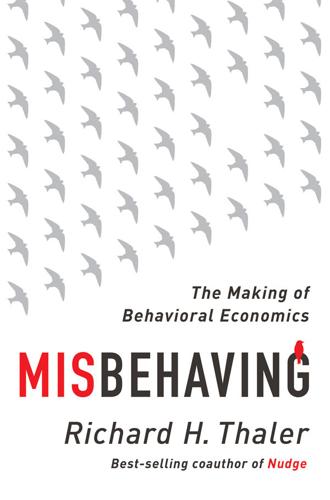
Misbehaving: The Making of Behavioral Economics
by
Richard H. Thaler
Published 10 May 2015
In this example, narrow framing prevented innovation and experimentation, two essential ingredients in the long-term success of any organization. Both this example of the risk-averse manager and the story of the CEO who would have liked to take on twenty-three risky projects, but would only get three, illustrate an important point about principal–agent problems. In the economics literature, such failures are usually described in a way that implicitly puts the “blame” on the agent for taking decisions that fail to maximize the firm, and acting in their own self-interest instead. They are said to make poor decisions because they are maximizing their own welfare rather than that of the organization.
…
Furthermore, on the few occasions where the team did trade down in the first round, getting a later first-round pick plus an additional second-round pick, the extra pick would not last long. The extra pick had the feel of “house money” and was usually traded away quickly to grab another “sure thing.” The failure of teams to draft optimally is a good example of a situation where a principal agent problem would be more accurately labeled a dumb principal problem. When an economist says of a team trading up, “That is just an agency problem,” they mean that the general manager or the coach is worried about his job and needs to win now or get fired. Of course, it is perfectly rational for coaches and general managers to be worried about losing their jobs—they do often get fired.

People, Power, and Profits: Progressive Capitalism for an Age of Discontent
by
Joseph E. Stiglitz
Published 22 Apr 2019
Globalization, in the manner in which it has been structured, has diminished the ability of unions to gain pay raises for their workers, and this reduction in their effectiveness has contributed to diminished membership. Union leaders sometimes do not adequately reflect the interests of their members, referred to as the principal agent problem—something that arises in all organizations in the presence of imperfect information/accountability. 59.Alexander Hertel-Fernandez has done interesting work on the links between the decline of unions, increasing inequality, and how these trends are related to politics. See his book Politics at Work: How Companies Turn Their Workers into Lobbyists (New York: Oxford University Press, 2018). 60.More generally, there are a whole set of rules that govern unions, which affect how easily they can get members and collect dues, how likely they can win an election to give them the right to represent the workers in a plant, and how effectively they can bargain.
…
Sebelius, 330n20 national identity, capitalism’s effect on, xxvi national income, 53–54 National Labor Relations Board, 292n60 national wealth, 54 nativism, xxi, 26, 240 natural monopolies, 61, 134 Nazi Germany, 15–16 negative sum game, 113 neoliberalism, 150, 238, 240; See also market fundamentalism; market liberalization Netflix, 148 net neutrality, 147–48 Netscape, 58 Neumann, John von, 119 Never Trumpers, 26 New Deal, 12, 242 “new economy,” 32, 61 news media, See media 1984 (Orwell), 128 Nixon, Richard M., 210 noncompete clauses, 65–66 nongovernmental organizations, 148–49, 245 norms fragility of, 230–36 Republican violation of, 166–67 and revolving door, 173 not-for-profit universities, 148–49 “notice and comment,” 146 Nuance, 286n34 nutrition, access to, 203 OASDI (Old Age, Survivors, and Disability Insurance), 13 Obama, Barack, and administration antitrust actions, 62 bank bailout (2008), 102–3, 113–14 Merrick Garland nomination, 166–67 inequality issue, 39–40 public option for Affordable Care Act, 211 Obamacare (Affordable Care Act), 40, 211–13 obesity, 146–47, 277–78n37 OECD (Organization of Economic Cooperation and Development), 36 oil industry, 168 oligopoly, in academic publishing, 76 on-call scheduling, 66, 197 1 percent and country’s overall growth, 19 income growth, 33, 103, 192 and public well-being, 244 share of nation’s wealth, 38, 43 strategies to maintain power, 27 Open Internet Order, 147 open society, 185 opportunity government involvement to promote, 142 inequality in, 44–45 intergenerational transmission of advantage/disadvantage, 199–201 restoring, 197–201 Opportunity Insights, 44–45 organized labor, 66–67, 86–87 “originate-to-distribute” banking model, 110 Orwell, George, 128 oversight, judicial/congressional, See regulation overtime, 66 ownership of data, 129–30 Oxfam, 43 PACs, See political action committees Pai, Ajit, 147 Paris Agreement, 207 part-time work, 66, 193, 214 patents, 59, 74–75, 126–27 patent trolls, 286n34 pattern of trade, 90–91 Paul, Rand, xix Paxton, Robert O., 15–16 per capita income, China, 37, 96 perfect competition, monopoly vs., 56 perfect price discrimination, 318n17 Petersen, Matthew Spencer, 17 Pew Mobility Project, 45 pharmaceutical companies, See Big Pharma Phishing for Phools: The Economics of Manipulation and Deception (Akerlof and Shiller), 63–64 Piketty, Thomas, 278n38 place-based policies, 187–88 Pledge of Allegiance, 202 polarization, of job market, 119 political action committees (PACs), 169, 171, 172 political manipulation, 128 political opinion, 75 political parties, public disenchantment with, 174 political power, market power and, 77 politics failures of, 5–7 to manage economic consequences of innovation, 121 power of financial sector in, 116 reforming rules of, xxvi pollution, 143; See also environment population growth, 9, 11 populism, 26 postindustrial world, facilitating transition to, 186–88 poverty education and, 200 and inequality of opportunity, 44–45 intergenerational transmission of, 200 life expectancy and, 41 power abuses of, See abuses of power competition vs., 22, 23 market, See market power PPP (purchasing power parity), 272n12 predatory behavior, 145 predatory pricing, 69 pre-distribution, xxv, 198 preemptive mergers, 60–61, 70, 73 price discrimination, 57, 64, 125 pricing power, 48, 50 principal agent problem, 291n58 prisons, See incarceration privacy, 127–30, 135 private equity, 258n6 private prisons, 323n8 private sector, government’s efficiency compared to, 142 productivity human/physical capital investment and, 36–37 improving, 182–83 knowledge and, xxiv, 183–86 restoring, 181–86 in US vs. other advanced countries, 36–37 wages no longer correlated with, 38 wealth of nations and, 9 working hours and, 191 profits from bank fees, 110 in China, 95 competition as threat to, 48 explaining increase in, 54–62 fractional reserve banking and, 111 globalization and, 80 from mergers, 107–8 as source of rent wealth, 54 progressive agenda and party reform/rebuilding, 175–76 in Preamble to the Constitution, 242 to promote general welfare, 242–47 Progressive Era, 12 progressive movements, 175–76 progressive taxation, 198 property rights, trade agreements and, 83, 84 protectionism, 35, 79, 89–92, 94, 240 Protestant Reformation, 10 public education, 200–201 public good(s) data as, 131 markets’ failure to provide, xxiii, 140–41 media as, 11, 133 nongovernmental organizations and, 148–49 research and, 184 public institutions, fragility of, 230–36 Public Interest Doctrine, 352n21 public option(s), 210–11, 220 and Affordable Care Act, 213 for mortgages, 216–18 for retirement savings, 215–16 public–private partnerships, 142 public sector, 115–16; See also government public transit, returns on, 195 public utility, reclassifying Facebook as, 134 purchasing power parity (PPP), 272n12 Putin, Vladimir, 235 Qualcomm, 59 quality of life; See also standards of living access to health care, 212–13 education, 219–20 ensuring decent life for all, 209–21 home ownership, 216–18 secure retirement, 214–16 racial discrimination, 40, 125, 180–81, 201–4; See also discrimination racial inequality, 40 racial justice, economic justice and, 176, 203–4 racism, 203, 241; See also discrimination; racial discrimination rate of return on capital, 53 Reagan, Ronald, and administration economic dogma, 112 financial liberalization, xiii and growth of inequality, 45 laws enabling greater market power, 78 redirection of values, 28 tax cuts, 25 Trump’s parallels with, xvi Reaganomics, xiv–xv, 26–27; See also supply-side economics real estate interests, 168–69 real estate taxes, 206 reason, 11, 228–29 Reconstruction, 241 redistribution, xxv, 122, 156, 198 regressive taxation, 267–68n41 regulation checks and balances on, 232–33 of data, 128–31 failure to keep pace with changing economy, 146–47 2008 financial crisis and, 101–2 financial sector, 115 freedom and, 144 government and, 143–48 importance of, 150 innovation and, 134 process of, 145–46 restoration of, 146–48 of social media, 134–35 of tech giants, 124–25 trade agreements and, 83, 84 regulatory harmonization, 88 regulatory takings, 301n8 relationship banking, 110 religion, 10, 145 religious Right, 223 Renaissance, the, 8 rents and appropriation of wealth by the 1 percent, 244 capitalized, 282n17 failure to share with workers, 282n19 and national income pie, 51–52, 54 profits as source of, 54 taxation of, 206 rent-seeking, xxiv, 52, 113, 169, 229, 244 representative democracy, 6 Republican Party and Affordable Care Act, 213 anti-science stance, 20 and Citizens United, 170 composition of, 175 and corporate tax rates, 85 fiscal stimulus during Great Recession, 121 and gerrymandering, 6, 159 indifference to those left behind by globalization/technology, 186 and lack of consequences for elites in Great Recession, 152 and money in politics, 168 power-seeking objectives, 160 and Supreme Court’s loss of status as fair arbiter, 165–67 and 2017 tax bill, 237 Trump vs.
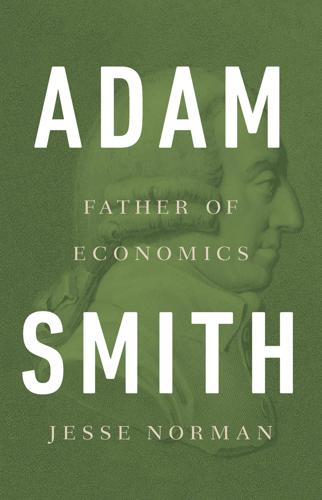
Adam Smith: Father of Economics
by
Jesse Norman
Published 30 Jun 2018
Smith notes that ‘in the long run the workman may be as necessary to his master as his master is to him; but the necessity is not so immediate.’ But the structure of the market does not allow workers to take financial value out of their long-term importance to employers. The third is what has since become known as the principal–agent problem: the problem that someone charged with carrying out a task may have a conflict of interest, an agenda of their own which affects their judgement or performance. Smith comes to this by discussing the difference between ‘joint-stock’ companies such as the East India Company, whose shares could be traded and which often had many passive outside shareholders, and partnerships or ‘copartneries’, whose members or shareholders have unlimited liability and so an interest in the company that is far more closely tied to its fortunes.
…
See Bacon, Francis; Hume, David; moral philosophy; natural philosophy Physiocrats, 85–86, 151, 178, 187, 229 Piketty, Thomas, 259 Pitt, William, 70, 121–122, 135, 139, 141–142 Plato, 131 Playfair, John, 137 Polanyi, Karl, 320–321, 325 polarization, 330 political economics, mainstream economics and, 215 political economy, 112, 149, 174–176, 190–191, 325 British, 200 on markets, 243 mathematics in, 201, 204 Mill on, 208 rationality in, 203 Stewart on, 162 The Wealth of Nations on, 104, 119, 192 See also Illustrations of Political Economy (Martineau); On the Definition of Political Economy (Mill); Principles of Political Economy (Ricardo) political leadership, 147–148 political renewal, 332 the poor, 117, 172–173, 185–186, 272 poverty, 274 power, asymmetries of, 282–283, 285 Pownall, Thomas, 137–138, 161 Presbyterians, 12–14, 47 price bubble, 226 The Price is Right, 225, 251 prices, 226–227 principal-agent problem, 270–271 Principia Mathematica (Newton), 28, 46, 165, 167 principle of diminishing marginal utility, 201–202 Principles of Economics (Marshall), 201, 215 Principles of Political Economy (Ricardo), 199 Principles of Political Economy (Steuart), 176 Pringle, John, 126–127 private property, 77, 231, 293 private value, of markets, 242–243 producers, consumers and, 109–110 product markets, 248 productivity, 105 profits, 109, 250, 272 property, 325 in financial crash, of 2008, 251 government and, 78, 80–81 identity, language and, 301–304 private, 77, 231, 293 propriety and, 77 rights, 78, 80–81, 238–239 proprietors, 112 propriety, 41, 77 pro-rich, Smith, A., as, 184–186 protectionism, 279 Protestantism, 19 Protestants, of Scotland, 12–13, 47 public choice theory, 271 public finance, 117 public policy, 109–112 public value, of markets, 242–243 Pufendorf, Samuel von, 20, 74–75 Pulteney, William, 93, 176 Quesnay, François, 85–87, 178, 187, 229 Rae, John, 3–4, 26, 50, 134, 142 Ramsay, Allan, 159–160 rational economic man, 196–201, 203–206, 213–214, 217 rationality, in political economy, 203 Rawls, John, 299 recession, of 2008, 251 reciprocity, 64 Reformation, English, 164 regard.
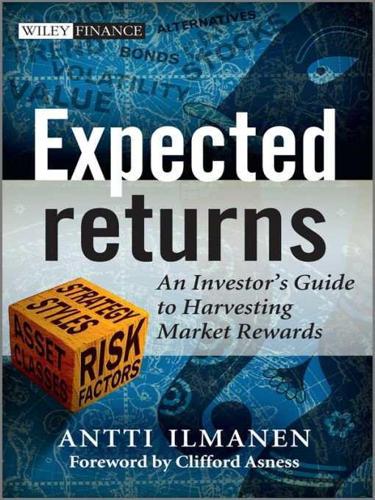
Expected Returns: An Investor's Guide to Harvesting Market Rewards
by
Antti Ilmanen
Published 4 Apr 2011
For example, high levels of disagreement and short-selling constraints together predict relatively low equity returns because overvalued stocks cannot be shorted and tend to be held by the most optimistic investors. Asymmetric information refers to situations in which one party is better informed than the other, leading to so-called principal–agent problems (including moral hazard, adverse selection, conflict of interest). Vayanos–Woolley (2010) show that delegated asset management can cause momentum patterns. As investors (principals) try to learn about a manager’s (agent’s) skill from his past performance and effectively chase returns, the resulting fund flows push prices away from fair values, inducing short-term momentum and long-term reversal patterns. 5.3 DETOUR: A BRIEF SURVEY OF THE EFFICIENT MARKETS HYPOTHESIS Before turning to behavioral finance, it is appropriate to briefly survey the efficient markets hypothesis (EMH).
…
Barring remarkable hubris, no arbitrageur can be completely confident that his model or view is correct. One important implication for long-horizon institutional investors is that when they delegate asset management, external managers may not inherit the ultimate investor’s long horizon. Principal–agent problems shorten horizons from both sides, a phenomenon that can make the long-horizon investor lose his natural edge. Market turmoil in 1998 and 2007–2008 taught us additional features that should discourage arbitrage activities—VaR-based risk management and crowded trade risk:• Risk management systems that make sense for any one investor can increase systemic risk.
…
Investors may be more aware of historical average yield spreads than of historical excess returns; the excess return analysis above is somewhat complex and its unappealing evidence is rarely publicized in Wall Street research. More commonly, we hear how much wider average yield spreads have been than average default losses. The appeal of credit to institutional investors is not universal. Swensen (2009), just to give one example, is highly critical of non-government debt and argues that the principal–agent problems in corporate bonds are underappreciated. Because firm managers’ interests are better aligned with shareholders than with lenders, discretionary management actions are more likely to benefit the former at the expense of the latter. Finally, institutional demand may contribute to overpricing: banks are the largest asset managers and must hold credit risk disproportionately, while insurers often opt for high-yielding assets as long-term investments, adding to the oversubscription of corporate bonds. 10.3 FOCUS ON FRONT-END TRADING—A POCKET OF ATTRACTIVE REWARD TO RISK There is one exception to the disappointing performance of credit.

Unelected Power: The Quest for Legitimacy in Central Banking and the Regulatory State
by
Paul Tucker
Published 21 Apr 2018
Trustees Are Still Agents: Pathologies, Incentives, and Design Whatever their formal status, political scientists have long argued that even if not captured by sectional interests, agency officials are liable to pursue their own interests—whether leisure or power—or their own conception of the public good (or welfare) at the expense of pursuing the public purpose as framed and intended by legislators.23 That is no less true of trustee agents than regular agents, but standard P-A analysis applies in slightly special ways. As economists have documented, any principal-agent problem has three components: incomplete contracts, adverse selection, and moral hazard. Most elementally, a principal cannot write a fully state-contingent contract that determines what should be done in every possible circumstance. They are destined to delegate via incomplete contracts.24 Indeed, for trustee agencies the whole point is to delegate some policy discretion: the contract is incomplete by design.
…
In some countries, famously the US, private sector loans to households to finance the purchase of homes are underwritten by a government agency in order to subsidize home ownership. And many countries have agencies that underwrite the financing of external trade, sometimes through export-import banks. Each of those delegated functions is exposed to the full gamut of principal-agent problems. Debt Management: Executive Agencies in the Fiscal State The goals of government-debt-management agencies are typically purely financial: to minimize (and to control variability in) the cost of servicing the debt over the medium to long run. A political principal might, however, favor a pattern of debt issuance that minimizes debt-servicing costs in the short run, in order to create fiscal space for near-term projects helpful to their political base.
…
If, further, today’s targeted subsidies increase the amount of debt incurred by households or firms, they might contribute to a drag on growth or even a systemic crisis in the financial system or across the economy as a whole. The role played in the Great Financial Crisis by state-sponsored US housing agencies (known as Fannie Mae and Freddie Mac) and by the German Landesbanks testifies to those risks. Standard principal-agent problems infect these functions. Left to elected politicians, it can be attractive to broaden the subsidy during the good times to ensure that as many electors as possible are benefiting or, at least, not feeling left too far behind.3 But delegating to unelected tenured officials is no solution if they are remunerated on the basis of volumes or some measure of short-term profits.
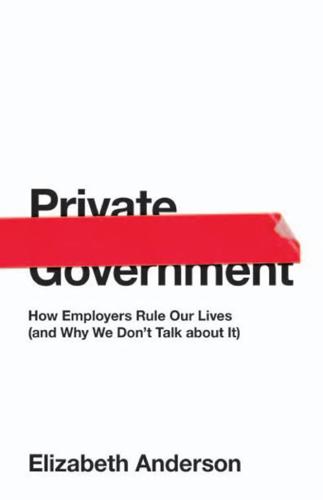
Private Government: How Employers Rule Our Lives (And Why We Don't Talk About It)
by
Elizabeth S. Anderson
Published 22 May 2017
Ibid., III.4.9. 50. Ibid., III.4.10. 51. Ibid., III.4.11–15. 52. Ibid., III.2.6. 53. Ibid., III.2.7. 54. Ibid., III.2.8–13. 55. Ibid., III.4.19. 56. Smith, Wealth of Nations, vol. 2, V.1.E.32. Joint-stock corporations tend to fail because their governance structure cannot solve the principal–agent problem of holding directors accountable to investors. Surveying the history of joint-stock corporations, Smith finds that directors lack expertise, initiative, and energy because they are risking other people’s money, and allow employees to squander the corporation’s resources (ibid., V.1.E.18, 27). 57.

Willful: How We Choose What We Do
by
Richard Robb
Published 12 Nov 2019
See also mercy ambiguity effect, 24 American Work-Sports (Zarnowski), 191 Anaximander, 190 anchoring, 168 angel investors, 212–213n1 “animal spirits,” 169 Antipater of Tarsus, 134–135, 137 “anxious vigilance,” 73, 82 arbitrage, 70, 78 Aristotle, 200, 220n24 Asian financial crisis (1997–1998), 13 asset-backed securities, 93–95 asset classes, 75 astrology, 67 asymmetric information, 96, 210n2 authenticity, 32–37, 114 of challenges, 176–179 autism, 58, 59 auto safety, 139 Bank of New York Mellon, 61 Battle of Waterloo, 71, 205 Bear Stearns, 85 Becker, Gary, 33, 108–109 behavioral economics, 4, 10, 198–199 assumptions underlying, 24 insights of, 24–25 rational choice complemented by, 6 Belgium, 191 beliefs: attachment to, 51 defined, 50 evidence inconsistent with, 54, 57–58 formation of, 53, 92 persistence of, 26–28, 54 transmissibility of, 92–93, 95–96 Bentham, Jeremy, 127, 197–198 “black swans,” 62–64 blame aversion, 57, 72 brain hemispheres, 161 Brexit, 181–185 “bull markets,” 78 capital asset pricing model, 64 care altruism, 38, 104, 108–114, 115, 120, 135, 201 Casablanca (film), 120, 125 The Cask of Amontillado (Poe), 126–127 challenges, 202–203 authenticity of, 176–179 staying in the game linked to, 179–181 changes of mind, 147–164 charity, 40, 45–46, 119, 128 choice: abundance of, 172–174 intertemporal, 149–158, 166 purposeful vs. rational, 22–23 Christofferson, Johan, 83, 86, 87, 88 Cicero, 133–134 Clark, John Bates, 167 cognitive bias, 6, 23, 51, 147–148, 167, 198–199 confirmation bias, 200 experimental evidence of, 10–11, 24 for-itself behavior disguised as, 200–201 gain-loss asymmetry, 10–11 hostile attribution bias, 59 hyperbolic discounting as, 158 lawn-mowing paradox and, 33–34 obstinacy linked to, 57 omission bias, 200 rational choice disguised as, 10–11, 33–34, 199–200 salience and, 29, 147 survivor bias, 180 zero risk bias, 24 Colbert, Claudette, 7 Columbia University, 17 commitment devices, 149–151 commodities, 80, 86, 89 commuting, 26, 38–39 competitiveness, 11, 31, 41, 149, 189 complementary skills, 71–72 compound interest, 79 confirmation bias, 57, 200 conspicuous consumption, 31 consumption planning, 151–159 contrarian strategy, 78 cooperation, 104, 105 coordination, 216n15 corner solutions, 214n8 cost-benefit analysis: disregard of, in military campaigns, 117 of human life, 138–143 credit risk, 11 crime, 208 Dai-Ichi Kangyo Bank (DKB), 12–14, 15, 17, 87, 192–193 Darwin, Charles, 62–63 depression, psychological, 62 de Waal, Frans, 118 Diogenes of Seleucia, 134–135, 137 discounting of the future, 10, 162–164 hyperbolic, 158, 201 disjunction effect, 174–176 diversification, 64–65 divestment, 65–66 Dostoevsky, Fyodor, 18 drowning husband problem, 6–7, 110, 116, 123–125 effective altruism, 110–112, 126, 130, 135–136 efficient market hypothesis, 69–74, 81–82, 96 Empire State Building, 211–212n12 endowment effect, 4 endowments, of universities, 74 entrepreneurism, 27, 90, 91–92 Eratosthenes, 190 ethics, 6, 104, 106–108, 116, 125 European Union, 181–182 experiential knowledge, 59–61 expert opinion, 27–28, 53, 54, 56–57 extreme unexpected events, 61–64 fairness, 108, 179 family offices, 94 Fear and Trembling (Kierkegaard), 53–54 “felicific calculus,” 197–198 financial crisis of 2007–2009, 61, 76, 85, 93–94, 95 firemen’s muster, 191 flow, and well-being, 201–202 Foot, Philippa, 133–134, 135 for-itself behavior, 6–7, 19, 21, 27, 36, 116, 133–134, 204–205, 207–208 acting in character as, 51–53, 55–56, 94–95, 203 acting out of character as, 69, 72 analyzing, 20 authenticity and, 33–35 charity as, 39–40, 45–46 comparison and ranking lacking from, 19, 24, 181 consequences of, 55–64 constituents of, 26–31 defined, 23–24 difficulty of modeling, 204 expert opinion and, 57 extreme unexpected events and, 63–64 flow of time and, 30 free choice linked to, 169–172 in groups, 91–100 incommensurability of, 140–143 in individual investing, 77–78 in institutional investing, 76 intertemporal choice and, 168, 175, 176 job satisfaction as, 189 mercy as, 114 misclassification of, 42, 44, 200–201 out-of-character trading as, 68–69 purposeful choice commingled with, 40–43, 129, 171 rationalizations for, 194–195 in trolley problem, 137 unemployment and, 186 France, 191 Fuji Bank, 14 futures, 80–81 gain-loss asymmetry, 10–11 Galperti, Simone, 217n1 gambler’s fallacy, 199 gamifying, 177 Garber, Peter, 212n1 Germany, 191 global equity, 75 Good Samaritan (biblical figure), 103, 129–130, 206 governance, of institutional investors, 74 Great Britain, 191 Great Depression, 94 Greek antiquity, 190 guilt, 127 habituation, 201 happiness research (positive psychology), 25–26, 201–202 Hayek, Friedrich, 61, 70 hedge funds, 15–17, 65, 75, 78–79, 93, 95 herd mentality, 96 heroism, 6–7, 19–20 hindsight effect, 199 holding, of investments, 79–80 home country bias, 64–65 Homer, 149 Homo ludens, 167–168 hostile attribution bias, 59 housing market, 94 Huizinga, Johan, 167–168 human life, valuation of, 138–143 Hume, David, 62, 209n5 hyperbolic discounting, 158, 201 illiquid markets, 74, 94 index funds, 75 individual investing, 76–82 Industrial Bank of Japan, 14 information asymmetry, 96, 210n2 innovation, 190 institutional investing, 74–76, 82, 93–95, 205 intergenerational transfers, 217n1, 218n4 interlocking utility, 108 intertemporal choice, 149–159, 166 investing: personal beliefs and, 52–53 in start-ups, 27 Joseph (biblical figure), 97–99 Kahneman, Daniel, 168 Kantianism, 135–136 Keynes, John Maynard, 12, 58, 167, 169, 188–189 Kierkegaard, Søren, 30, 53, 65, 88 Knight, Frank, 145, 187 Kranton, Rachel E., 210–211n2 labor supply, 185–189 Lake Wobegon effect, 4 lawn-mowing paradox, 33–34, 206 Lehman Brothers, 61, 86, 89, 184 leisure, 14, 17, 41, 154, 187 Libet, Benjamin, 161 life, valuation of, 138–143 Life of Alexander (Plutarch), 180–181 Locher, Roger, 117, 124 long-term vs. short-term planning, 148–149 loss aversion, 70, 199 lottery: as rational choice, 199–200 Winner’s Curse, 34–36 love altruism, 104, 116, 123–125, 126, 203 lying, vs. omitting, 134 Macbeth (Shakespeare), 63 MacFarquhar, Larissa, 214n6 Madoff, Bernard, 170 malevolence, 125–127 Malthus, Thomas, 212n2 manners, in social interactions, 104, 106, 107, 116, 125 market equilibrium, 33 Markowitz, Harry, 65 Marshall, Alfred, 41, 167 Mass Flourishing (Phelps), 189–191 materialism, 5 merchant’s choice, 133–134, 137–138 mercy, 104, 114–116, 203 examples of, 116–120 inexplicable, 45–46, 120–122 uniqueness of, 119, 129 mergers and acquisitions, 192 “money pump,” 159 monks’ parable, 114, 124 Montaigne, Michel de, 114, 118 mortgage-backed securities, 93 Nagel, Thomas, 161 Napoleon I, emperor of the French, 71 neoclassical economics, 8, 10, 11, 22, 33 Nietzsche, Friedrich, 21, 43, 209n5 norms, 104, 106–108, 123 Norway, 66 Nozick, Robert, 162 observed care altruism, 108–112 Odyssey (Homer), 149–150 omission bias, 200 On the Fourfold Root of the Principle of Sufficient Reason (Schopenhauer), 209n5 “on the spot” knowledge, 61, 70, 80, 94, 205 Orico, 13 overconfidence, 57, 200 “overearning,” 44–45 The Palm Beach Story (film), 7 The Paradox of Choice (Schwartz), 172 parenting, 108, 141, 170–171 Pareto efficiency, 132–133, 136, 139–140 Peirce, Charles Sanders, 53–54, 67, 94 pension funds, 66, 74–75, 93, 95 permanent income hypothesis, 179 Pharaoh (biblical figure), 97–99 Phelps, Edmund, 17, 189–191 Philip II, king of Macedonia, 181 planning, 149–151 for consumption, 154–157 long-term vs. short-term, 148–149 rational choice applied to, 152–158, 162 play, 44–45, 167, 202 pleasure-pain principle, 18 Plutarch, 180–181 Poe, Edgar Allan, 126 pollution, 132–133 Popeye the Sailor Man, 19 portfolio theory, 64–65 positive psychology (happiness research), 25–26, 201–202 preferences, 18–19, 198 aggregating, 38–39, 132, 164 altruism and, 28, 38, 45, 104, 110, 111, 116 in behavioral economics, 24, 168 beliefs’ feedback into, 51, 55 defined, 23 intransitive, 158–159 in purposeful behavior, 25, 36 risk aversion and, 51 stability of, 33, 115, 147, 207, 208 “time-inconsistent,” 158, 159, 166, 203 present value, 7, 139 principal-agent problem, 72 Principles of Economics (Marshall), 41 prisoner’s dilemma, 105 private equity, 75 procrastination, 3, 4, 19, 177–178 prospect theory, 168 protectionism, 185–187 Prussia, 191 public equities, 75 punishment, 109 purposeful choice, 22–26, 27, 34, 36, 56, 133–134, 204–205 altruism compatible with, 104, 113–114, 115–116 commensurability and, 153–154 as default rule, 43–46 expert opinion and, 57 extreme unexpected events and, 62–63 flow of time and, 30 for-itself behavior commingled with, 40–43, 129, 171 mechanistic quality of, 68 in merchant’s choice, 135, 137–138 Pareto efficiency linked to, 132 rational choice distinguished from, 22–23 regret linked to, 128 social relations linked to, 28 stable preferences linked to, 33 in trolley problem, 135–136 vaccination and, 58–59 wage increases and, 187.
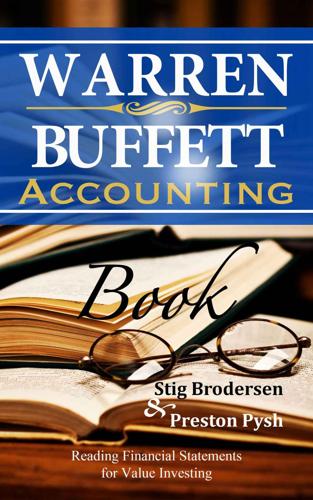
Warren Buffett Accounting Book: Reading Financial Statements for Value Investing (Warren Buffett's 3 Favorite Books)
by
Stig Brodersen
and
Preston Pysh
Published 30 Apr 2014
How much do you think it matters to the agent that the sports star signs with a good team versus the highest-paying team? You guessed it! If the sports star is not paying close attention to the agent’s actions, the agent may act in his own self-interest and not the star’s. In finance and investing, we call this the “principal agent problem.” You, as an investor, are the principal, and you want the management, which is your agent, to act in your interest when running the business. This is not as easy as it sounds. In the business world, the agent is corporate management. The sports star is you, the owner. The corporate management is working for you—plain and simple.

What's Yours Is Mine: Against the Sharing Economy
by
Tom Slee
Published 18 Nov 2015
LAPO was for several years a major partner of “peer-to-peer” lender Kiva, until Kiva cut ties in 2010.33 The episode highlighted a fact that was worrying some observers: “peer-to-peer” lending is not actually peer-to-peer; instead, Kiva works with intermediary partners that in turn make loans that were not, as many thought, interest-free.34 As microfinance grew in scale it has spawned a web of interacting operations. Microfinance funds invest in microfinance institutions that are rated by microfinance rating agencies, and that make loans through other partners. Principal-agent problems become pervasive and, without a regulatory framework, there were incentives everywhere that not only enabled corruption but, Sinclair argues, pushed participants to keep a lid on stories of corruption—to try to fix them quietly rather than to risk the reputation of the broader industry. Taking a charity and turning it into a bank is, as Sinclair says, a great way to build assets and then capitalize on them.

The Rise of the Quants: Marschak, Sharpe, Black, Scholes and Merton
by
Colin Read
Published 16 Jul 2012
In his paper on the subject, “Competitive Equilibrium under Uncertainty,” he also determined the significance of what we now know as a rational expectations equilibrium.1 Radner went on to establish equilibrium under uncertainty in 1968, and thereby proved an assertion that Kenneth Arrow had made but had not proved more than a decade earlier that a competitive market could still be efficient even if the range of futures instruments does not span all possible states.2 Indeed, Marschak and Radner would go on to collaborate in the extension of their models of information and uncertainty to the theory of teams and of decision-making within organizations. This work between Marschak and Radner itself spawned a new literature on organizational theory and on the principal-agent problem that is crucial to our understanding of financial markets. When their work culminated in the seminal book Economic Theory of Teams, published by Yale University Press in 1972, Marschak was in his seventy-fourth year.3 His career had spanned six decades and he had saved some of his most significant work for last.
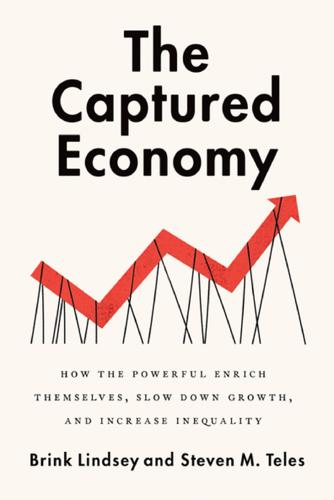
The Captured Economy: How the Powerful Enrich Themselves, Slow Down Growth, and Increase Inequality
by
Brink Lindsey
Published 12 Oct 2017
Around the globe, bigger governments actually seem to do better in controlling corruption and clientelism than smaller ones.15 Beating back rent-seeking here in the United States will sometimes require increasing the size of government; in particular, we will need to increase its analytical capacity and develop forms of government activity that cost taxpayers more up front but that are less susceptible to rent-seeking than those we have today. Yes, rent-seeking is endemic to government, as all human institutions are flawed and subject to principal-agent problems. But some nations—and some states and localities within this country—control those problems much better than others, and their example demonstrates that real improvement is possible. By casting all government as inherently incompetent and corrupt, conservatives enable the very incompetence and corruption they rail against.
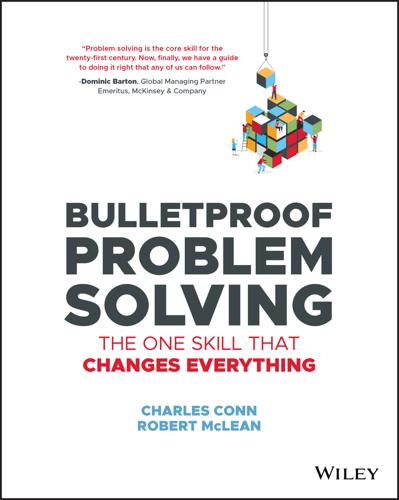
Bulletproof Problem Solving
by
Charles Conn
and
Robert McLean
Published 6 Mar 2019
Are there competitive markets or oligopoly markets controlled by a few players? Each has different dynamics and good business problem solvers build these into their disaggregation and research plans. The kinds of elements here often include assumptions about market share, new product entry, rate of adoption, and price and income elasticities. Principal/Agent: Principal/agent problems occur where certain activities are done by agents (think contractors or employees) on behalf of principals (think investors or managers), and are very common in business. At the core of this kind of problem is the need to create incentive structures to align the interest of the principal and the agent, when the principal has incomplete visibility or control over the work of the agent.

Democratizing innovation
by
Eric von Hippel
Published 1 Apr 2005
Users integrate into the production process itself in a profound way.” Weber’s central thesis is that the open source process is a new way of organizing production: One solution is the familiar economy that depends upon a blend of exclusive property rights, divisions of labor, reduction of transaction costs, and the management of principal-agent problems. The success of open source demonstrates the importance 170 Chapter 12 of a fundamentally different solution, built on top of an unconventional understanding of property rights configured around distribution. . . . And it relies on a set of organizational structures to coordinate behavior around the problem of managing distributed innovation, which is different from the division of labor.
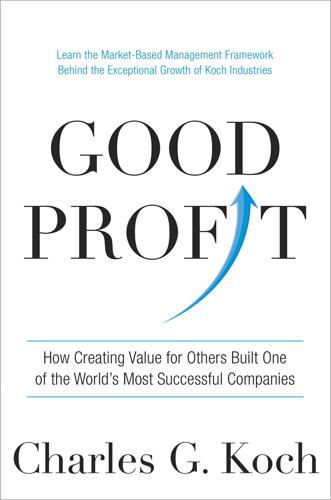
Good Profit: How Creating Value for Others Built One of the World's Most Successful Companies
by
Charles de Ganahl Koch
Published 14 Sep 2015
This practice usually results in removing profitable expenditures and people along with unprofitable ones, leaving the company less profitable overall. Both of these errors create perverse incentives. Perverse incentives are all too common in company/employee relationships. One of the most frequent is known as a principal/agent problem. This problem tends to be created whenever a principal (owner) hires an agent (consultant, broker, or employee). The principal desires the agent to act in the best interest of the principal, while the agent typically wants what is best for herself. These conflicting interests manifest themselves in various ways.

The Inequality Puzzle: European and US Leaders Discuss Rising Income Inequality
by
Roland Berger
,
David Grusky
,
Tobias Raffel
,
Geoffrey Samuels
and
Chris Wimer
Published 29 Oct 2010
The Board and the remuneration committee set executive compensation, and it is the much more complicated issue of corporate governance that deserves more public attention. The ultimate principals, of course, are the shareholders, but the complexities are such that it is much easier to broadcast segments about CEO paychecks than discuss corporate governance issues. Five Principles for Moving Forward 207 The principal-agent problem, where the agent acts as the principal rather than advancing the interests of the owner, is neither unique to CEOs and business, nor is it a contemporary issue. Ancient Roman legislators in various periods, avowedly voting in the interests of the people, craftily, and sometimes quite openly, promoted their own interests.
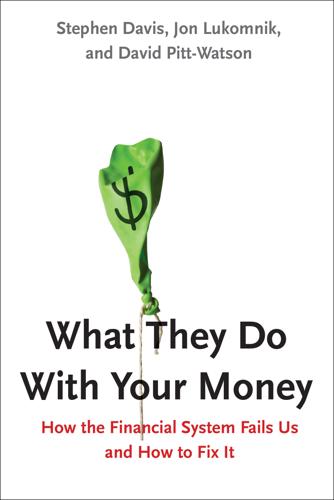
What They Do With Your Money: How the Financial System Fails Us, and How to Fix It
by
Stephen Davis
,
Jon Lukomnik
and
David Pitt-Watson
Published 30 Apr 2016
Another reason solutions have been lacking is that our economic models have become too narrow. Under certain assumptions, any transaction between a willing buyer and a willing seller will benefit both. But in the real world, those assumptions don’t always apply. As we shall see in chapter 6, “externalities,” principal-agent problems, and behavioral biases all combine to create a more complex world than exists in most economics journals. We do not mean to suggest that atomized regulation should be abandoned. But by combining it with a systemic approach, we could allow traditional command-and-control regulation to address major abuses and stop bad practices, while designing the institutions of market-based self-policing for continuous self-correction.
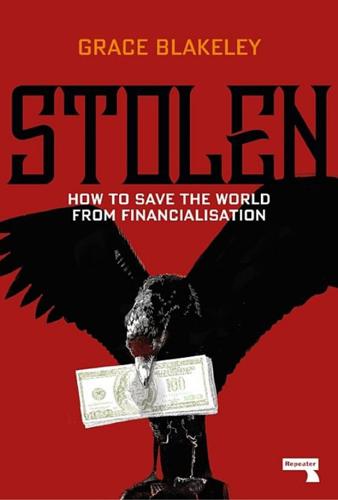
Stolen: How to Save the World From Financialisation
by
Grace Blakeley
Published 9 Sep 2019
As a result, it quickly colonised management theory and practice, transforming corporate governance by changing managers’ incentives to ensure that they acted as reliable functionaries for the owners of capital. Contrary to the arguments of mainstream economists, this political reorganisation of the firm has made firms less efficient when it comes to their use of society’s scarce resources. In the late 1970s, professors Meckling and Jensen published an article arguing that there existed a “principal-agent problem” between the individuals who owned a corporation and those who managed it.39 Those who ran companies — managers, the agents in this context — had every incentive to maximise their own pay packages and engage in “empire building” to increase their power, even if this wasn’t in the long-term interest of the people who owned companies — shareholders, the principals.
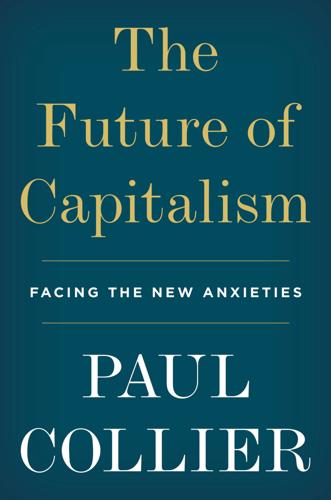
The Future of Capitalism: Facing the New Anxieties
by
Paul Collier
Published 4 Dec 2018
Were the total amount of consumption in society fixed, the maximization of utility would be a simple matter of redistributing income so that consumption was perfectly equal. Social-democrat economists recognized that the consumption ‘pie’ was not a fixed size and, since taxation would discourage work, the pie would shrink. Advanced theories of ‘optimal taxation’, and ‘the principal–agent problem’ were developed to address the incentive problem. In essence, social-democratic public policies became increasingly sophisticated ways of using taxation to redistribute consumption while minimizing disincentives to work. It was soon proved that there was no mechanical way of moving from individual ‘utilities’ to statements about the well-being of society that met even basic rules of intellectual coherence.

Jared Bibler
by
Iceland's Secret The Untold Story of the World's Biggest Con-Harriman House (2021)
These European market abuse laws were designed for activity in only a few trades or within one day, so any one of these days on its own could constitute its own market abuse case. The law was apparently never written to imagine organized market abuse carried out by a large number of individuals acting in concert over a long period of time. Agency fraud refers to the age-old principal-agent problem: if you are the agent for a principal and you abuse that agency, then this is agency fraud under Icelandic law. To take a more concrete example, if you are the manager of a company and you use that company to benefit yourself rather than to benefit the owner of the company, that could be charged as agency fraud. 84 And this may be understating the true size of the bank’s purchases of its own shares, because the bank was likely also using other brokers and intermediaries in Iceland to purchase even more of its own shares through these parallel channels. 85 Hæstiréttur Íslands, case number 145/2014.
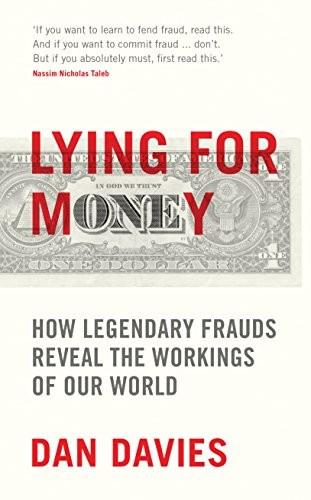
Lying for Money: How Fraud Makes the World Go Round
by
Daniel Davies
Published 14 Jul 2018
The price mechanism and decentralised markets work to use private information at the firm level, but within the firms, managers are as blind as Soviet central planners ever were. The problem of trying to make sure your desired outcome happens when you can’t directly monitor the person responsible for doing it is, in the most general terms possible, known as the principal/agent problem, and something like three or four Nobel Prizes in economics (Mirlees, Tirole and at least half each of Meade and Hanson) have been given out for progress in tackling various versions of it. The basic idea is usually to create something which works a bit like a price signal, to allow the private information to be revealed, and then to design a contract based on this price signal which aligns the incentives of the ‘agent’ (the employee) with those of the ‘principal’ (the manager or owner) as much as possible.
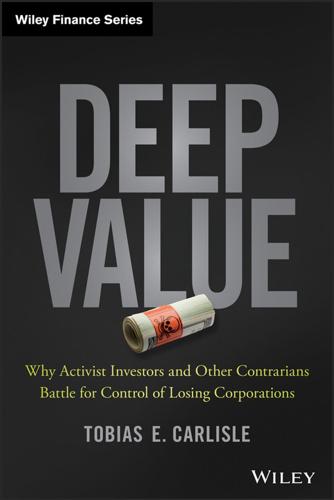
Deep Value
by
Tobias E. Carlisle
Published 19 Aug 2014
He saw deep undervaluation as a prod impelling shareholders to “raise the question whether it is in their interest to continue the business,” and “management to take all proper steps to correct the obvious disparity between market quotation and intrinsic value, including a reconsideration of its own policies and a frank justification to the stockholders of its decision to continue the business.”25 Graham published Security Analysis just two years after Berle and Means, who had identified the principal-agent problem in public corporations, released their work. He cited Berle and Means’s work with some agitation. They had submitted that it was “apparent to any thoughtful observer” that the effect of the separation of ownership and control was that the corporation had ceased to be a “private business device” and had become a public “institution:”26 [The] owners of passive property, by surrendering control and responsibility over the active property, have surrendered the right that the corporation should be operated in their sole interest—they have released the community from the obligation to protect them to the full extent implied in the doctrine of strict property rights.
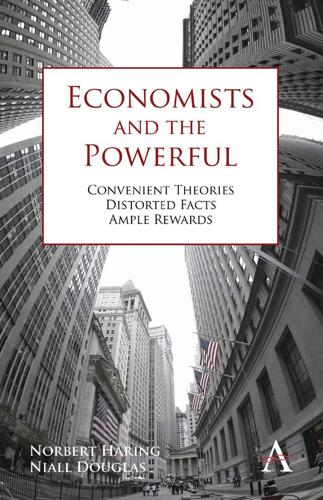
Economists and the Powerful
by
Norbert Haring
,
Norbert H. Ring
and
Niall Douglas
Published 30 Sep 2012
Often, the CEO also presides over the board. Board members or directors can be current or past managers of the corporation or they can come from outside. Among the external directors, there are some who qualify as independent directors, meaning that they have no close personal ties to the CEO. The principal–agent problem of shareholders with regard to CEOs would be less severe if boards would fulfill their task of controlling the CEO. Instead, boards tend to be controlled by the very CEO they are supposed to supervise. The consequences extend far beyond executives setting their own pay level using other people’s money.
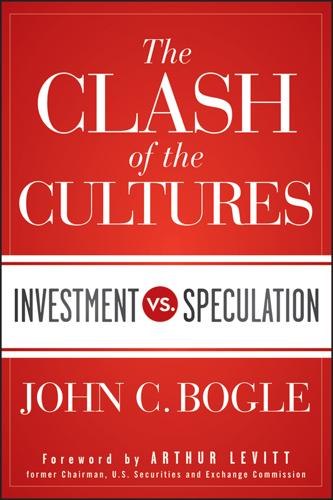
The Clash of the Cultures
by
John C. Bogle
Published 30 Jun 2012
As ownership was gradually diffused into far smaller shareholdings, however, effective shareholder power declined, even as the latent power of those voting rights remained intact. Agency Costs and Managerial Behavior In 1976, another pair of wise academics—Harvard Business School’s Michael C. Jensen and University of Rochester’s William H. Meckling—added another brilliant insight on corporate behavior. “America has a principal/agent problem,” as The Economist explained their seminal paper. “Agents (i.e., managers) were feathering their own nests rather than the interests of their principals (shareholders).” In “Theory of the Firm: Managerial Behavior, Agency Costs, and Ownership Structure,” Jensen and Meckling set forth “a theory of (1) property rights, (2) agency, and (3) finance (as they relate to) the ownership structure of the firm.”

The Economics of Enough: How to Run the Economy as if the Future Matters
by
Diane Coyle
Published 21 Feb 2011
Neither form of organization can deliver good results in contexts where there is asymmetric information, meaning that one person knows something that others cannot monitor in any way—for example, how much effort they’re putting in to their work, or how hard a task requiring certain skills actually is to carry out (think about calling a plumber to fix a leak—you have to trust his diagnosis; likewise with doctors or teachers). That asymmetry will often be linked to a principal-agent problem: public sector workers (agents) are carrying out tasks for citizens and taxpayers (principals), in the way that corporate managers are working for shareholders. The advantage in those relationships is on the side of the agents. Whether a certain task is in the public or private sector will not change the information structure.

The Ascent of Money: A Financial History of the World
by
Niall Ferguson
Published 13 Nov 2007
In turn, Indian textiles could be traded for pepper and spices from the Pacific islands, which could be used to purchase precious metals from the Middle East.31 Later, the Company provided financial services to other Europeans in Asia, not least Robert Clive, who transferred a large part of the fortune he had made from conquering Bengal back to London via Batavia and Amsterdam.32 As the world’s first big corporation, the VOC was able to combine economies of scale with reduced transaction costs and what economists call network externalities, the benefit of pooling information between multiple employees and agents.33 As was true of the English East India Company, the VOC’s biggest challenge was the principal-agent problem: the tendency of its men on the spot to trade on their own account, bungle transactions or simply defraud the company. This, however, was partially countered by an unusual compensation system, which linked remuneration to investments and sales, putting a priority on turnover rather than net profits.34 Business boomed.

Machine, Platform, Crowd: Harnessing Our Digital Future
by
Andrew McAfee
and
Erik Brynjolfsson
Published 26 Jun 2017
. ¶¶ For example, Oliver Hart and Bengt Holmstrom, The Theory of Contracts, MIT Department of Economics Working Paper 418 (March 1986), https://dspace.mit.edu/bitstream/handle/1721.1/64265/theoryofcontract00hart.pdf%3Bjsessionid%3DD2F89D14123801EBB5A616B328AB8CFC?sequence%3D1. Holmström’s earlier, pathbreaking work on the “principal-agent problem” (Bengt Holmström, “Moral Hazard and Observability,” Bell Journal of Economics 10, no. 1 [1979]: 74–91, http://www.jstor.org/stable/3003320), provided a foundation for a large subsequent economic literature on the economics of incentive contracts, including incomplete contracts theory. As Holmström and Paul Milgrom noted, the firm itself, including all its rules and norms, can be usefully thought of as an incentive system.

The Market for Force: The Consequences of Privatizing Security
by
Deborah D. Avant
Published 17 Oct 2010
This choice, however, can disperse control to different entities – or multiple principals – with separate and competing controls over violence.114 If the state still controls personnel but transnational actors control budgetary incentives, and the two do not coordinate their direction of forces, the competition between these “principals” can result in less effective forces, in forces that become 112 113 114 Finnemore and Sikkink, “International Norms Dynamics,” p. 895; Paul DiMaggio and Walter Powell, “The Iron Cage Revisited: Institutional Isomorphism and Collective Rationality in Organizational Fields,” in Paul DiMaggio and Walter Powell, eds., The New Institutionalism in Organizational Analysis (Chicago: University of Chicago Press, 1991). See Tornquist, “Rent Capitalism, State, and Democracy”; Karl, Paradox of Plenty; Clark, “Petro-Politics in Congo”; Skocpol, “Rentier State and Shi’a Islam in the Iranian Revolution.” For analyses of both economic and sociological approaches to principal-agent problems, see John Pratt and Richard Zeckhauser, Principals and Agents: the Structure of Business (Harvard: Harvard Business School Press, 1985). For the consequences of multiple principles, see Bendor, Taylor, and van Gaalen, “Stacking the Deck”; Jonathan Bendor, J. Glazer, and T. Hammond, “Theories of Delegation,” Annual Review of Political Science Vol. 4, No. 1 (2001): 235–69.
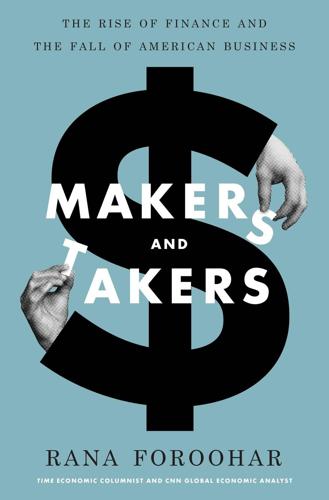
Makers and Takers: The Rise of Finance and the Fall of American Business
by
Rana Foroohar
Published 16 May 2016
They’re not going to go against their buddy [the CEO] who put them there.”39 That’s often true, but the real reason that corporate governance in this country isn’t stronger is that all the incentive structures for board members and CEOs alike are working against long-term decision making. It’s an issue called the “principal-agent problem” in academic circles. The collusion isn’t so much between the CEO and his golf buddies as it is between corporate executives and financiers. CEOs today have every reason to bolster short-term share price value, as the Street wants them to, because it will also result in higher compensation for them, since most executives receive the bulk of their compensation in stock options.
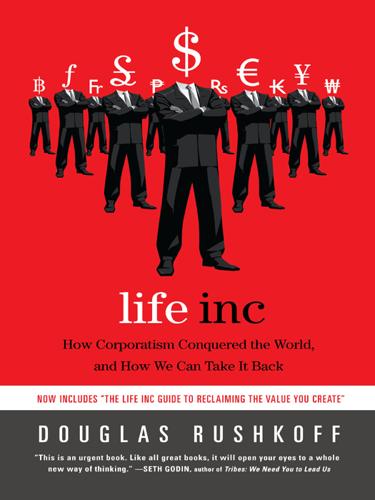
Life Inc.: How the World Became a Corporation and How to Take It Back
by
Douglas Rushkoff
Published 1 Jun 2009
Norton & Company, 1994). 8 A Child Is Born For a comparison of perspectives on the agendas behind the birth of the corporation, refer to the following scholarly books and articles that formed the basis for my own inquiry: George Cawston and A. H. Keane, The Early Chartered Companies: 1296-1858 (New York: Burt Franklin, 1968). Ann M. Carlos, “Principal-Agent Problems in Early Trading Companies: A Tale of Two Firms,” The American Economic Review 82.2 (1992): 140-45. Ann M. Carlos and Stephen Nicholas, “Giants of an Earlier Capitalism: The Chartered Trading Companies as Modern Multinationals,” The Business History Review 62.3 (1988): 398-419. Ann M. Carlos and Stephen Nicholas, “Agency Problems in Early Chartered Companies: The Case of the Hudson’s Bay Company,” The Journal of Economic History 50.4 (1990): 853-75.
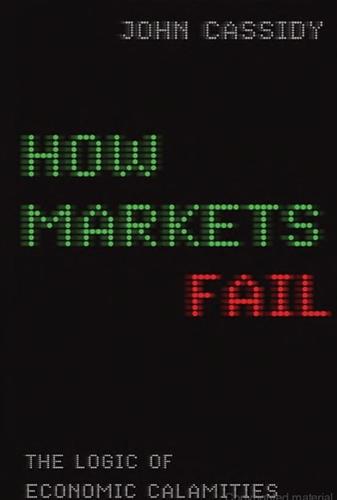
How Markets Fail: The Logic of Economic Calamities
by
John Cassidy
Published 10 Nov 2009
During the 1960s and ’70s, many commentators and investors expressed concern that CEOs were more interested in building up personal fiefdoms, complete with lavish headquarters, plush corporate resorts, and private jets, than in acting in the interests of shareholders. In an extremely influential paper published in 1976, Michael Jensen, now of Harvard, and the late William Meckling depicted the relationship of CEOs and stockholders as a “principal-agent” problem, a dilemma that arises, to some extent, whenever one party (the principal) employs another (the agent) to do a job. As anybody who has hired a contractor knows, it can be difficult to monitor an agent’s behavior: the contractor may say he is working diligently, but is he telling the truth?
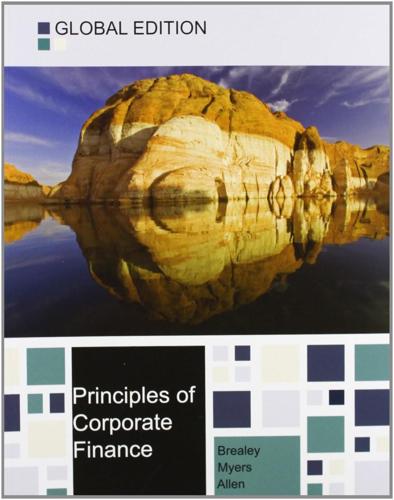
Principles of Corporate Finance
by
Richard A. Brealey
,
Stewart C. Myers
and
Franklin Allen
Published 15 Feb 2014
If the firm invests at a return lower than the opportunity cost of capital, stock price falls. Managers are not endowed with a special value-maximizing gene. They will consider their own personal interests, which creates a potential conflict of interest with outside shareholders. This conflict is called a principal–agent problem. Any loss of value that results is called an agency cost. Investors will not entrust the firm with their savings unless they are confident that management will act ethically on their behalf. Successful firms have governance systems that help to align managers’ and shareholders’ interests.
…
Managers have no special gene that automatically aligns their personal interests with outside investors’ financial objectives. So how do shareholders ensure that top managers do not feather their own nests or grind their own axes? And how do top managers ensure that middle managers and employees try as hard as they can to find and execute positive-NPV projects? Here we circle back to the principal–agent problems first raised in Chapter 1. Shareholders are the ultimate principals; top managers are the stockholders’ agents. But middle managers and employees are in turn agents of top management. Thus senior managers, including the chief financial officer, are simultaneously agents vis-à-vis shareholders and principals vis-à-vis the rest of the firm.
…
Present value of growth opportunities (PVGO) Net present value of investments the firm is expected to make in the future. Primary issue Issue of new securities by a firm (cf. secondary issue). Prime rate Benchmark lending rate set by U.S. banks. Principal Amount of debt that must be repaid. Principal–agent problem Problem faced by a principal (e.g., shareholder) in ensuring that an agent (e.g., manager) acts on his or her behalf. Private equity Equity that is not publicly traded and that is used to finance business start-ups, leveraged buyouts, etc. Private placement Issue of bonds or stock that is placed privately with a few investors and is not then publicly traded.

India's Long Road
by
Vijay Joshi
Published 21 Feb 2017
It has become clear that in the real world the investment interdependency argument can, for the most part, only justify ‘indicative planning’. (The argument for indicative planning is probably strongest in coordinating investments, public and private, in infrastructure networks.) The government also suffers from a ‘principal-agent problem’. Its functionaries (legislators, bureaucrats) may pursue their own agendas rather than act in the public interest. They may shirk their duties or feather their own nests. They may make deals that benefit special-interest groups at the expense of the general good. State intervention can also cause losses due to ‘rent-seeking’.

More: The 10,000-Year Rise of the World Economy
by
Philip Coggan
Published 6 Feb 2020
Of course, the rich still have a much bigger stake in the stock market than do the poor, but ordinary workers may well own “capital” in the form of an entitlement to a pension, or savings in a collective fund that they use to plan for long-term commitments, such as a child’s wedding. One of the issues with which modern economics grapples is the “principal–agent” problem, in which the interests of owners and intermediaries are imperfectly aligned. This can be true both of executives, who have an incentive to boost their salary and perks at the expense of the shareholders, and of fund managers, who have the incentive to pursue short-term returns to ensure that they retain clients.

Corporate Warriors: The Rise of the Privatized Military Industry
by
Peter Warren Singer
Published 1 Jan 2003
Similarly, during the French and Indian War, the two sides employed one of the most clear-cut schemes for generating performance incentives among their hired Indian allies b> offering piece rates, whereby a bounty was paid for human scalps. But. even this straightforward system failed to solve the principal-agent problem in the mercenary market. Doubts arose as U> whether the scalps all came from the heads of enemies, or as "the scalp of a Frenchman was not distinguishable from the scalp of an Englishman, and could be had with less trouble." Francis Parkman, France and England in North America (New York: Library of America, 1983). 2:217. 37.

Spies, Lies, and Algorithms: The History and Future of American Intelligence
by
Amy B. Zegart
Published 6 Nov 2021
McCubbins, “Legislative design of regulatory structure,” 728. 68. Terry M. Moe, “The Politics of Bureaucratic Structure,” in Can the Government Govern? edited by J. E. Chubb and P. E. Peterson (Washington, D.C.: Brookings Institution Press, 1989). 69. Economists call these situations “principal–agent” problems. One party, the principal, delegates authority to an agent. Often, the interests of principals and agents diverge. Particularly in situations where the principal cannot observe the agent, shirking becomes likely. 70. Quoted in U.S. Senate Select Committee on Intelligence, Hearing on Congressional Oversight of Intelligence Activities (hereafter SSCI Hearing), 110th Cong., 1st sess., November 13, 2007. 71.
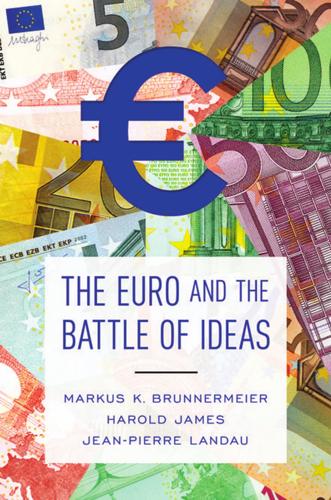
The Euro and the Battle of Ideas
by
Markus K. Brunnermeier
,
Harold James
and
Jean-Pierre Landau
Published 3 Aug 2016
French banks became very dependent on dollar funding from US money market funds. In Germany, some of the most costly problems appeared in the Landesbanken.6 Public sector banks, such as the Landesbanken in Germany, became active players in the modern banking landscape. Such banks have special principal-agent problems: with their downside risk limited by extensive public guarantees, bank managers have an incentive to take on excessive risks to generate short-term profits. In the Asia crisis of 1997–1998, it was the Landesbanken rather than the larger private banks in Germany that had exposure to Korean chaebols.

Unfinished Empire: The Global Expansion of Britain
by
John Darwin
Published 12 Feb 2013
From the 1850s the spreading network of telegraphs and submarine cables allowed vital price information to be gathered with revolutionary speed: a transatlantic cable was laid in 1866; by the 1870s India, Southeast Asia and even Australia were connected to London. Even so, in the City of London as everywhere else, much commercial intelligence spread by word of mouth, as it had always done. The second great problem was trust – what economists call the ‘principal-agent problem’. Most commercial transactions required a long chain of contacts between producer and consumer. A merchant in London needed reliable overseas agents just to make sure that his goods arrived safely, were sold at a fair price, the payment collected and the return goods dispatched. His men on the spot had to deal with another long chain of debtors and creditors, suppliers and salesmen, often in places where legal enforcement was the wildest of dreams and the language barrier Himalayan.17 They often had little choice but to find local-born intermediaries – compradors in China (the name reflects the older Portuguese presence), dubashes (i.e.

Deep Utopia: Life and Meaning in a Solved World
by
Nick Bostrom
Published 26 Mar 2024
This dynamic, in which some agent-like part is created in order to help a greater whole achieve some objective, and where the subagent then gradually develops its own agenda and begins to pursue its own goals even when they no longer serve the original larger objective, is very common. Not only in state bureaucracies but in many other organizations too. * * * Returning to the individual case, we may wonder why intrinsification should occur? Whereas in the organizational case we might explain the phenomenon by appealing to principal-agent problems, in the individual case it would seem that some different explanation is needed for why we would exhibit a psychological tendency that on its face may appear quite irrational. I mean, if something is desirable as a means to an end, why not keep valuing it for purely instrumental reasons?

Antifragile: Things That Gain From Disorder
by
Nassim Nicholas Taleb
Published 27 Nov 2012
It is easy to assess iatrogenics when the surgeon amputates the wrong leg or operates on the wrong kidney, or when the patient dies of a drug reaction. But when you medicate a child for an imagined or invented psychiatric disease, say, ADHD or depression, instead of letting him out of the cage, the long-term harm is largely unaccounted for. Iatrogenics is compounded by the “agency problem” or “principal-agent problem,” which emerges when one party (the agent) has personal interests that are divorced from those of the one using his services (the principal). An agency problem, for instance, is present with the stockbroker and medical doctor, whose ultimate interest is their own checking account, not your financial and medical health, respectively, and who give you advice that is geared to benefit themselves.

The Origins of Political Order: From Prehuman Times to the French Revolution
by
Francis Fukuyama
Published 11 Apr 2011
Ministers objected to policies proposed by their boss, or quietly failed to implement them. Of course, Chinese rulers had certain tools that modern executives don’t: they could administer vicious floggings on the bare buttocks of even their most senior ministers, or casually imprison or execute them.15 But this kind of coercive solution to the principal-agent problem didn’t solve the underlying issue of information. Bureaucrats often didn’t carry out the wishes of their leader because they had better knowledge of the real conditions of the empire—and could hide their activity from him. A large country like China had to be governed by delegation to local authorities, but then these local authorities would commit abuses, become corrupt, or even conspire against the central government.

Escape From Rome: The Failure of Empire and the Road to Prosperity
by
Walter Scheidel
Published 14 Oct 2019
An inquiry into the nature and causes of the wealth of nations, vol. 2. London: Strahan. Smith, Christopher. 1996. Early Rome and Latium: Economy and society c. 1000–500 B.C. Oxford: Oxford University Press. Smith, Michael E. 2000. “Aztec city-states.” In Hansen 2000a, 581–95. Sng, Tuan-Hwee. 2014. “Size and dynastic decline: The principal-agent problem in late imperial China, 1700–1850.” Explorations in Economic History 54: 107–27. So, Billy K. L. 2000. Prosperity, region, and institutions in maritime China: The South Fukien pattern, 946–1368. Cambridge, MA: Harvard University Press. Soucek, Svat. 1994. “Piri Reis and Ottoman discovery of the great discoveries.”

Public Places, Urban Spaces: The Dimensions of Urban Design
by
Matthew Carmona
,
Tim Heath
,
Steve Tiesdell
and
Taner Oc
Published 15 Feb 2010
Designers are thus indirectly charged with representing users' and the general public’s views within the producer side of the development process. Bentley (1999) conceptualises the interaction of different development actors, particularly the developer and the designer, and suggests a series of metaphors – ‘heroic form-giver’, ‘master and servant’, ‘market signals’ and ‘battlefield’ (see Table 10.5). Due to principal-agent problems, Bentley favours the battlefield metaphor in which actors negotiate, scheme and plot with and against other development actors to achieve the design/built form they want and in which the character, personality and interpersonal skills of the various actors are crucially important. TABLE 10.5 Metaphors of the Developer–Designer Relation Source: Adapted from (Bentley 1999).MetaphorThemeCommentary Heroic form-giver Development form is generated through the creative efforts of particular development actors (e.g. architects).